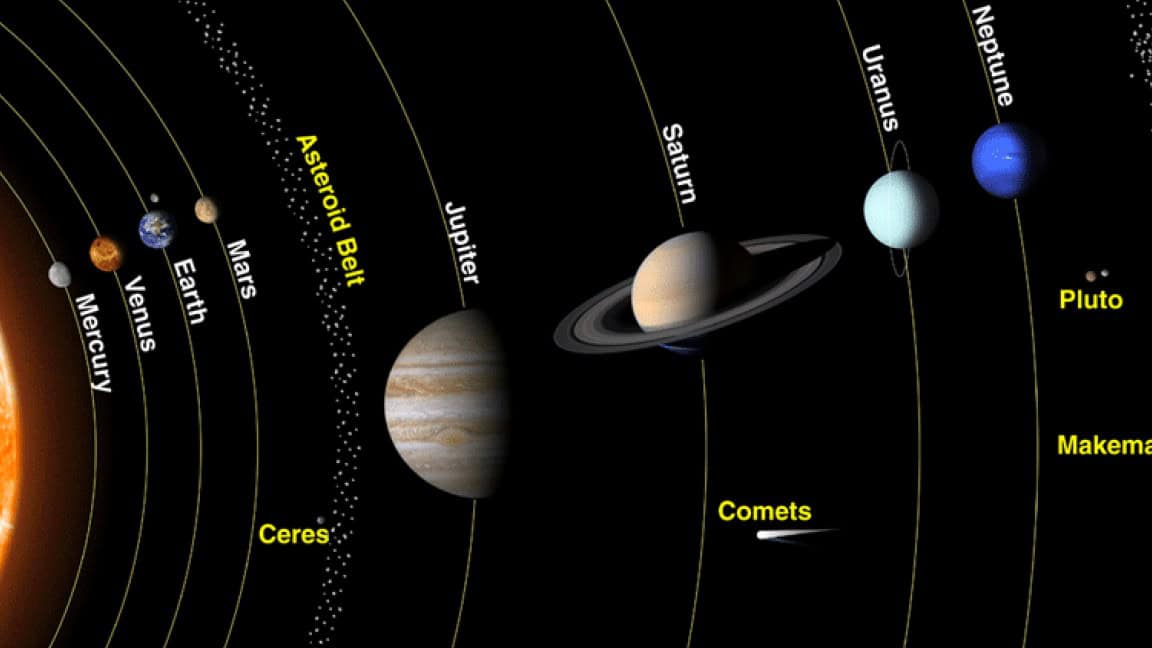The sun is at the center of the solar system, which consists of various celestial bodies including planets, moons, asteroids, comets, dust, and gas. Among these, there are several planets that revolve around the sun. These include the rocky planets Mercury, Venus, Earth, and Mars, as well as the gas giants Jupiter and Saturn. Additionally, there are also the ice giants Uranus and Neptune. Furthermore, located between Mars and Jupiter, there exists a group of asteroids called the asteroid belt. Furthermore, beyond Neptune, there are small icy bodies like Pluto and comets. Altogether, the total count of planets revolving around the sun is quite remarkable.
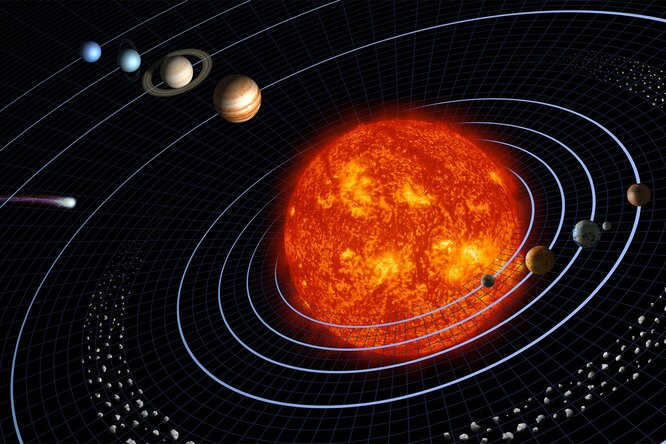
What is the age of our solar system?
Approximately 4.6 billion years ago, the Solar Nebula, a massive cloud of gas and dust, collapsed inward and initiated the formation of the Sun and the planets within our solar system. Scientists have utilized meteorites, fragments of space rocks that have landed on Earth, to determine the age of our solar system. These small fragments can originate from moons or planets and offer valuable scientific insights into the chemistry and history of their celestial bodies. Additionally, some meteorites have been journeying through our solar system since its inception, predating the formation of planets. The Allende meteorite, for instance, descended to Earth in 1969 and disintegrated over Mexico. It holds the distinction of being the oldest known meteorite, dating back 4.55 billion years.
What was the formation process of the solar system?
The solar system is believed to have originated from the collapse of the Solar Nebula, which occurred as a result of a neighboring supernova star exploding. According to this theory, the explosion emitted shock waves that propelled the nebula’s components closer to each other, ultimately leading to its collapse. Previous findings indicate that the supernova might have also introduced particles into the nebula, such as aluminum-26, an element typically produced in stellar cores, suggesting the influence of nearby supernovae.
While most asteroids orbit the Sun in a counterclockwise direction, scientists have recently identified a peculiar object named Bee-Zed that exhibits unusual behavior.
The Sun
The University of California, San Diego states that the Sun is positioned at the heart of the solar system and is the largest entity within it, constituting approximately 99.8% of the solar system’s total mass. The Sun is an immense fiery sphere fueled by nuclear reactions, providing the crucial energy that sustains life on our planet. NASA reveals that this luminous celestial body, often referred to as a yellow dwarf, is comprised of gas, with hydrogen making up around 91% and helium accounting for 8.9%. In comparison to other stars, the Sun is relatively diminutive, being just one of countless billions of stars present in our home galaxy, known as the Milky Way.
NASA further informs that the Sun is situated roughly 26,000 light-years away from the center of the Milky Way galaxy. The Milky Way is a spiral galaxy featuring gracefully arched arms composed of stars emanating from its core. Our Solar System is positioned within one of the smaller arms, specifically referred to as the Orion-Swan arm, or more simply, the Orion arm.
Why was Pluto reclassified as a dwarf planet?
In 2006, Pluto, which was previously acknowledged as the ninth planet in our solar system, was reclassified as a dwarf planet. This was due to its failure to meet one of the criteria for being considered a planet. According to the International Astronomical Union’s definition, a planet is defined as “a celestial body that orbits the Sun, has enough gravitational force to assume a spherical or nearly spherical shape, and has cleared its orbit of other objects.” Unfortunately, Pluto did not satisfy the last requirement, leading to its reclassification as a dwarf planet.
There are some astronomers who argue that the exclusion of Pluto is unjust and that Pluto should regain its status as the ninth planet in the solar system. After examining historical literature, Philip Metzger, a planetologist at the University of Central Florida, discovered that the “orbit clearing” rule was only mentioned in one article from 1801 prior to the 2006 decision. Metzger and his colleagues concluded that this rule excluding Pluto was “random and not based on historical precedent,” and therefore, Pluto should still be considered a planet.
Pluto, which was named after the Roman god of the underworld, is situated in the expansive Kuiper belt, a region beyond Neptune that contains countless icy objects.
Planet X
There is a potential contender for Pluto’s position as the ninth planet: Planet X or Planet Nine. In a 2016 study, astronomers Mike Brown and Konstantin Batygin from the California Institute of Technology proposed the idea that a planet ten times the size of Earth could revolve around the sun approximately twenty times farther away than Neptune.
“All those individuals who are upset about Pluto no longer being classified as a planet can take solace in the fact that there is a genuine planet that has yet to be discovered,” stated Brown at the time. “Now we have the opportunity to search for that planet and restore the solar system to having nine planets once again.” However, the existence of Planet Nine is still purely theoretical, as NASA has not directly observed the planet.
© 2007 – 2023 “Fashion Press” Ltd.
The User, by uploading content to the Website, gives “Fashion Press” LLC the non-exclusive permission to utilize, duplicate, distribute, generate derivative works, and publicly exhibit the content without any cost.
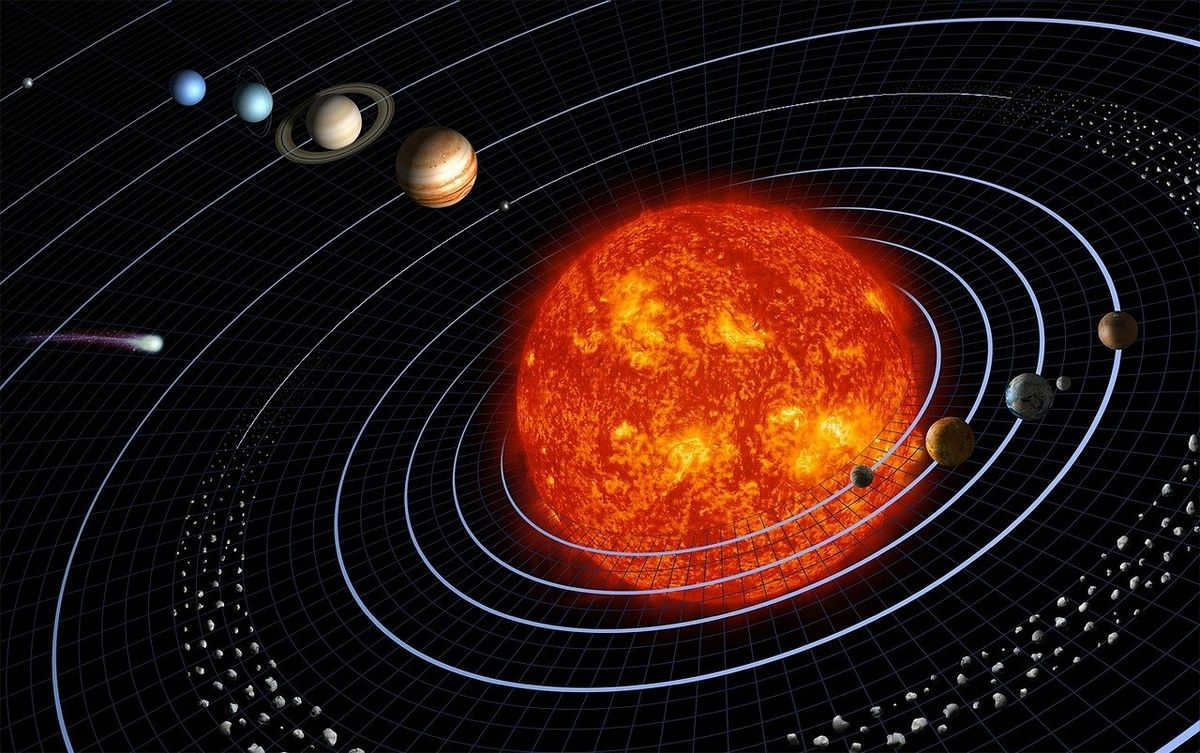
The solar system serves as the birthplace of humanity, yet its depths remain largely uncharted. Within its celestial expanse lie countless enigmas and captivating narratives, with a significant portion still awaiting discovery.
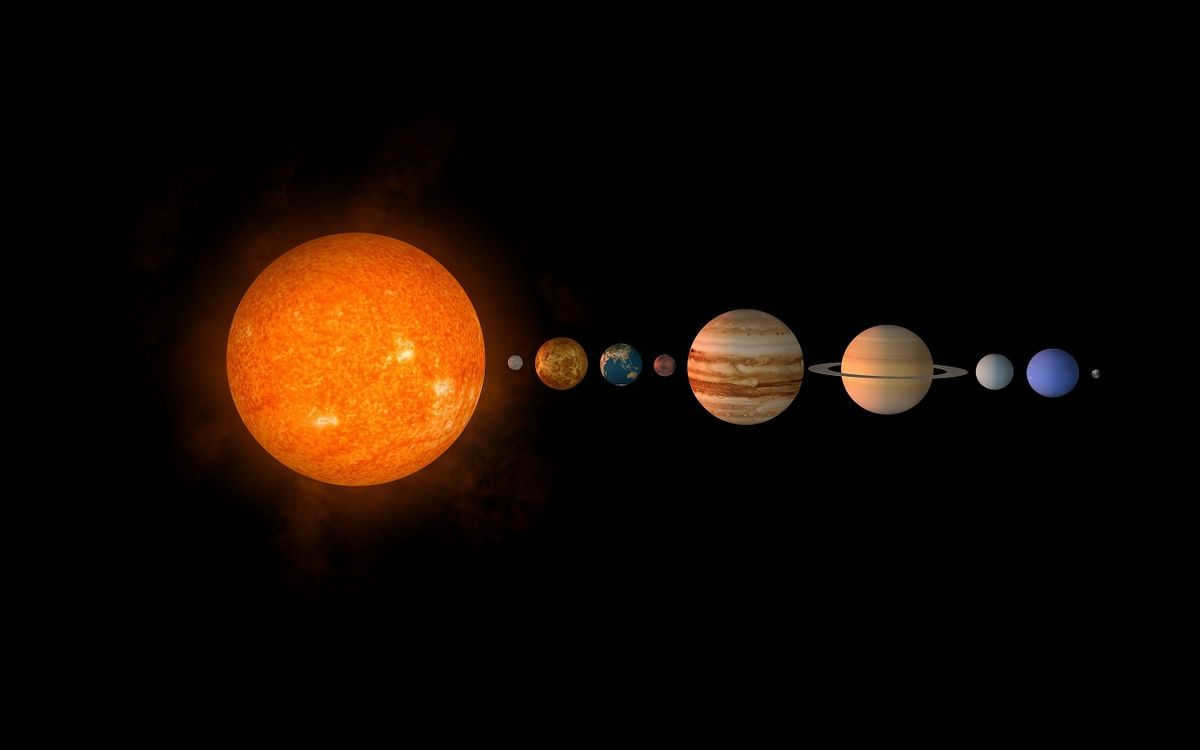
What defines a planet?
Over time, the definition of a planet has evolved, with the most recent revision occurring in 2006 during a gathering of the International Astronomical Union.
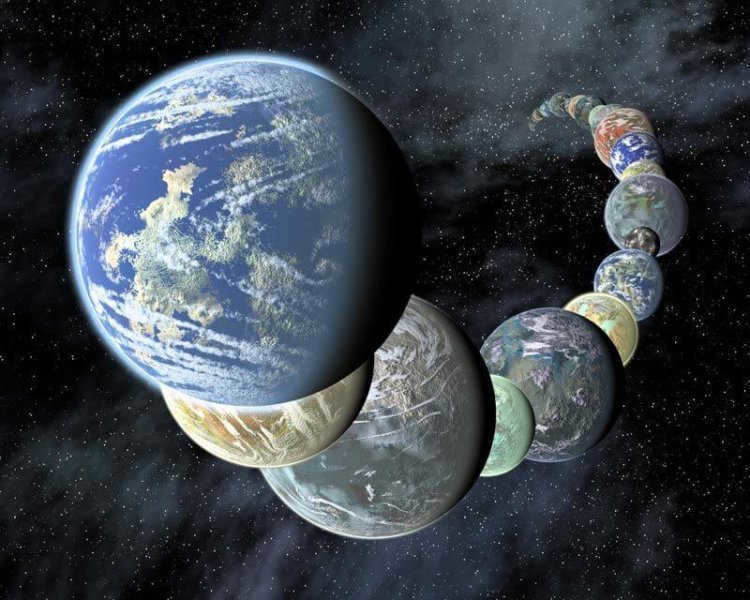
The term “planet” originates from the Greek word “planetes”, which translates to “wanderer”. During ancient times, astronomers lacked the ability to differentiate between stars and planets, leading them to label all celestial bodies that exhibited movement as such.
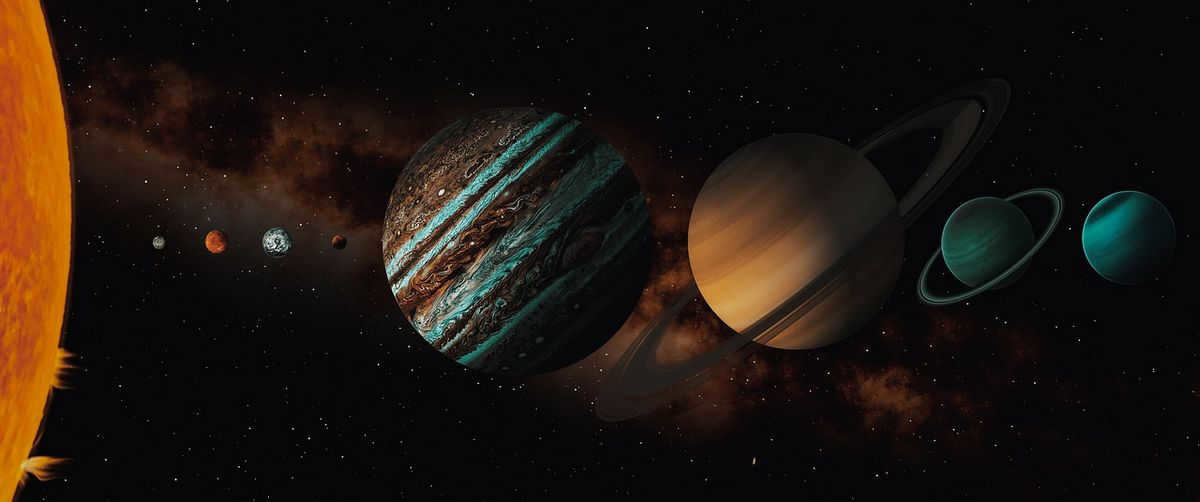
A planet is a celestial body that has sufficient mass to form a nearly spherical shape. It orbits around a star in a stable trajectory, without any interference from other celestial bodies. Additionally, a planet is not considered a satellite of any other object.
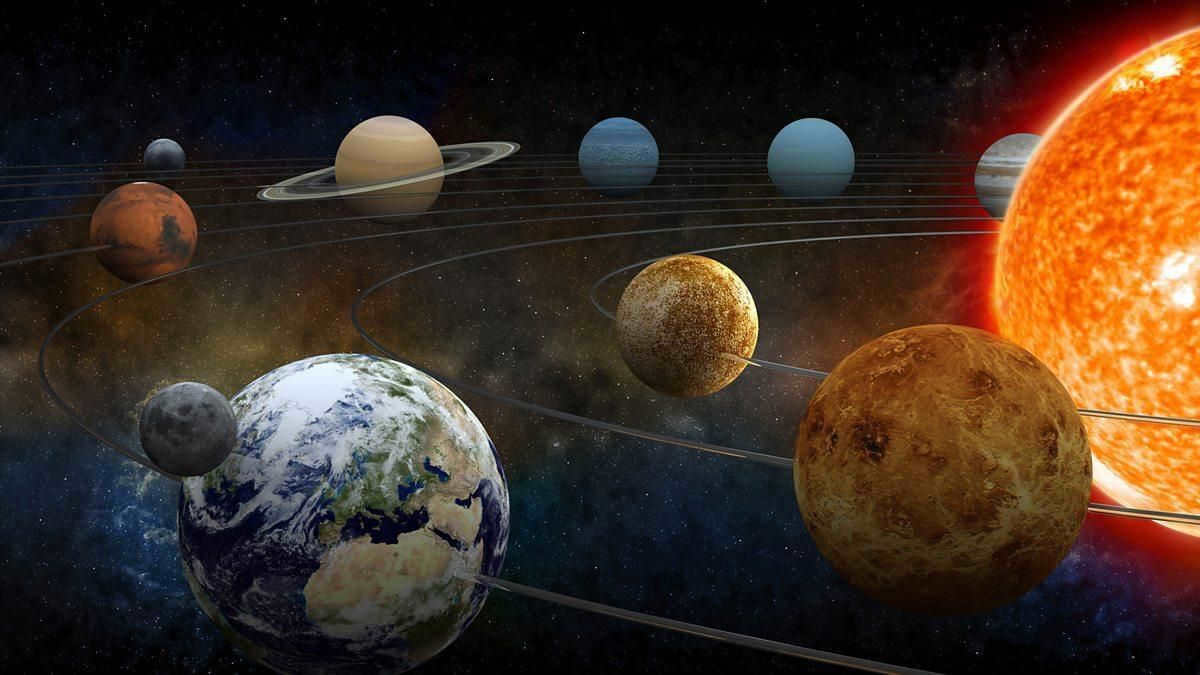
The term “dwarf planets” is used to classify celestial bodies that have a cluttered orbit. This is the current designation for Pluto. Since 2015, the New Horizon team has been working to restore its former status, arguing that the complexity of the world warrants a more respectable classification.
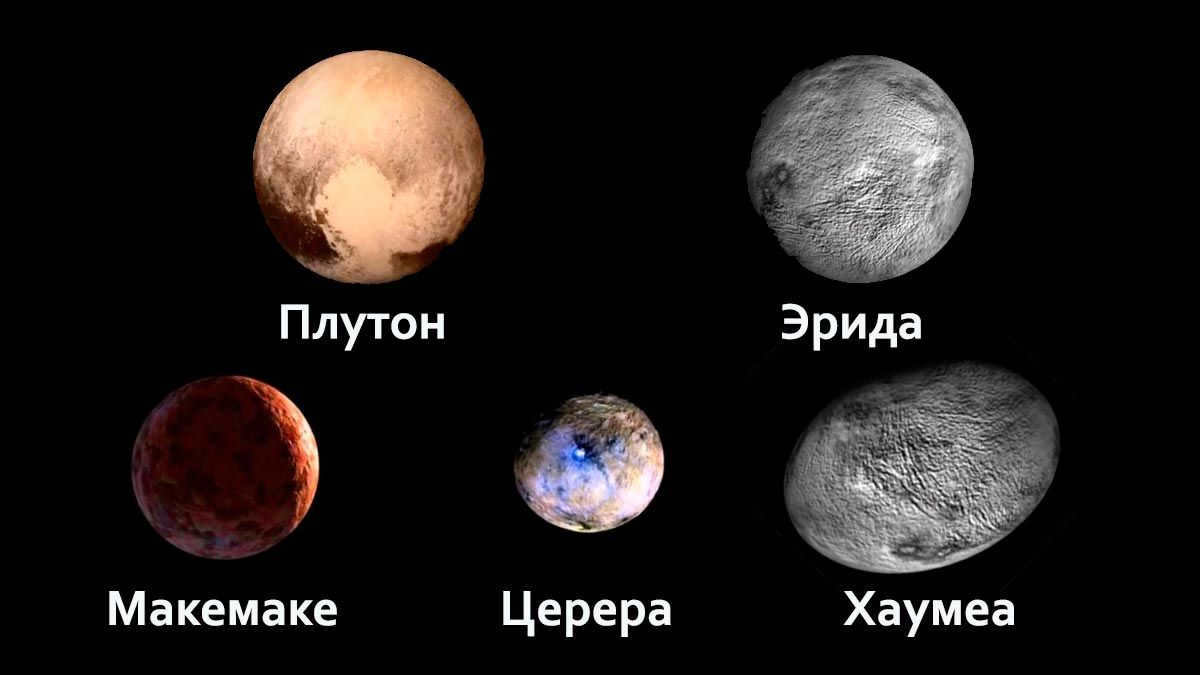
Structure of the Solar System
The solar system consists of a total of 13 celestial bodies: 8 primary planets, 5 minor planets, and numerous additional objects.
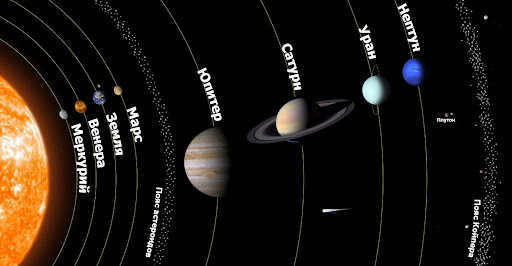
The order of the planets in the Solar System according to their size, starting from the smallest radius (rounded, excluding dwarf planets):
- Mercury – 2.4 thousand kilometers;
- Mars – 3.4 thousand km;
- Venus – 6,000 kilometers;
- Earth – 6.4 thousand kilometers;
- Neptune – 25 thousand km;
- Uranus – 25,400 km;
- Saturn – 60 thousand km;
- Jupiter – 70 thousand km.
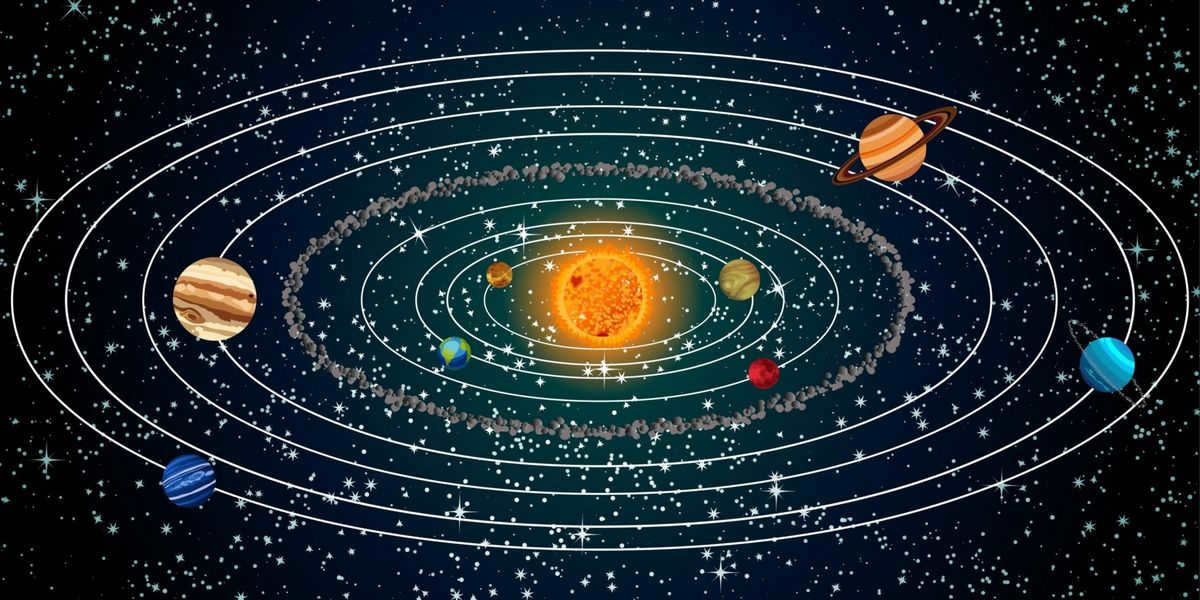
The Sun, which is the central and sole star in our solar system, possesses a luminosity that exceeds the majority of stars found in the galaxy. It is classified as a “yellow dwarf” star due to its brightness.
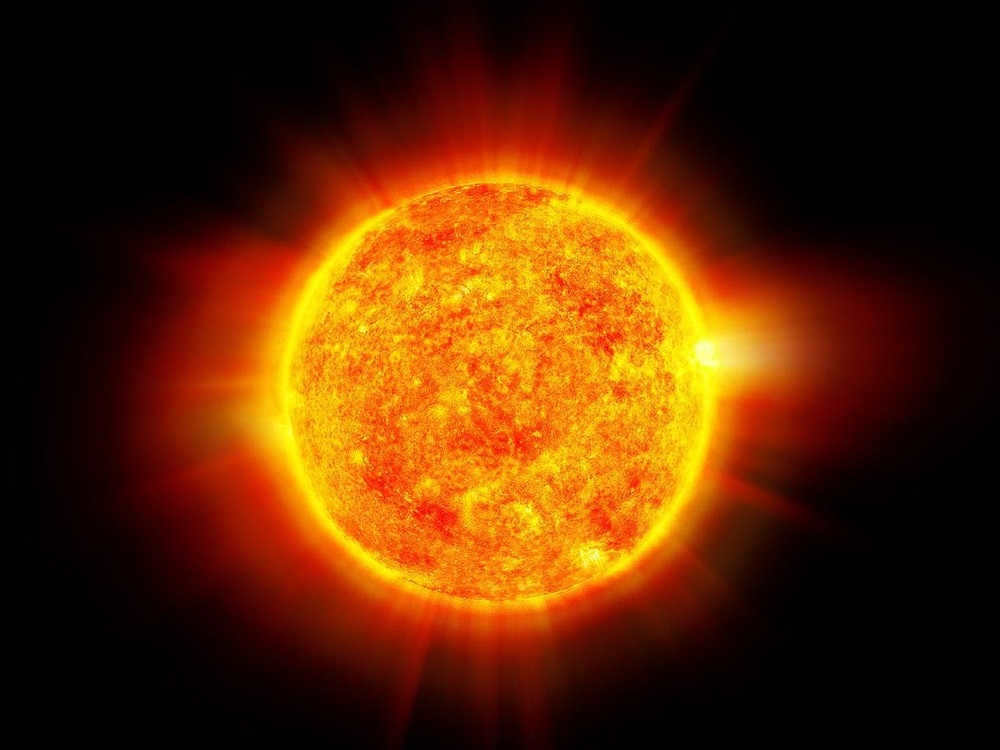
The mass of the solar system is primarily composed of hydrogen and helium, which make up 98% of the total mass.
The other 2% of the mass is comprised of various chemical elements.
This enormous system has a size of 110 times that of Earth and a mass that is 1000 times greater than the combined mass of all the planets.
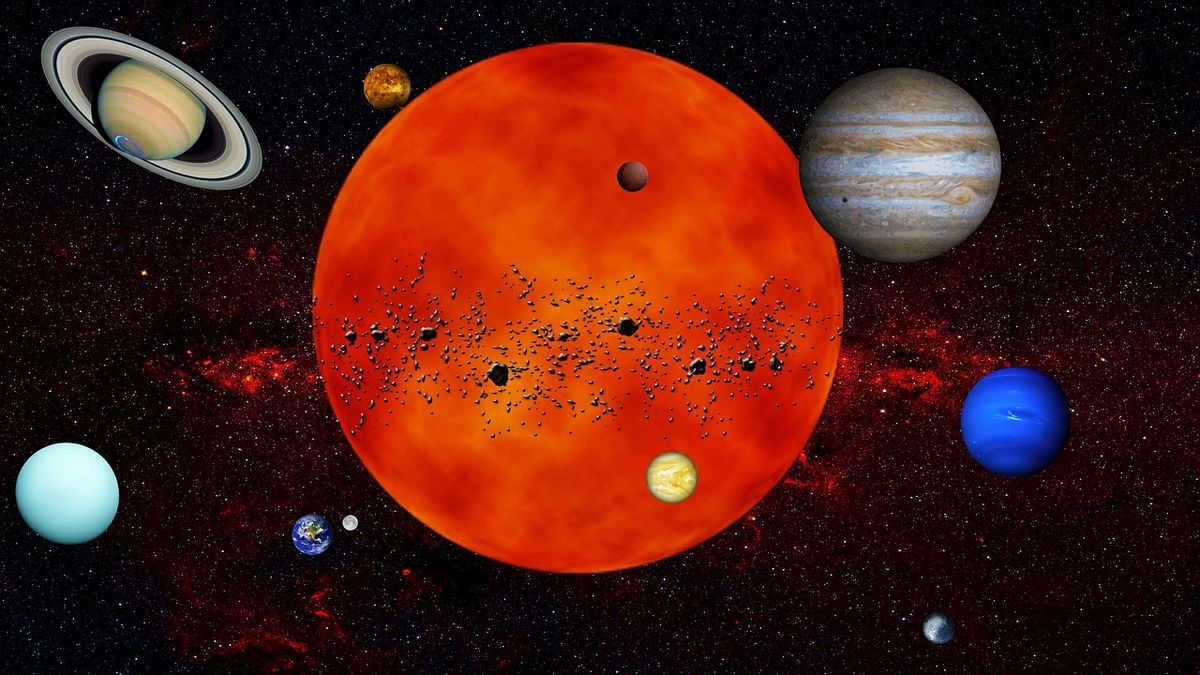
Life on Mars and the emergence of life on Earth can likely be attributed to the Sun and the favorable distance between the two planets.
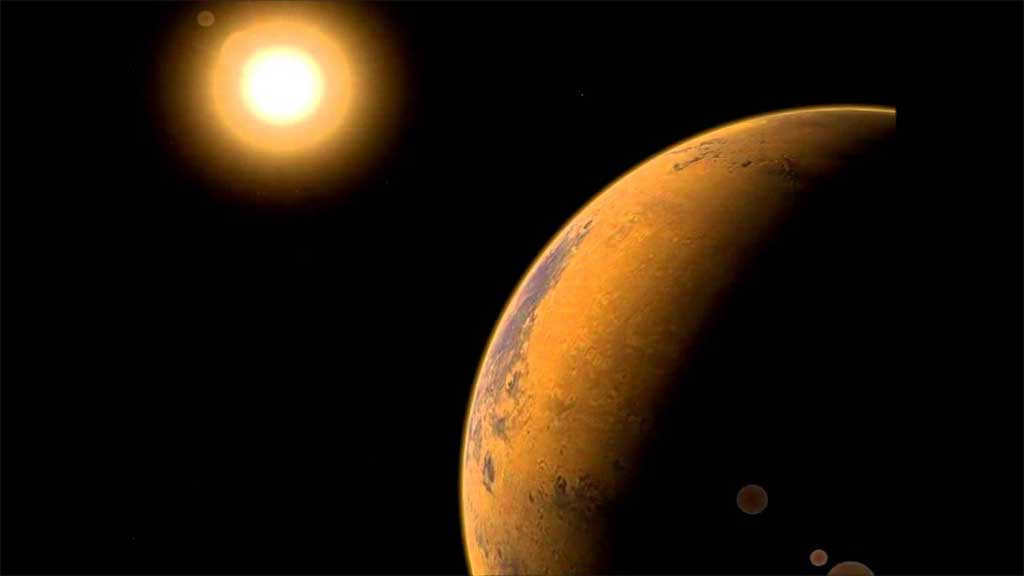
The solar system consists of two main categories of planets: terrestrial planets and giant planets.
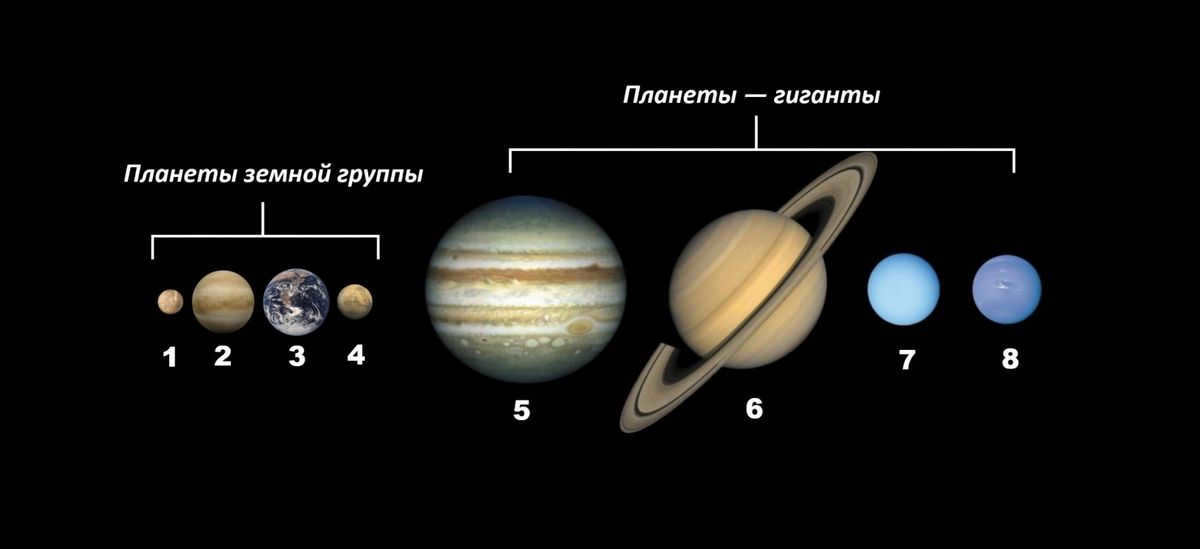
In the initial scenario, all celestial bodies are positioned in front of the primary asteroid belt, in close proximity to the central star, and exhibit comparable sizes. In the subsequent scenario, these bodies are situated beyond the belt. Let us proceed to examine the planets in sequential order, starting with the one closest to the star.
Mercury
Mercury is slightly larger than the Moon and is the nearest planet to the Sun in the Earth group. As a result, it experiences a significant temperature range, with temperatures ranging from +430 to -190 degrees Celsius.
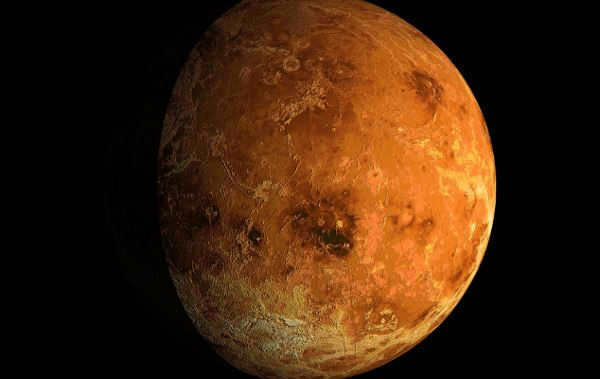
In terms of Earth time, a year on this planet is only 3 months long, while a day lasts a staggering half a year. The planet’s axis is nearly perpendicular to its orbit, resulting in a lack of seasonal variations.
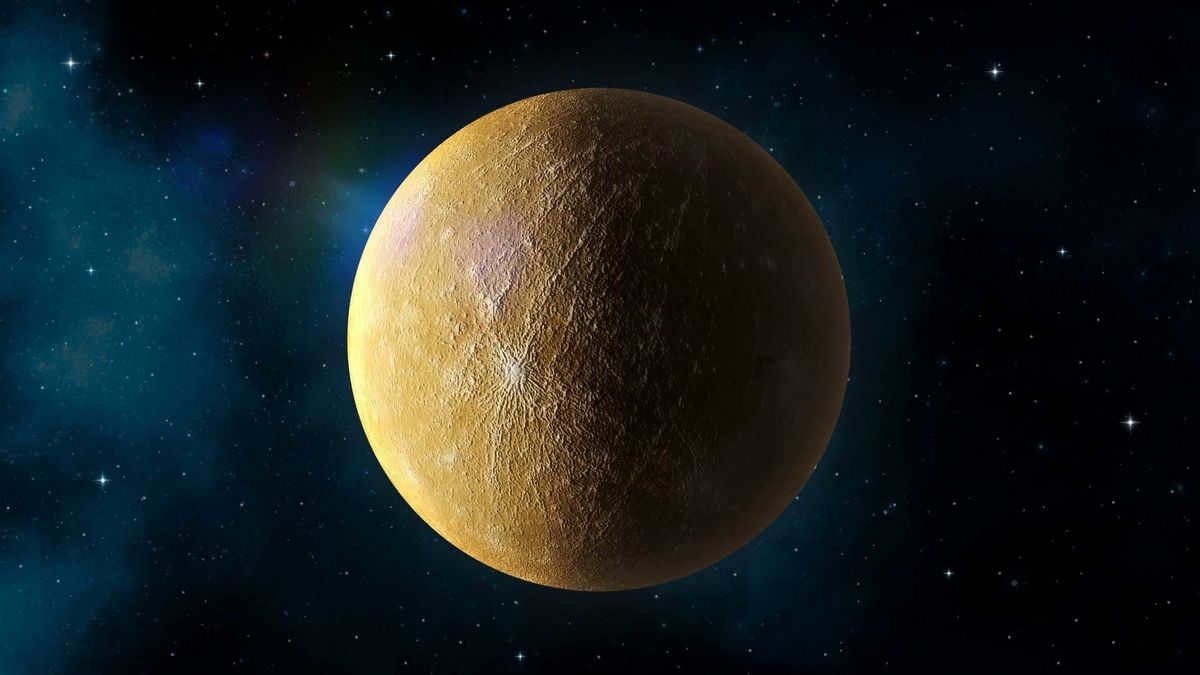
The lack of atmosphere on this celestial body can be attributed to the intense radiation emitted by the sun or, possibly, the insufficient gravitational forces.
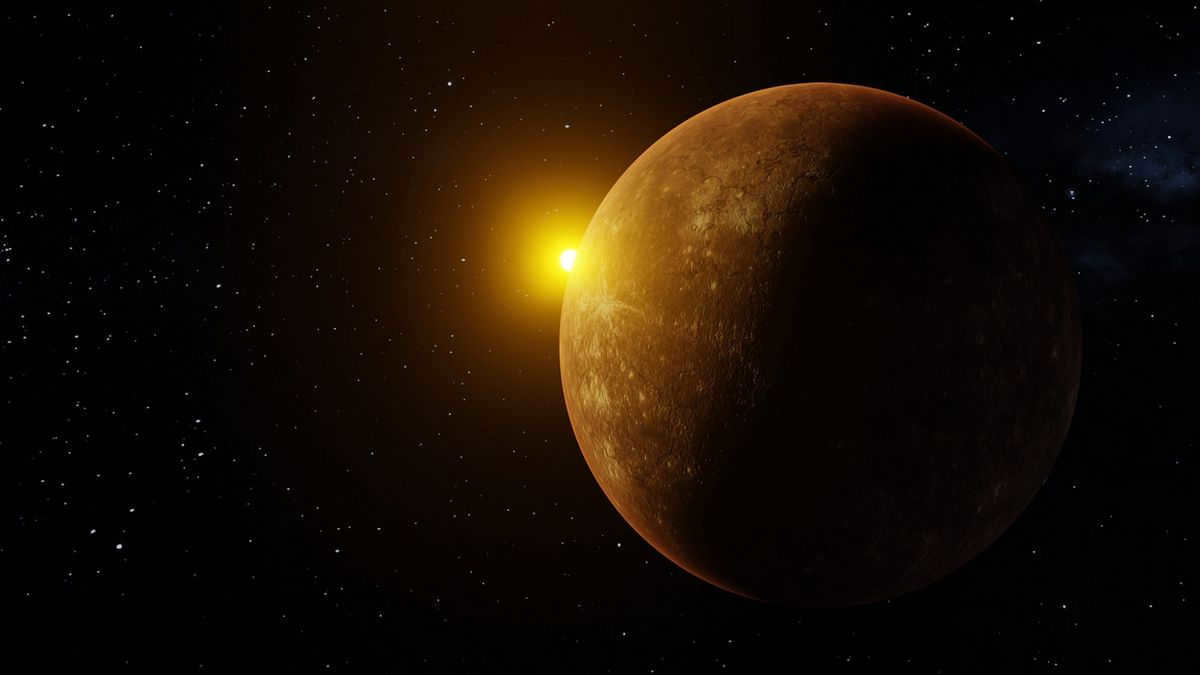
The object is named after a Roman god, who is considered the protector of commerce and journeys. It holds the title of being the swiftest object in orbit, with a linear speed of approximately 60 kilometers per hour. Furthermore, it is noteworthy that this celestial body lacks any natural satellites.
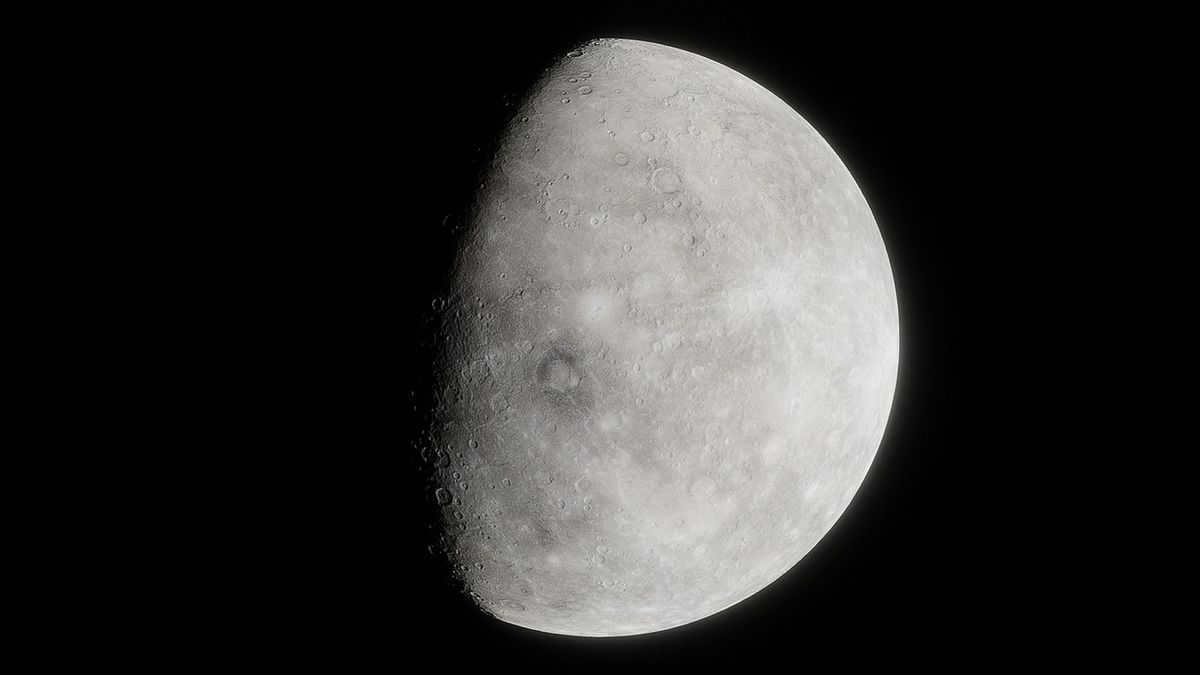
The Enigmatic Venus
Venus, a captivating member of our solar system, continues to intrigue scientists and researchers. While there are ongoing debates regarding its internal structure, an official version has yet to be determined.
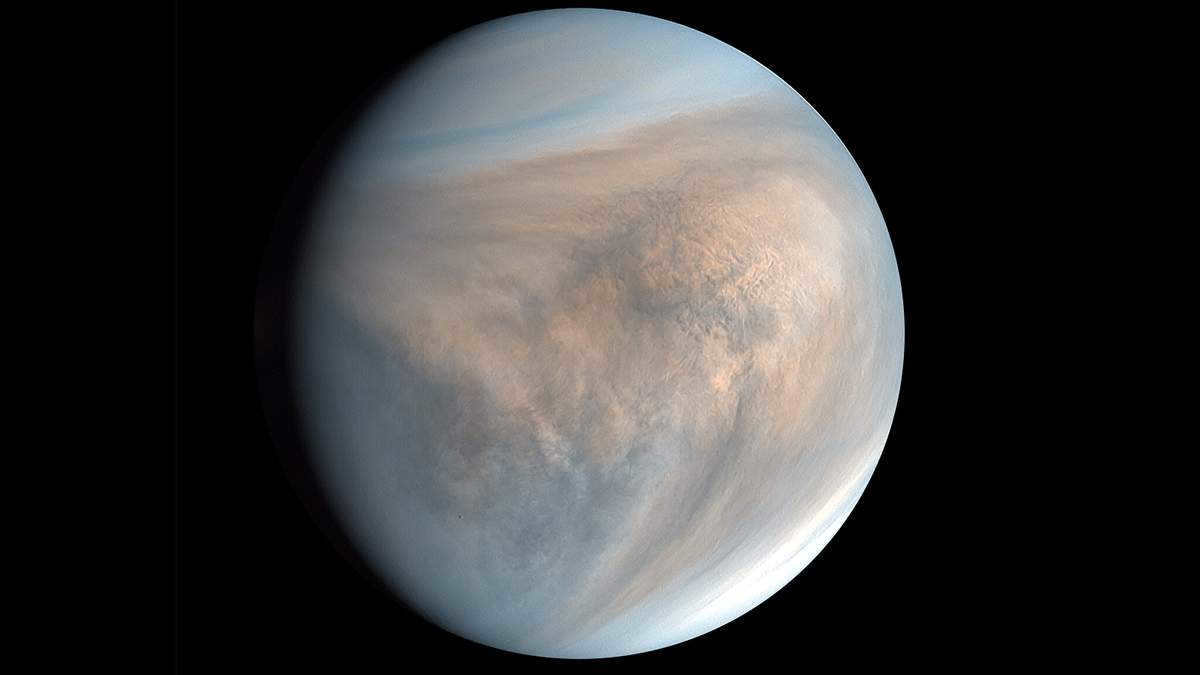
The planet has an iron core that makes up a quarter of its total mass. It also has a thick mantle and a thin crust, which is approximately 16 km thick. Additionally, it has a dense atmosphere that spins 60 times faster than the planet itself. This atmosphere is composed mainly of carbon dioxide and nitrogen.
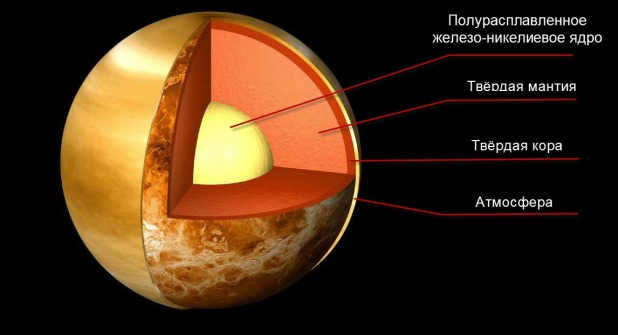
Venus is known for being the planet closest to the Sun, which contributes to its status as the brightest planet in our solar system. In terms of its orbital period, Venus takes approximately 225 Earth days to complete one revolution around the Sun, while a single day on Venus lasts for approximately 243 Earth days. The surface of Venus is notoriously hot, with temperatures reaching up to a scorching 480 degrees.
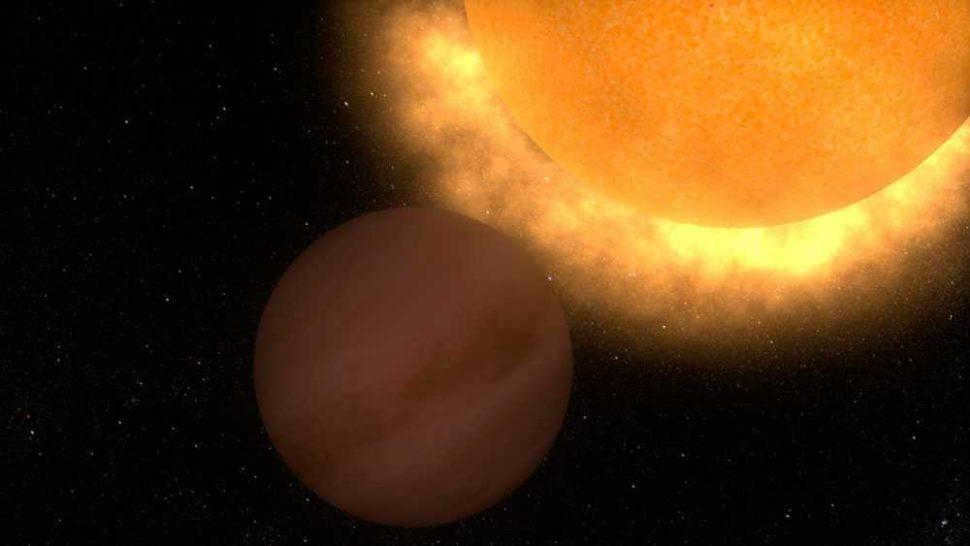
In addition to all the other features, this celestial body possesses an elevated atmospheric pressure that matches the pressure exerted by a water column of 1.5 km height, and it is also covered by sulfur clouds.
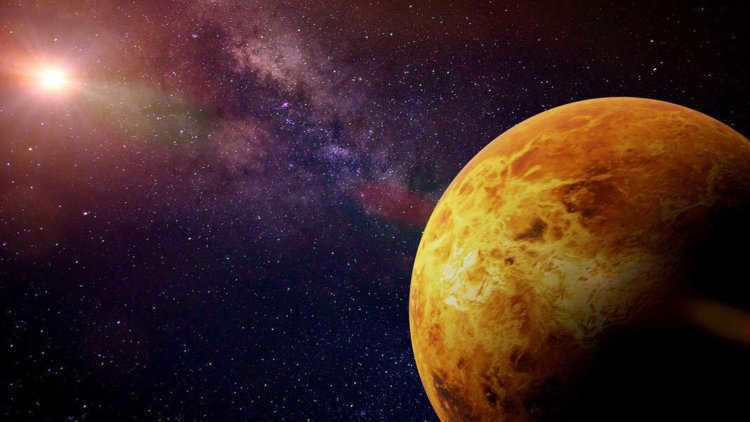
Upon initial observation, the conditions render it entirely inhospitable, however, in September 2021, researchers stumbled upon a biomarker known as phosphine gas.
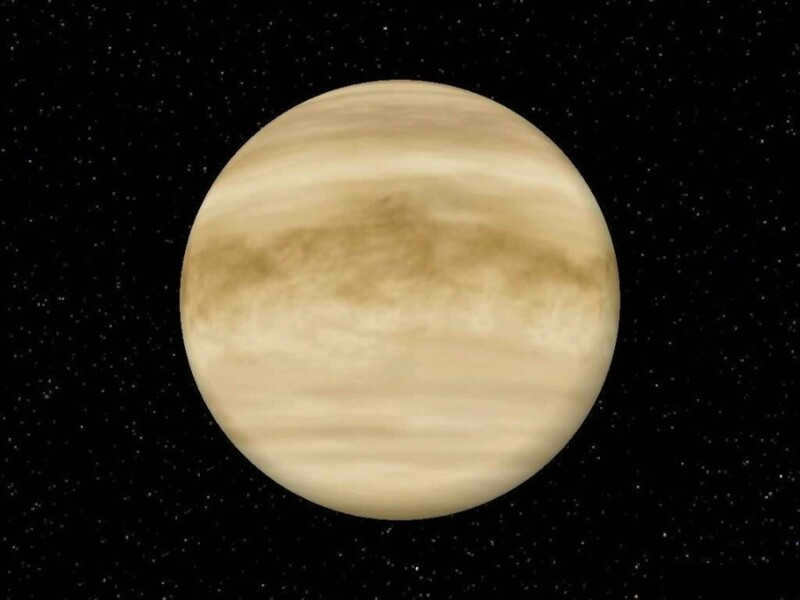
There is a possibility that the presence of phosphine in Venus’ upper atmosphere could be an indication of microbial life, or it could be a result of an unidentified process that produced the gas. Venus remains a planet full of enigmas, constantly keeping the scientific community on their toes and ready for new surprises.
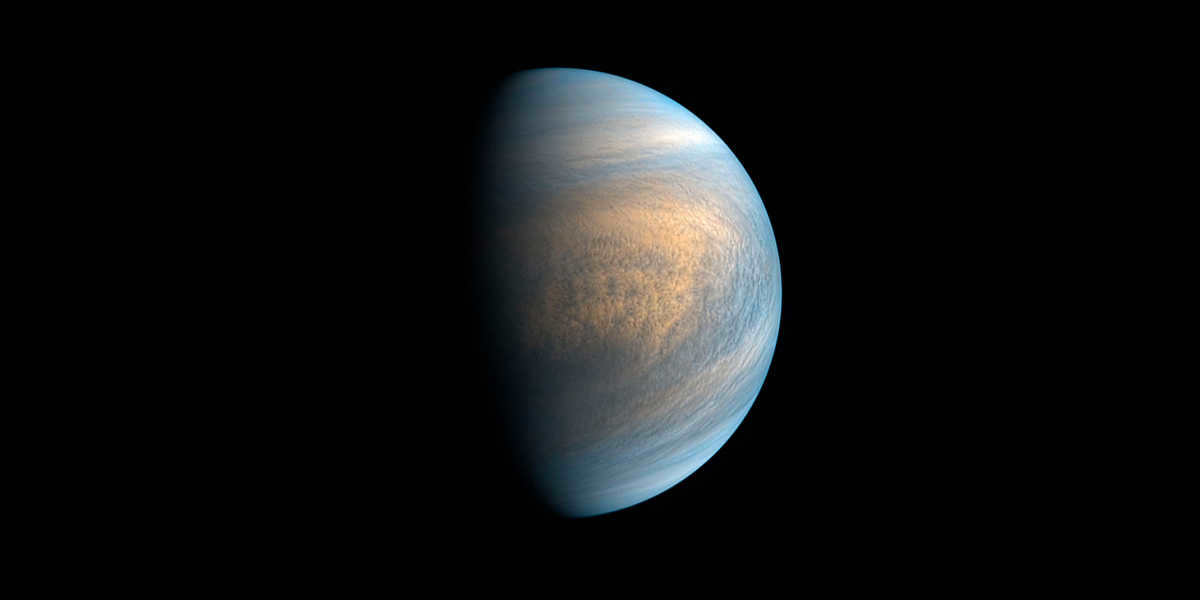
The Planet Earth
Earth is positioned as the third planet in our solar system. Although it has been extensively studied, there is still much more to discover about this fascinating celestial body.

There exists a solitary natural satellite – the Moon, alongside countless artificial ones. Among these, the International Space Station (ISS) stands as the largest.
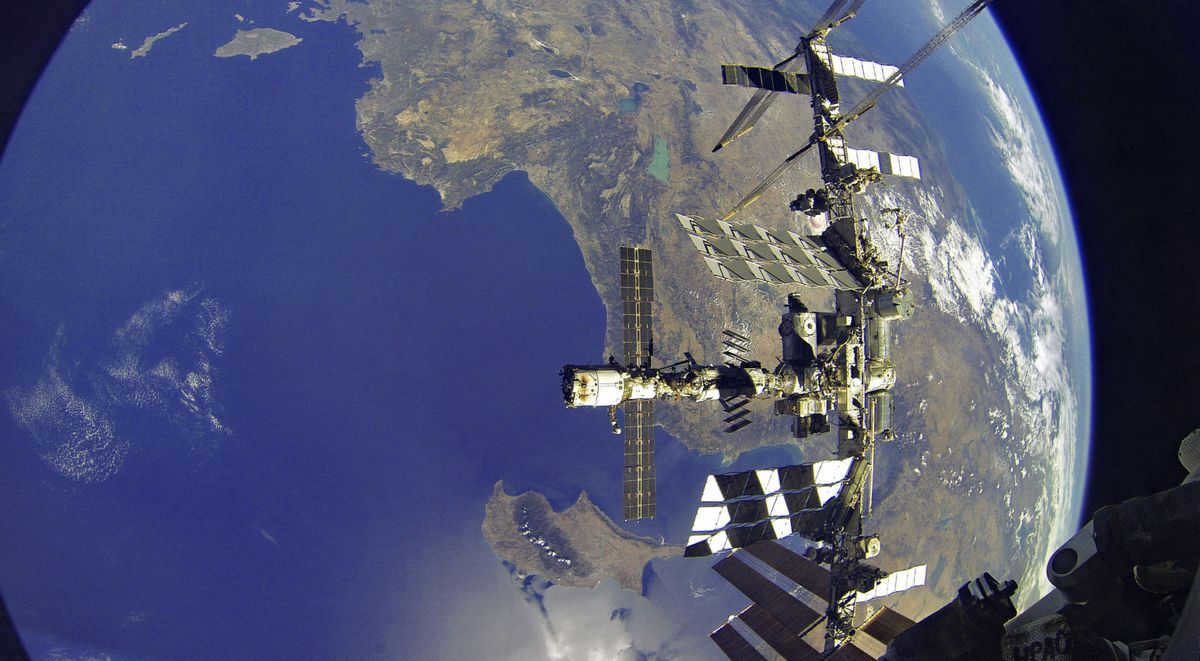
Earth is the sole documented planet that harbors life and exhibits tectonic activity. Its atmosphere lacks distinct boundaries and is instead categorized into zones based on density, ranging from the most concentrated to the least.
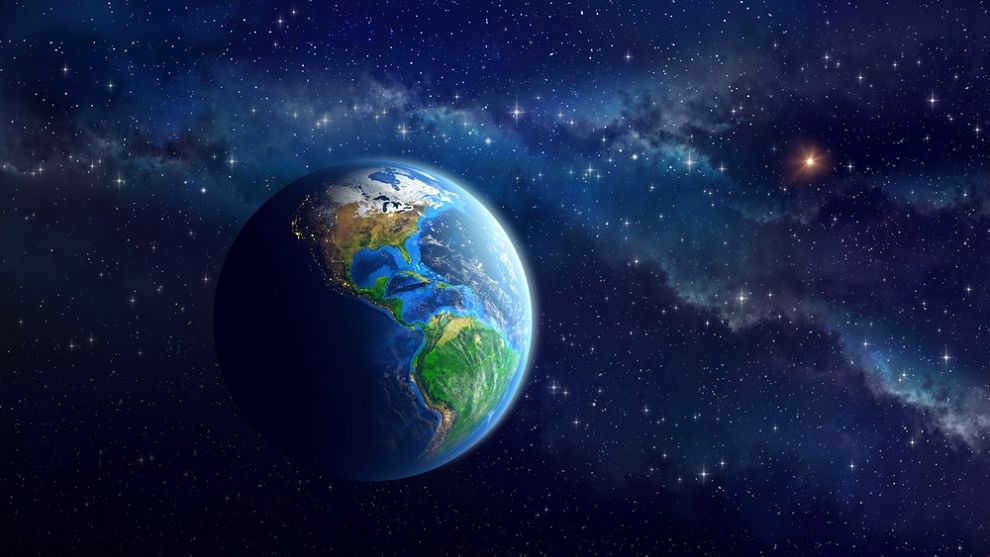
The composition of the Earth’s atmosphere is primarily made up of nitrogen, oxygen, carbon dioxide, and argon. The layer responsible for supporting life and facilitating its development is known as the troposphere.
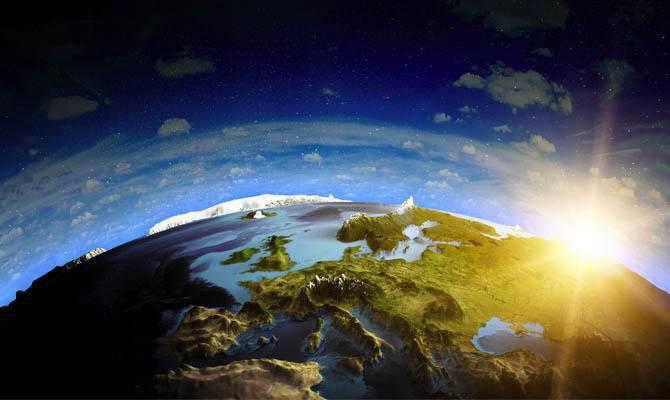
The troposphere, which is the lowest layer of the Earth’s atmosphere, is the most dense and accounts for 75% of the atmosphere’s mass. It extends approximately 11 km above the Earth’s surface.
The thickness of the troposphere varies depending on the region, with polar latitudes experiencing a troposphere that can be as thin as 8 km.
Above the troposphere, there are several other layers of the atmosphere, including the stratosphere, mesosphere, thermosphere, and exosphere.
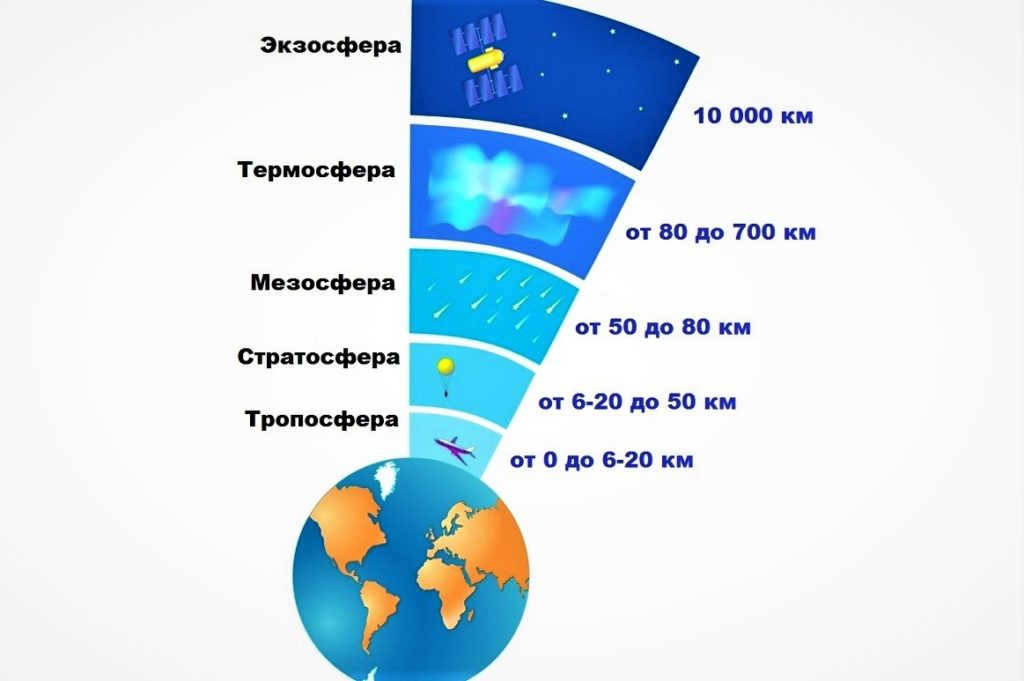
Various fields of study and sectors employ their own methods to determine the threshold of space exploration. The International Aviation Federation posits that the demarcation point lies at an elevation of 100 km, as conventional aircraft are unable to operate at such altitudes.
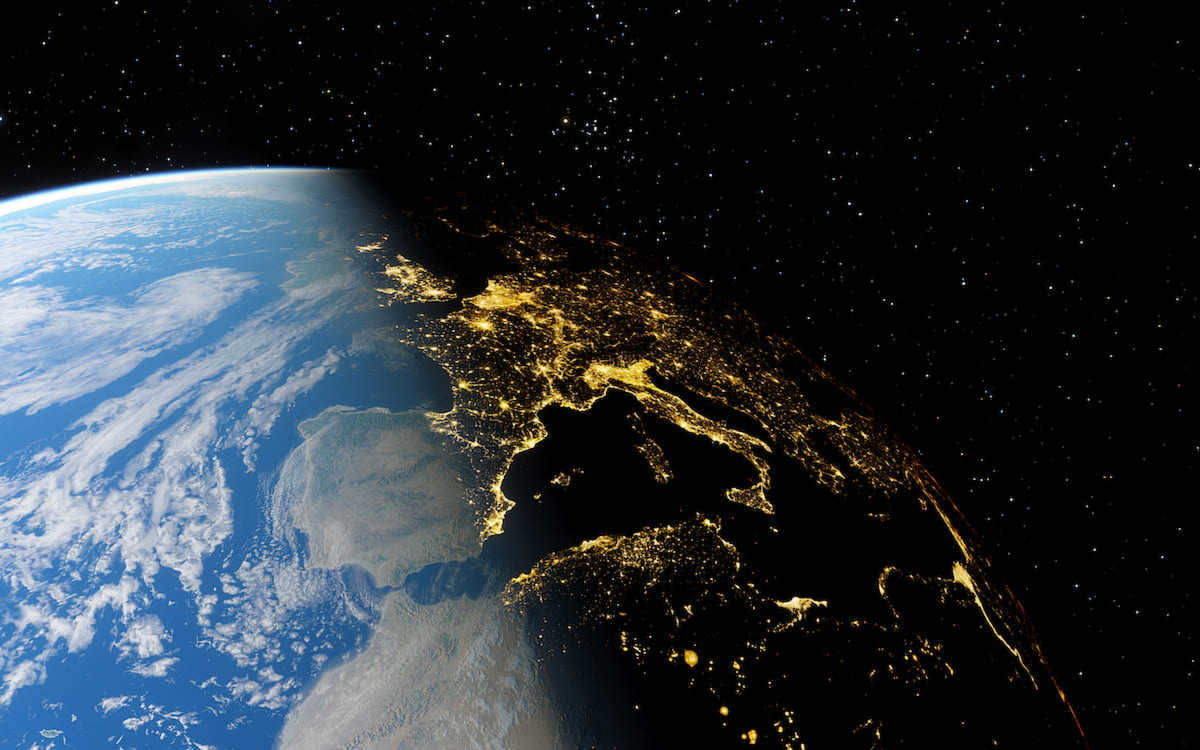
Geography, as a field of study, is heavily dependent on the concept that there is a distinct layer of approximately 1200 km that rotates along with the planet. This layer is often regarded as a significant boundary in geographical science.
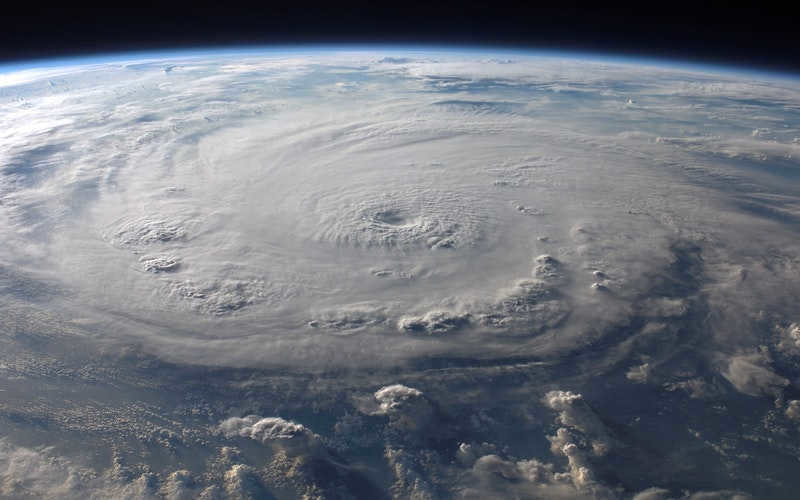
For average individuals, the boundary lies at a distance of 20 km from the Earth’s surface. At this elevation, the reduced atmospheric pressure leads to the phenomenon of blood “boiling”. The point at which liquids reach their boiling temperature is lowered to 36.6 degrees Celsius. The Earth presents a unique confluence of various factors essential for supporting life in one location.
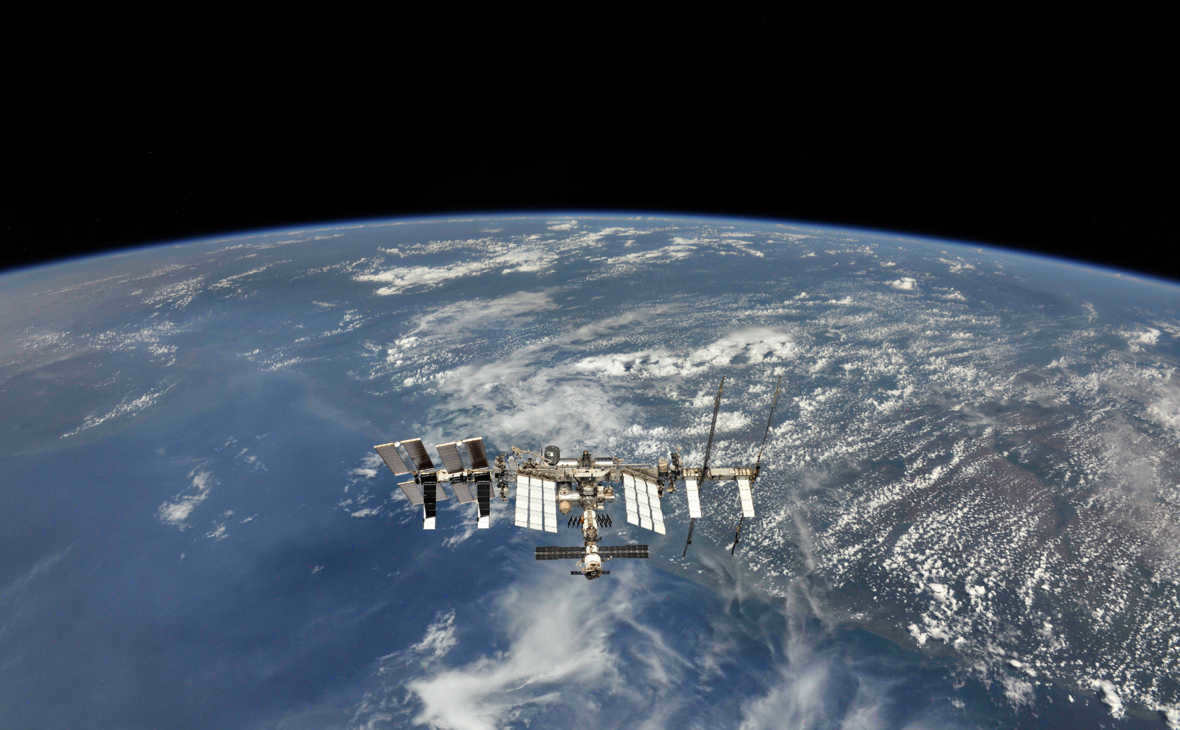
The number of planets revolving around the sun is determined by various factors such as distance, water availability, and the composition of the atmosphere. These conditions, although not necessarily favorable, have contributed to the evolution and development of mankind.
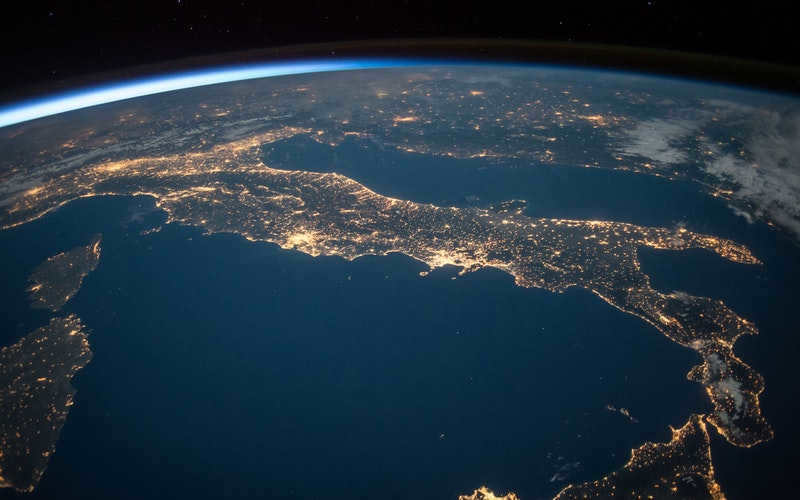
Each year, scientists discover an increasing number of habitable exoplanets scattered throughout the immense expanse of the universe. With the vast distances separating us, it would take centuries, if not millennia, to ever reach these distant worlds. Therefore, it is crucial to appreciate and cherish the precious planet we currently call home.
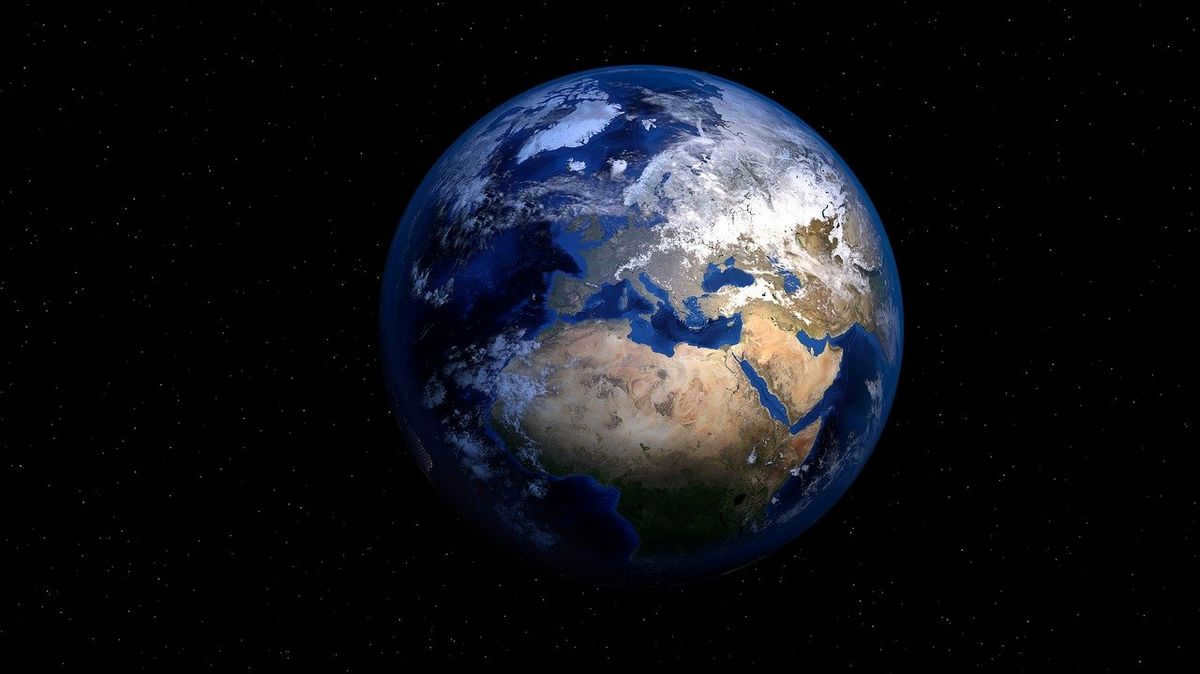
The diagram illustrates the internal composition of the Earth.
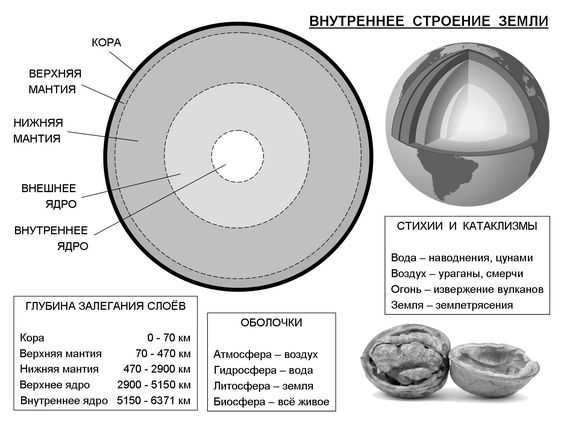
Mars
Mars is the fourth planet in the Solar System and the second most extensively studied celestial object after Earth.
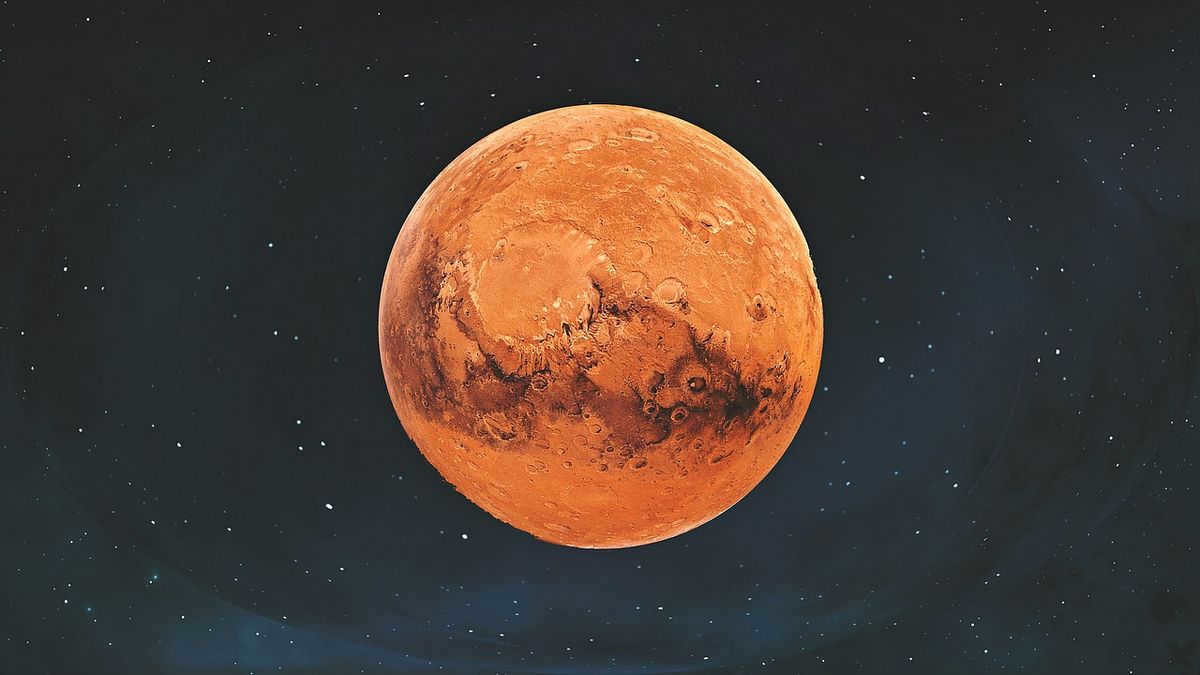
Mars possesses a pair of natural moons, Phobos (derived from the Greek word for “fear”) and Deimos (derived from the Greek word for “terror”). These celestial bodies were named after the Roman god of war. The atmosphere surrounding Mars is relatively thin.
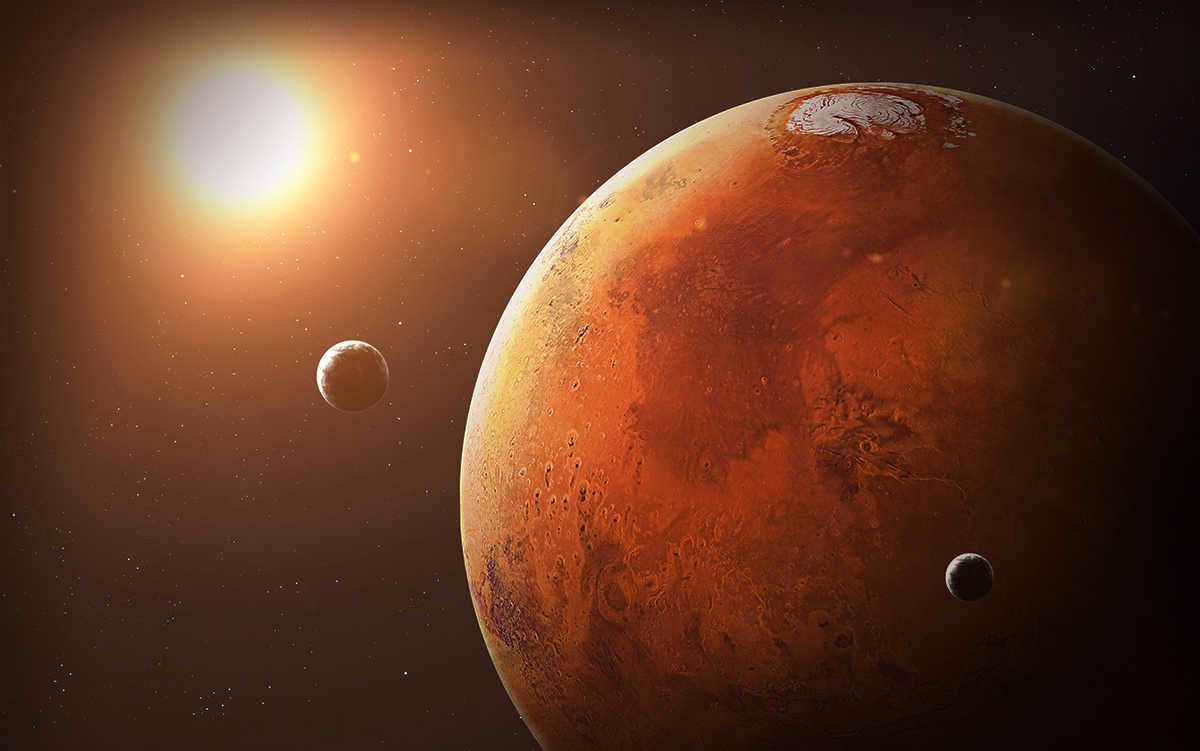
The presence of iron oxide in the soil gives the surface a distinct red hue. Currently, there is a significant interest in the concept of terraforming and transforming Mars, with major companies actively considering it.
Jupiter
Jupiter is the biggest planet in our solar system. It is situated beyond the asteroid belt and is classified as a gas giant or giant planet.
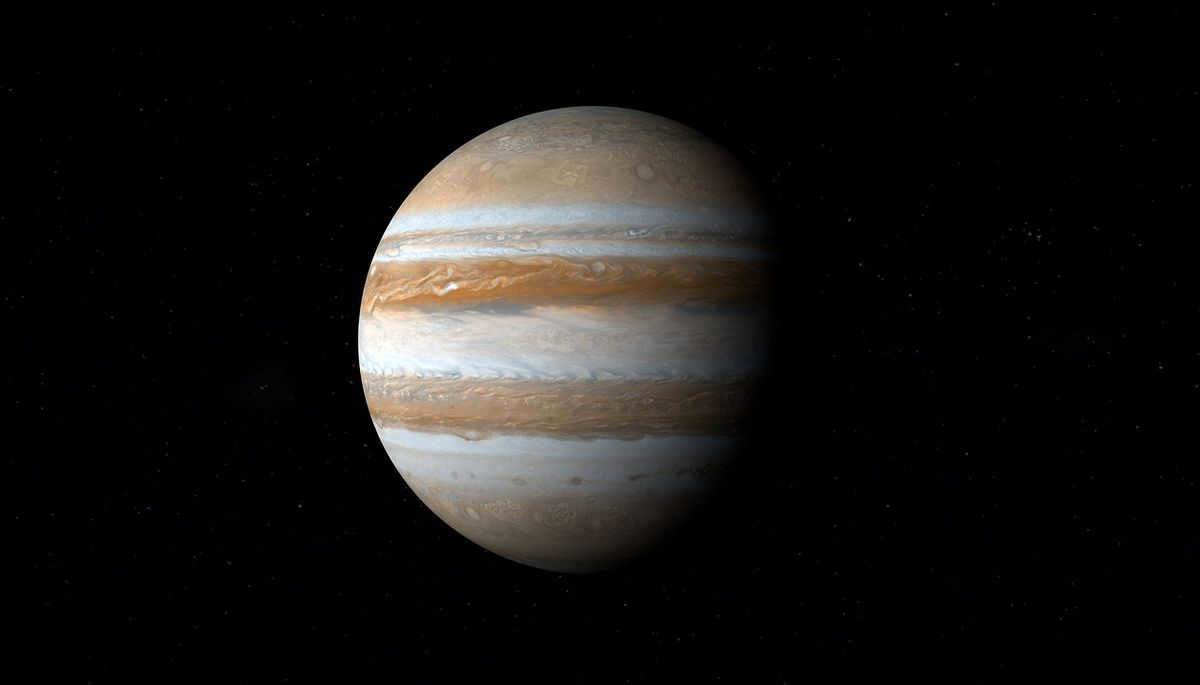
Named after the chief deity of the Roman pantheon, this celestial body boasts an astonishing 79 natural satellites, with Europa and Enceladus being particularly remarkable.
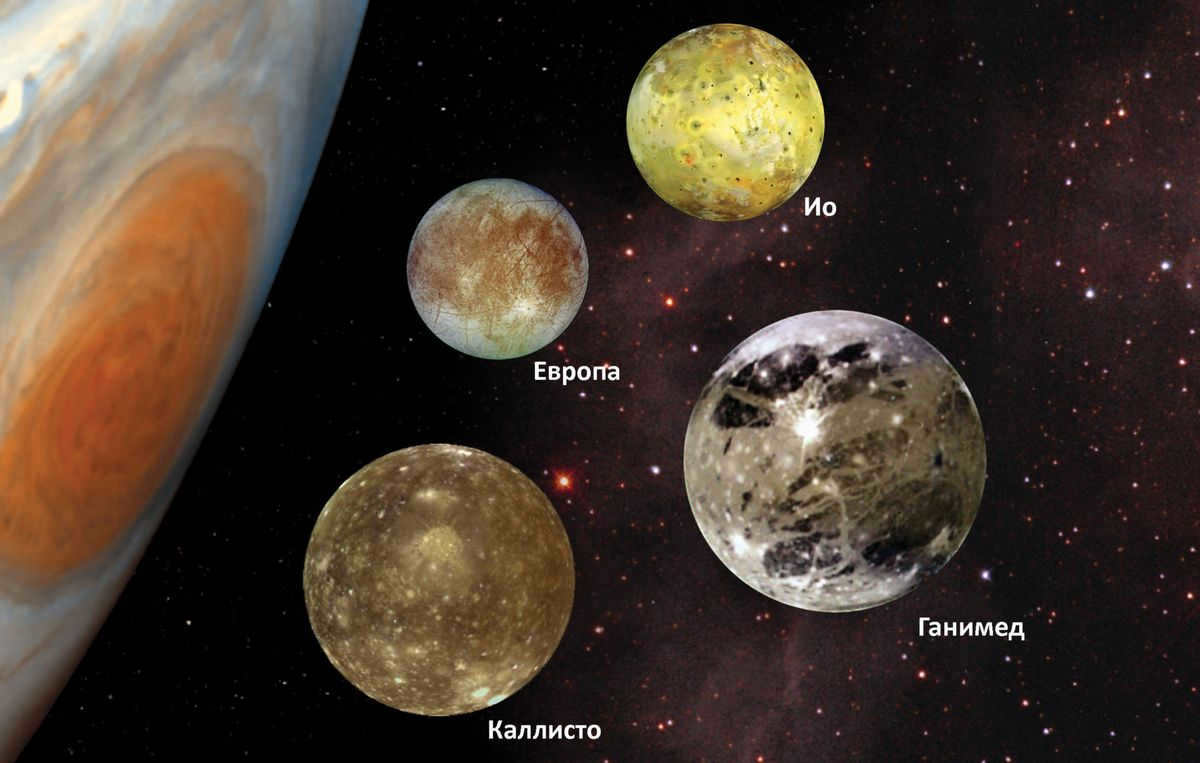
Below the frozen layers lies liquid oceans that might have given rise to microscopic organisms. The composition of the atmosphere consists of 90% molecular hydrogen, with the remaining portion being helium.
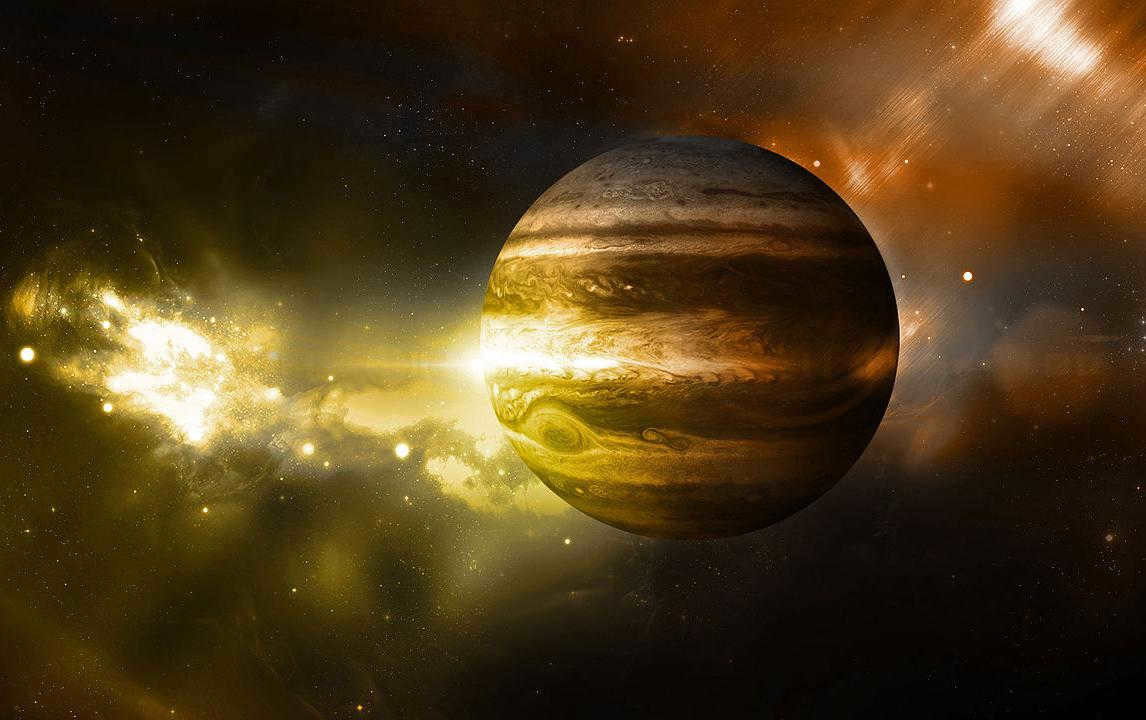
Enveloped in metallic hydrogen, the depths of this celestial body conceal a rocky core. Its precise chemical makeup remains elusive, as modern instruments are unable to penetrate its mysterious depths. Additionally, faint rings encircle this enigmatic planet.
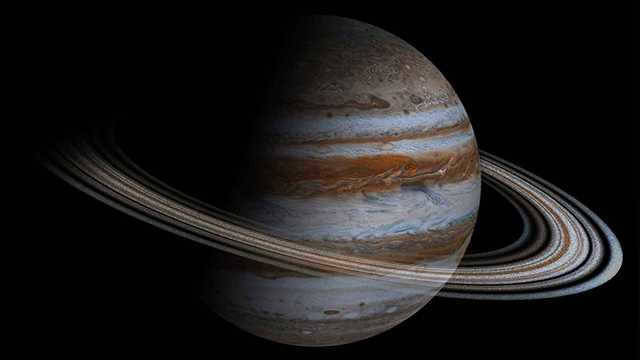
Saturn
Saturn is the sixth planet from the Sun and is classified as a gas giant. It gets its name from the ancient Roman god of agriculture.
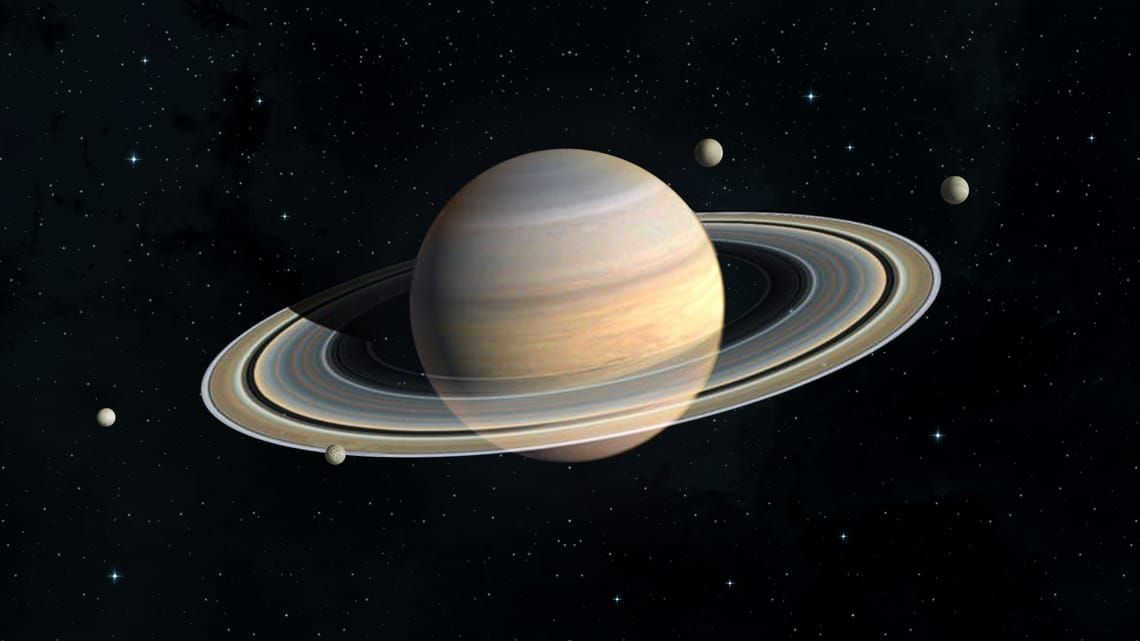
There exists a distinct arrangement of circular bands predominantly made up of frozen fragments. The bands are continually attracting additional pieces and remnants of celestial objects.
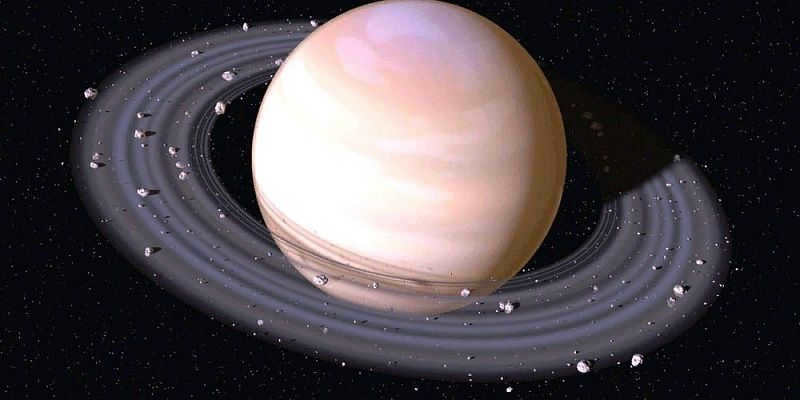
Titan is one of the 82 natural satellites that orbit this celestial body. It stands out as the most significant among them. Apart from Earth, it is the only known object where the presence of liquid has been definitively confirmed. The subsurface extreme-saline water bodies on Saturn offer a promising environment for the existence of simple life forms.
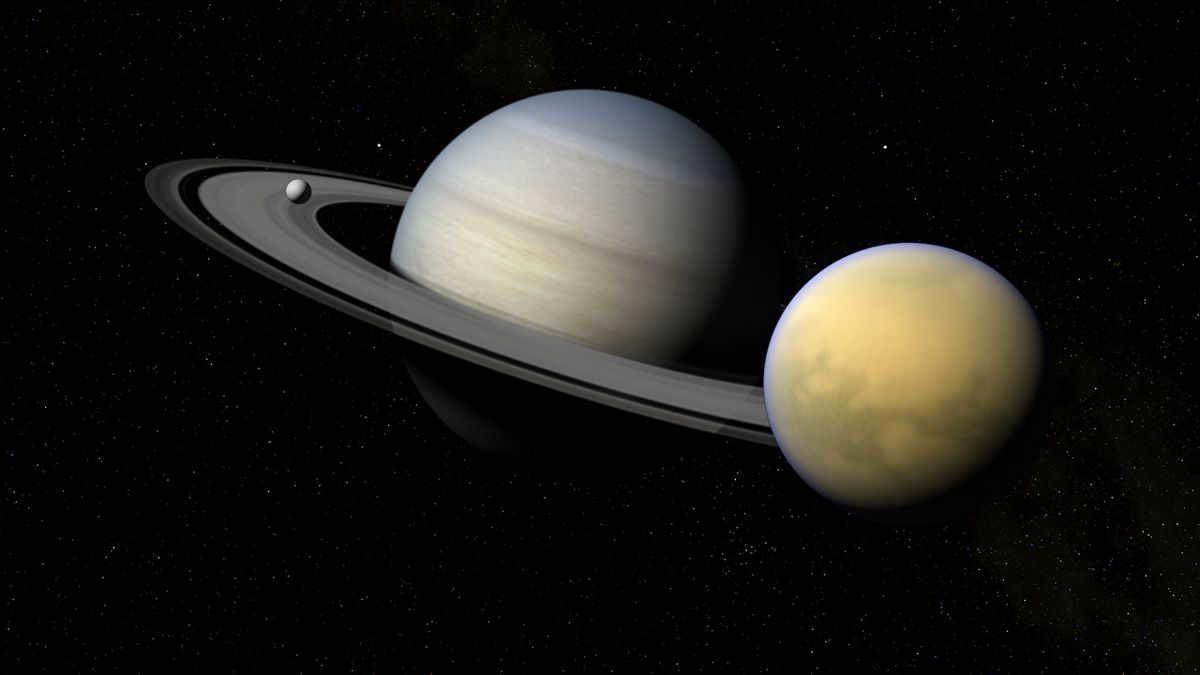
Sharing a similar atmospheric composition with Jupiter, Uranus experiences frequent storms and tempests, resulting in continuous lightning strikes on its surface. Additionally, the poles of Uranus are often adorned with a mesmerizing display of aurora borealis.
Uranus
Derived from the Greek deity of the sky, Uranus is a planet that never fails to captivate.
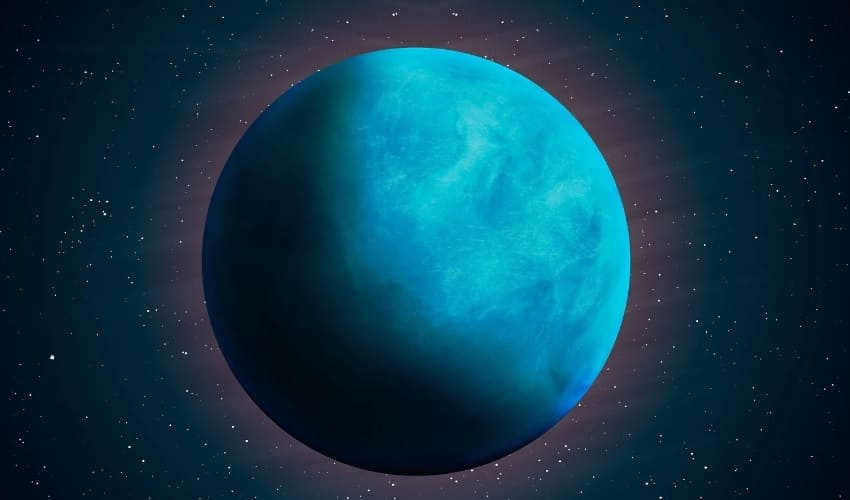
The planet’s name, Uranus, was originally proposed by astronomer Johann Ehlert. He had intended to name it after Saturn’s father, Caelus, but became mixed up. Nevertheless, the name “Uranus” has persisted throughout history.
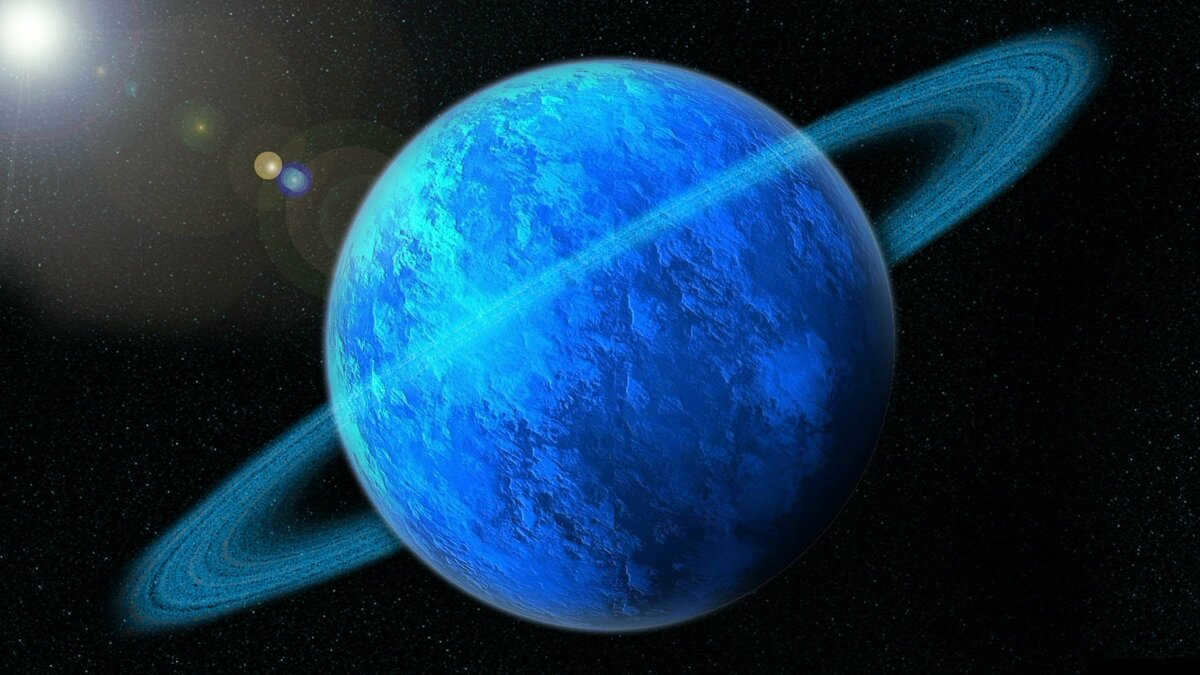
The rotation axis is tilted by 98 degrees compared to the plane of its orbit. Similar to Venus, this planet orbits the Sun in a clockwise direction, while its rotation is from west to east.
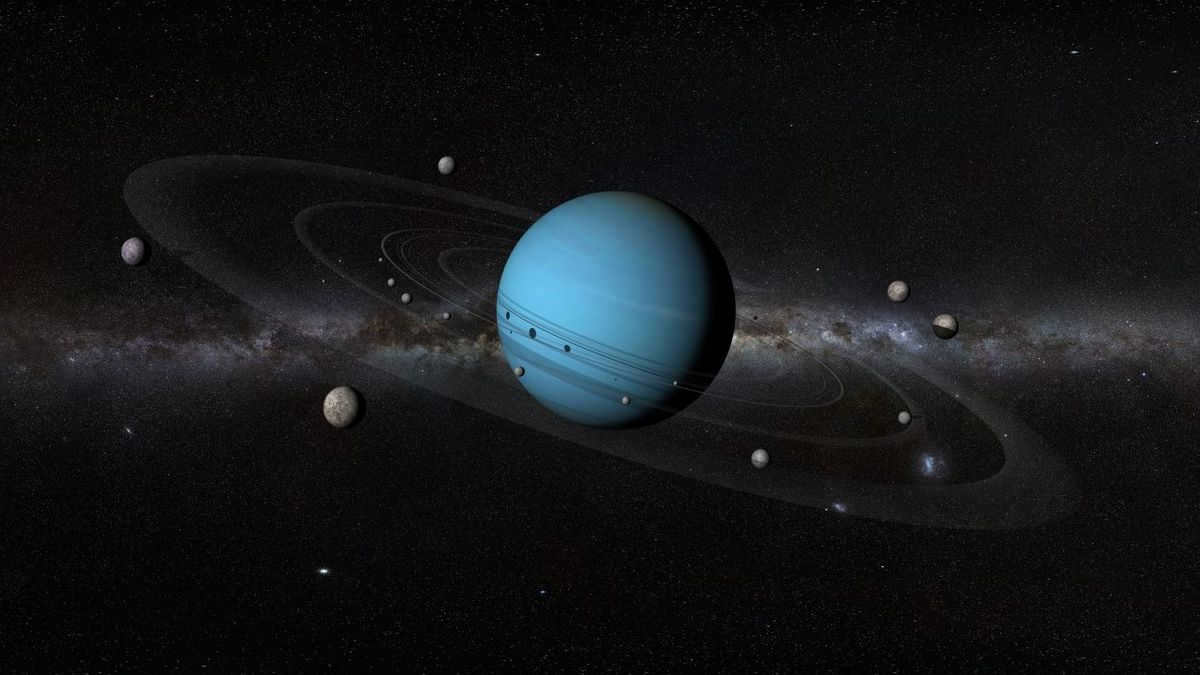
With its icy shell and a helium-hydrogen atmosphere containing methane, this celestial body appears blue in color. It boasts a total of 27 natural satellites and features a rocky core at its center.
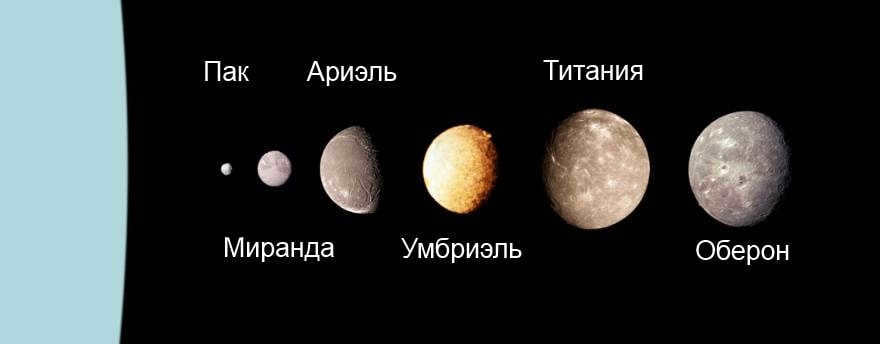
On the surface, there are “natural occurrences” happening. The winds on this planet can reach speeds of up to 900 kilometers per hour. Additionally, there are faint rings that were only recently discovered. Interestingly, for a significant period of time, this celestial body was mistakenly identified as a star.
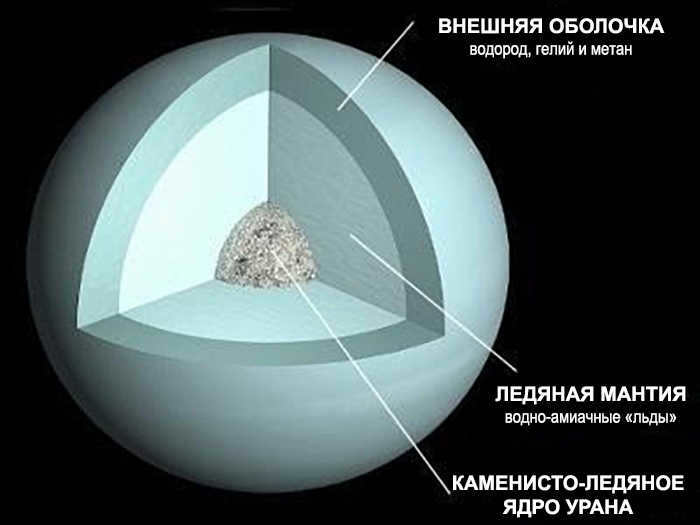
Jupiter
Named after the Roman king of the gods, Jupiter is known for its vibrant bands of clouds and its iconic Great Red Spot. It has a total of 79 known moons, including the four largest called the Galilean moons.
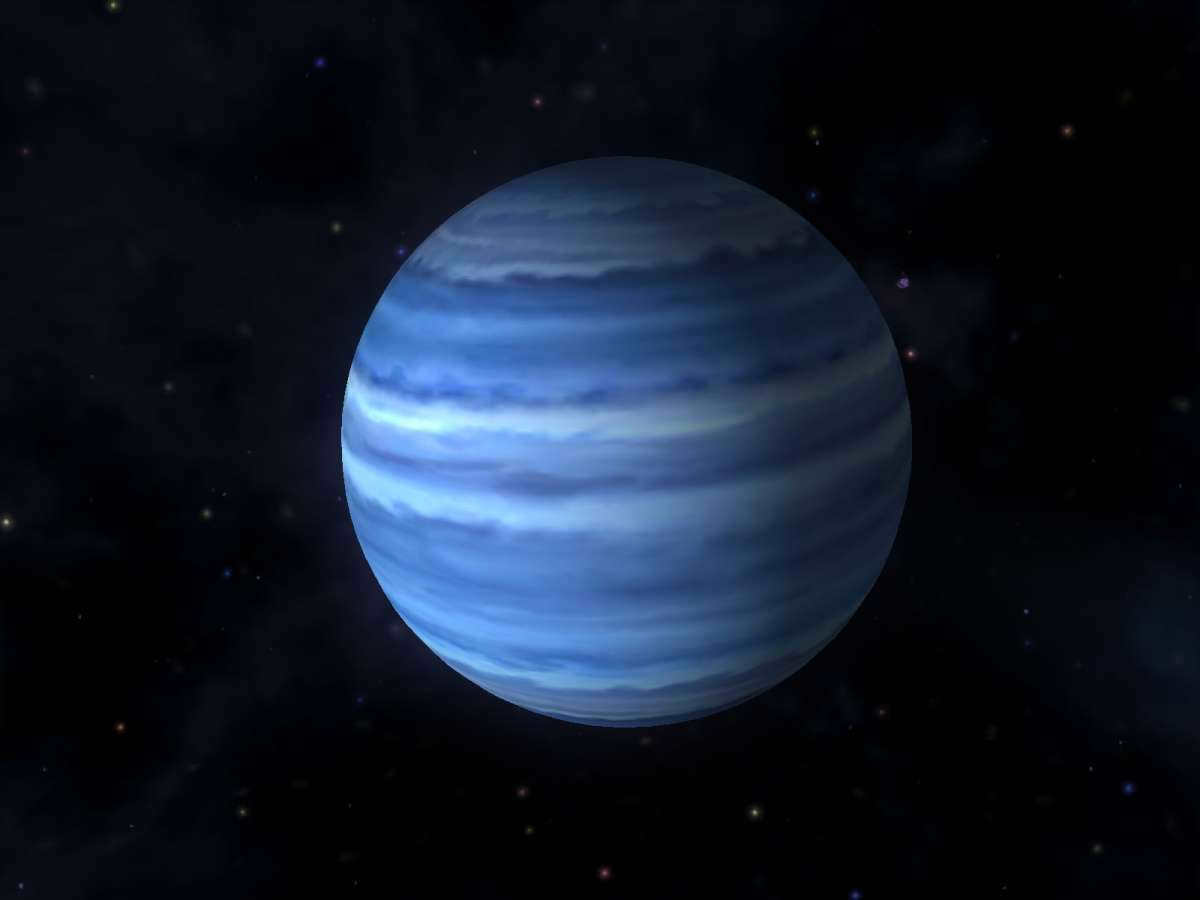
The mass of this celestial body is nearly equivalent to the combined mass of all the other moons. It is the sole planet that was discovered solely through mathematical calculations, based on its gravitational influence on Uranus.
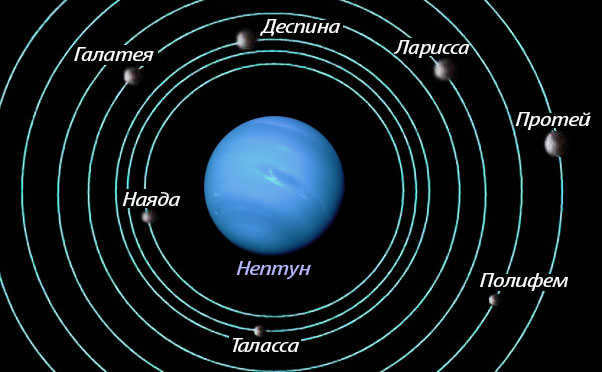
By calculating its deviations, the weight and estimated position of Neptune were determined. The composition of its atmosphere consists of helium, hydrogen, and methane. The mantle is composed of ammonia-methane ice surrounding a central rocky core.
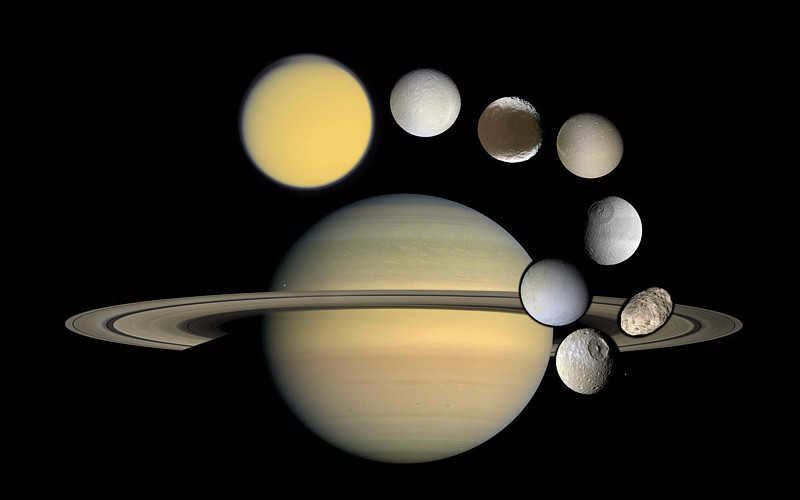
The planet possesses a ring system that exhibits a reddish hue, albeit not as vibrant as those of Jupiter or Uranus. Its atmospheric conditions are characterized by incessant storms, reaching speeds akin to supersonic velocities. The most powerful tempest in the entire solar system attains a staggering velocity of 2100 km/h.
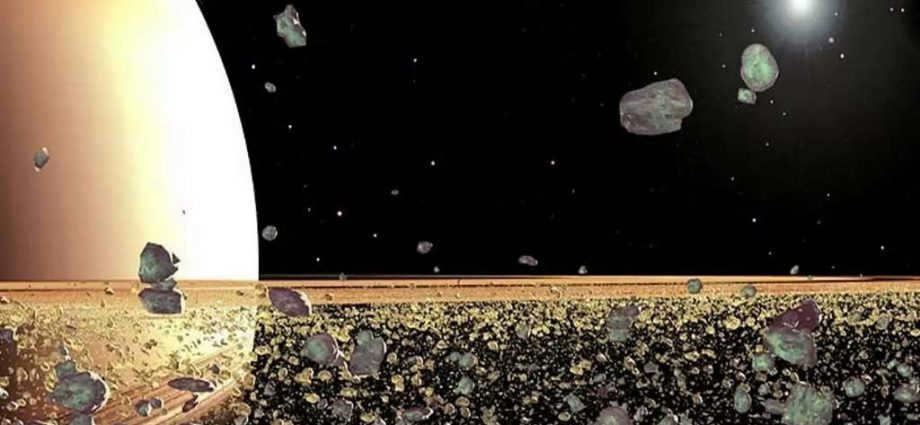
The solar system’s other celestial bodies
Dwarf planets, asteroid belts, and even enigmatic “X” objects, which some consider to be more of a myth than a reality.
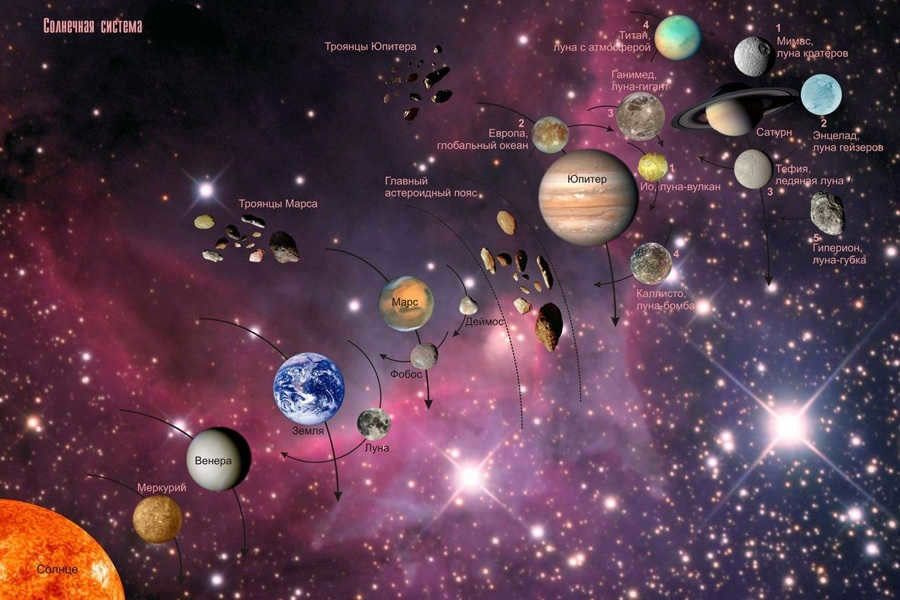
Most of them fall under the category of transneptunian objects, with an average distance from the Sun that surpasses that of Neptune.
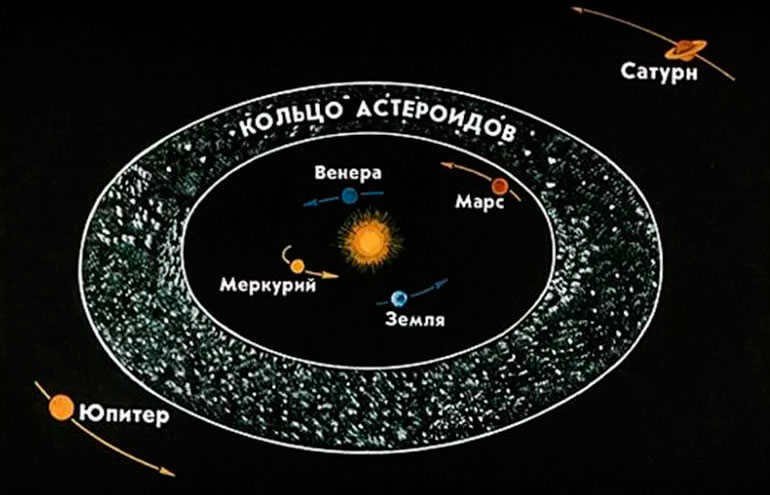
There is a collection of celestial objects known as the main asteroid belt, which can be found between the orbits of Mars and Jupiter. This region is home to a vast number of bodies, estimated to be around one million in total.
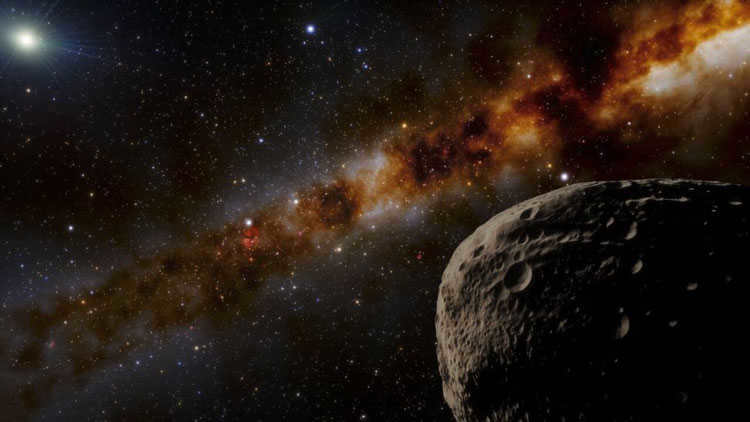
- Pluto, which was named after the Roman god of the underworld, lost its status as a planet in 2006. It can be found in the Kuiper belt, an icy cloud that is billions of kilometers away from the sun. It is only 6 times smaller than the moon and has 4 moons of its own. If the scientific community recognizes Charon, which is a Greek mythological figure associated with the underworld, Pluto and Charon could be considered a double planetary system.
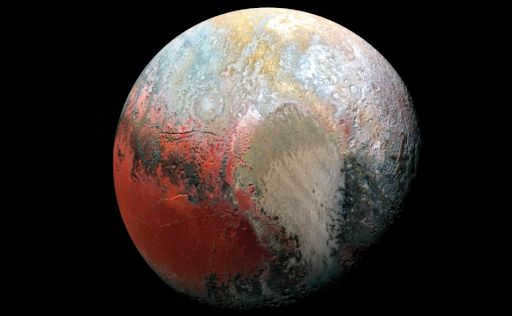
- Haumea – possesses a pair of moons and its very own ring system. It holds the title of being the most rapidly rotating object in the entire solar system. Its shape is that of an elongated ellipsoid. It was named after the Hawaiian goddess of fertility. Additionally, it can be found within the Kuiper belt.
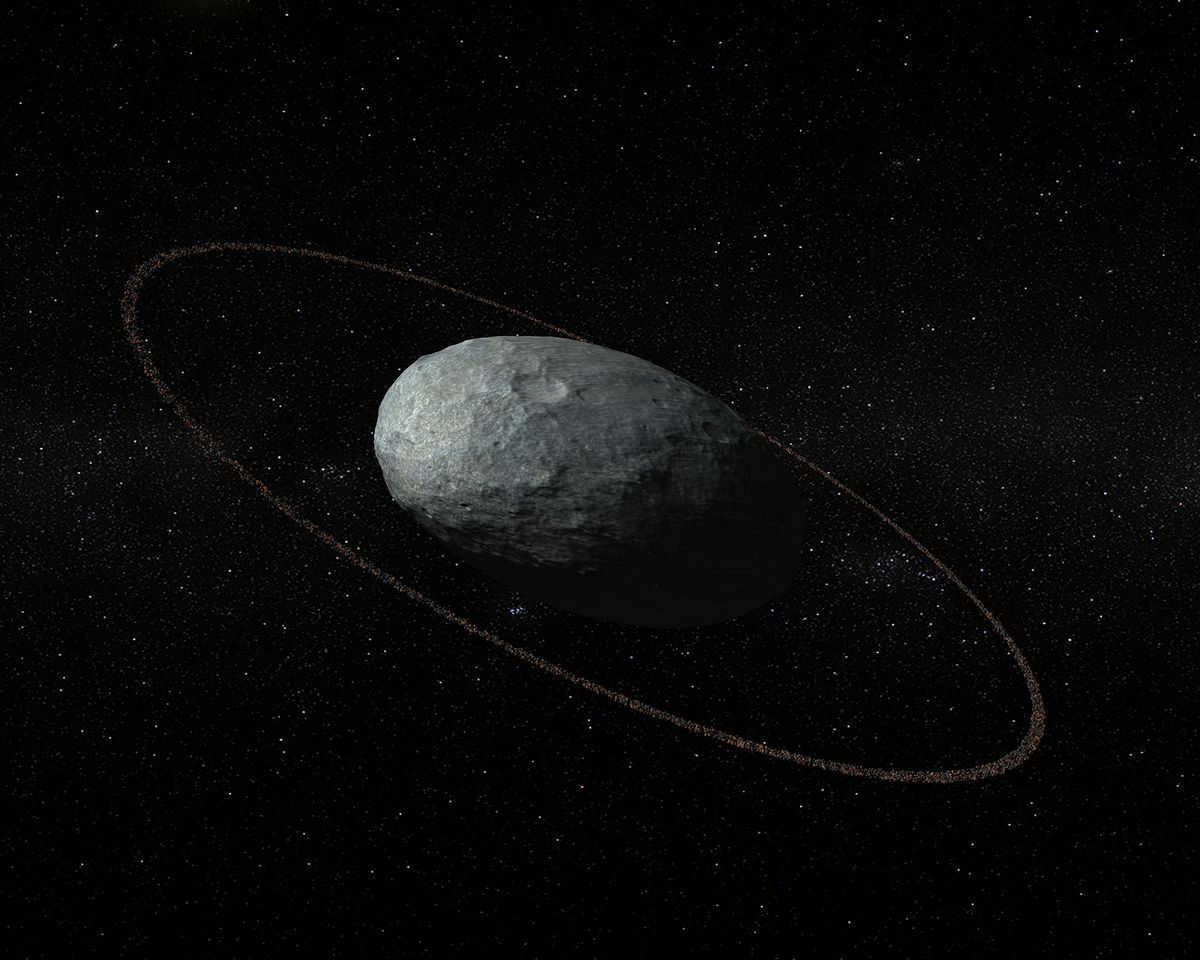
- Makemake, a celestial body that revolves around the sun, bears the name of the god of fertility in the mythology of Rapanui. With a radius of just 740 kilometers, it remained without an official name for a period of three years.
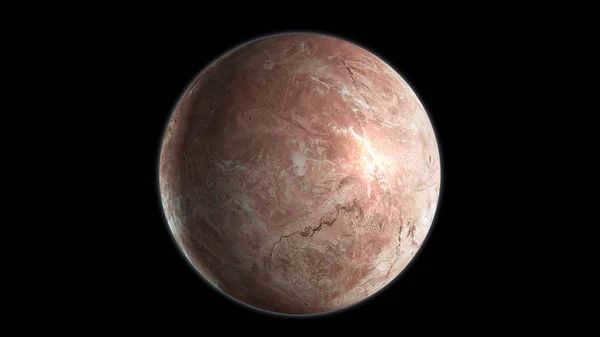
- Erida – at present, it is the most distant dwarf planet from the Sun in our solar system. It is also the second largest planet in terms of mass, second only to Pluto. It was named after the Greek goddess of discord and chaos.
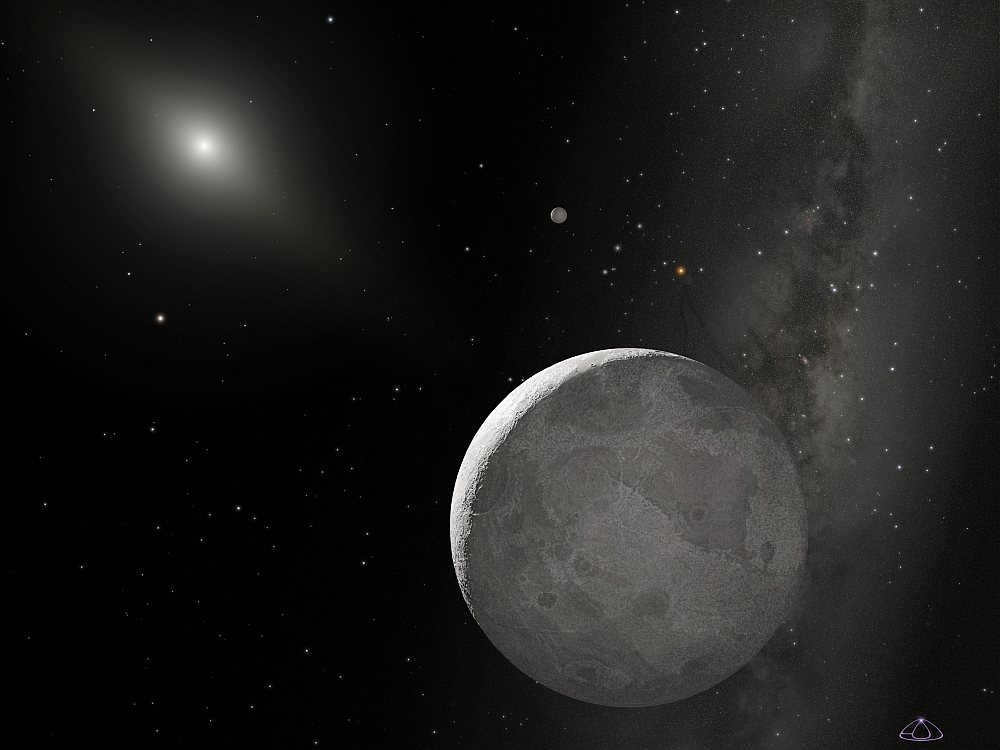
- Ceres, which is named after the Roman goddess of agriculture, is the sole dwarf planet located in the asteroid belt. It holds the distinction of being the nearest to the Sun among all dwarf planets in this region. Additionally, it is also the most massive and accounts for approximately one-third of the total mass within the main belt.
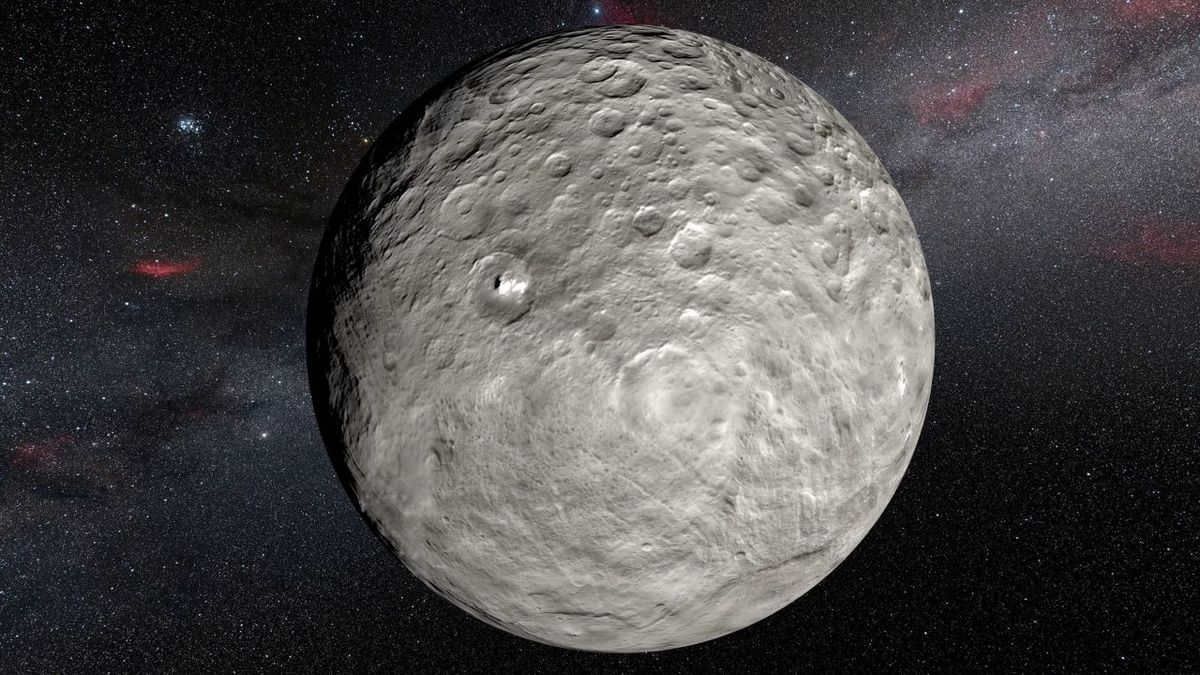
- Planet Nine is an elusive celestial body situated beyond the orbit of Pluto. Scientists attempt to discern its presence through mathematical calculations concerning its gravitational effect on the trajectories of neighboring objects. A similar approach led to the discovery of Neptune. However, despite ongoing efforts, the search for Planet Nine remains fruitless, adding to its enigmatic allure. Astronomers at the California Institute of Technology put forth the hypothesis of its existence in January 2016.
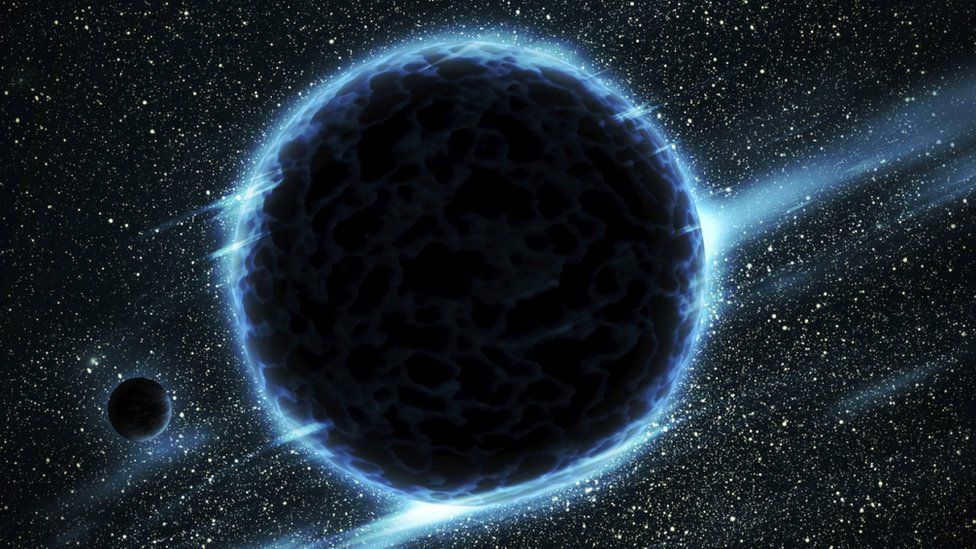
Outer space between planets
Although it may appear that outer space between planets is a complete void, the reality is quite different.
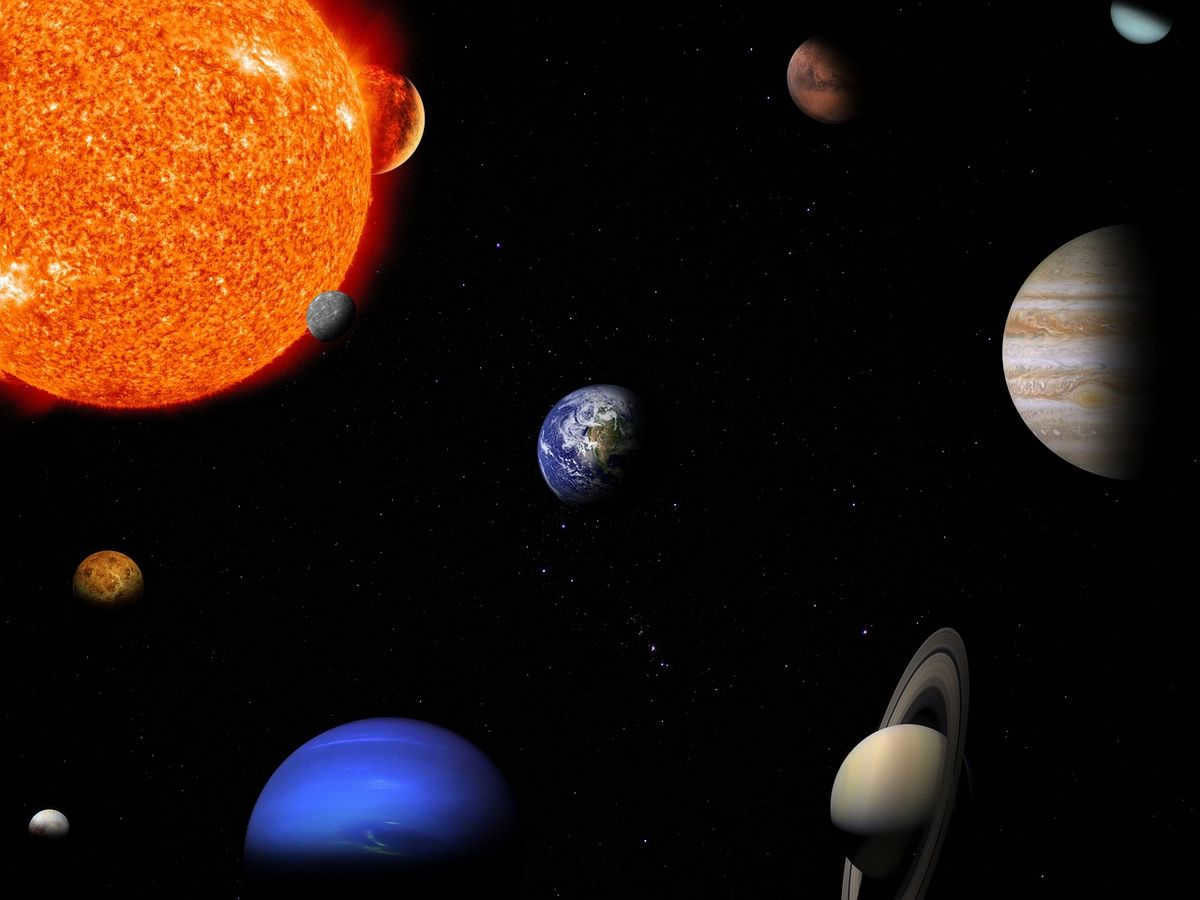
The space between the planets is occupied by various objects, such as small pieces of meteorites and comets. This area is also filled with plasma, dust, and the powerful “solar wind.” The solar wind is a fast-moving stream of ion particles that travels at a speed of 1200 km/s. It is responsible for causing magnetic storms and the beautiful phenomenon of the aurora borealis on Earth.

The Sun is orbited by the Earth, along with all the other planets in our Solar System. Additionally, each planet has its own moons that orbit around it.
As of 2006, Pluto was reclassified as a dwarf planet, reducing the number of planets in our system to 8.
Planetary Positions
Materials organized by subject
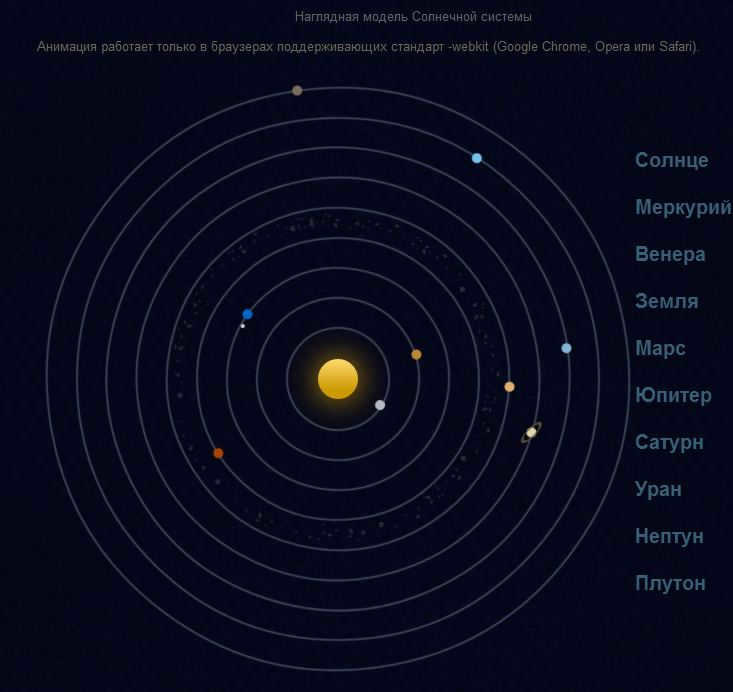
All of these planets orbit the Sun in nearly circular paths and rotate in the same direction as the Sun, except for Venus. Unlike Earth and most other planets, Venus rotates in the opposite direction, from east to west.
However, a simplified model of the solar system does not show these smaller details. Another interesting fact is that Uranus rotates almost on its side, with its axis tilted at about 90 degrees. This unusual tilt is believed to have been caused by a cataclysmic event in the past, possibly a collision with a large celestial object.
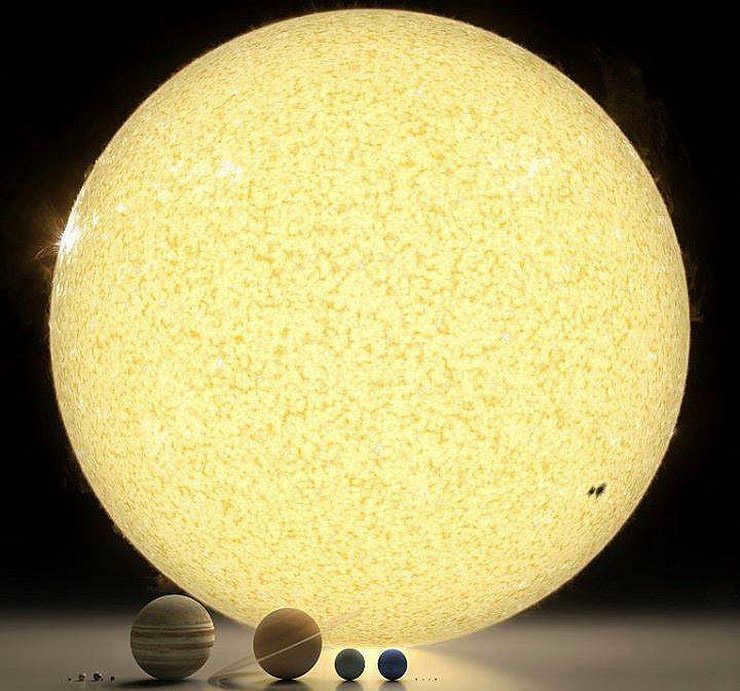
Comparison of the Sun and planets in terms of size
The dynamic representation of the Solar System provides us with a visualization of 8 planets, categorized into two groups: the Earth group planets (Mercury, Venus, Earth, and Mars) and the gas giant planets (Jupiter, Saturn, Uranus, and Neptune).
This representation effectively showcases the variations in planetary sizes. Planets within the same group possess similar attributes, including structure and relative size. A detailed model of the solar system in accurate proportions vividly illustrates this correlation.
Belts of asteroids and icy comets
Aside from the planets, our solar system is populated by numerous satellites (Jupiter alone boasts a whopping 62), countless asteroids, and billions of comets. There is also an asteroid belt located between the orbits of Mars and Jupiter, which can be vividly seen in the interactive model of the solar system.
What is the Kuiper Belt?
The Kuiper Belt is a region of space beyond the orbit of Neptune that is home to thousands of icy objects, including dwarf planets, asteroids, and comets. It is similar to the asteroid belt, but much larger and farther from the sun. Named after Dutch-American astronomer Gerard Kuiper, who predicted its existence in the 1950s, the Kuiper Belt is thought to be the source of many short-period comets. Scientists believe that studying the objects in the Kuiper Belt can provide valuable insights into the formation and evolution of our solar system.

Since the formation of the planetary system, the belt has been in existence, and beyond Neptune’s orbit lies the Kuiper belt, which continues to conceal numerous icy objects, including some that exceed Pluto in size.
The Oort Cloud
The Oort Cloud, located approximately 1-2 light years away from our Sun, is an immense sphere that surrounds our solar system. It is composed of the leftover materials that were expelled after the formation of our planetary system. The size of the Oort Cloud is so vast that it is virtually impossible to accurately depict its scale.
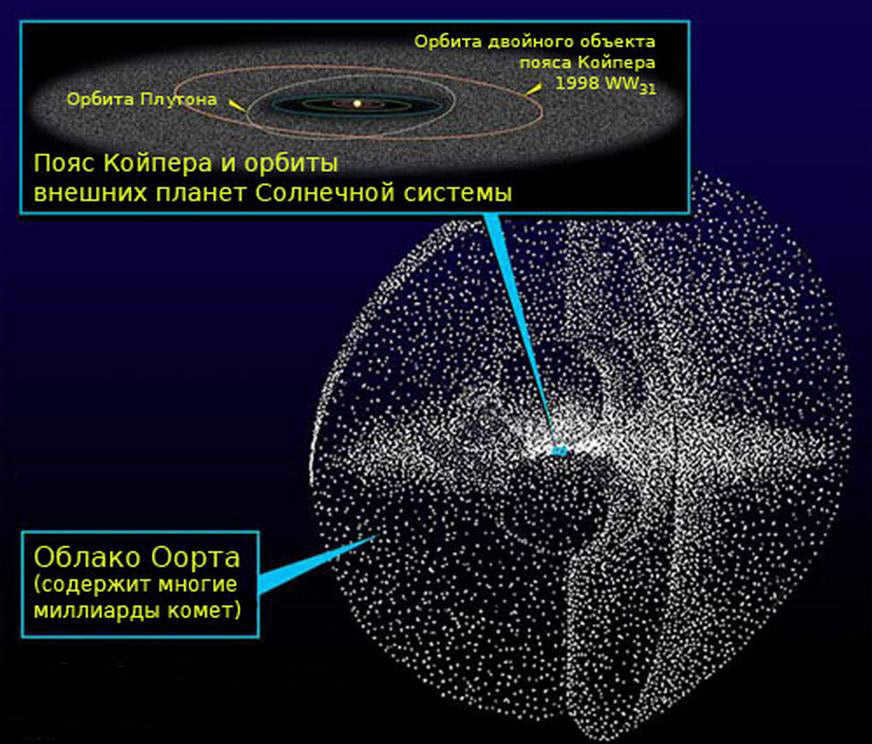
The Oort Cloud consistently delivers us with comets that have long orbital periods of approximately 100,000 years, providing us with a captivating spectacle. Nevertheless, not all of these comets are able to withstand the intense heat and gravitational pull of the Sun, as evidenced by the unfortunate incident involving comet ISON last year. It is unfortunate that this particular model of the flash system is unable to accurately portray the presence of such celestial bodies like comets.
Small planets
Resources organized by subject
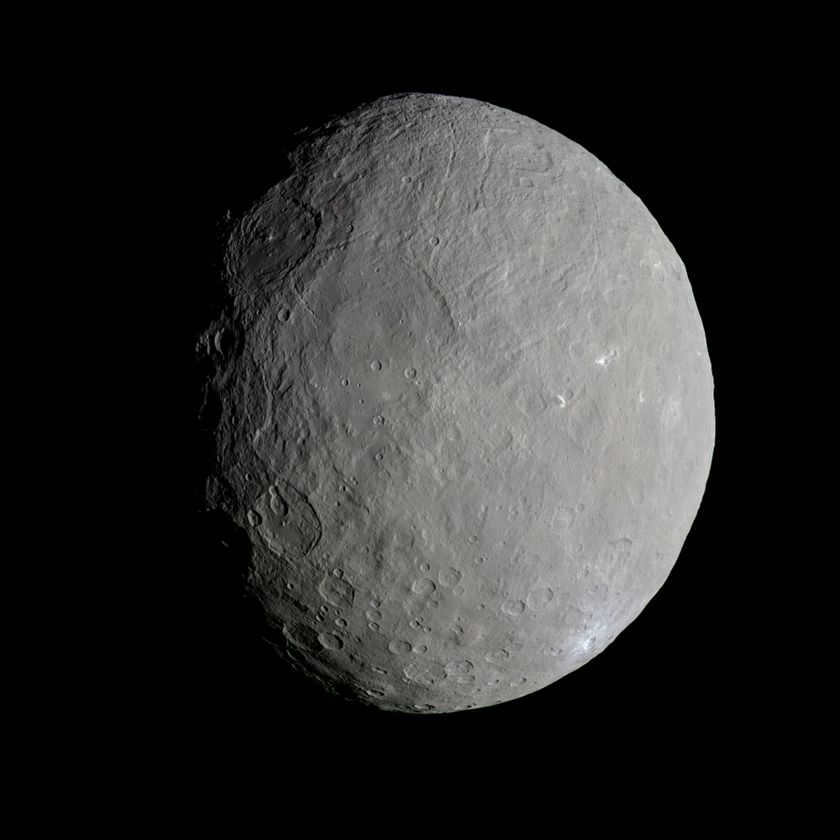
The significance of this particular category of celestial objects should not be overlooked, as it was only recently recognized as a distinct taxonomy following the well-known session of the International Astronomical Union (IAU) in 2006, during which the planet Pluto was reclassified.
And the prehistory started quite recently with the advent of modern telescopes in the early 1990s. In general, the early 1990s were characterized by a series of significant technological advancements.
First and foremost, it was during this time that the Edwin Hubble Space Telescope was launched, featuring a 2.4-meter mirror outside Earth’s atmosphere, thus providing access to an incredibly fascinating realm that ground-based telescopes couldn’t reach.
FurthermoreAdditionally, the advancement of computers and optical systems has led to the enhancement of telescopes and the augmentation of their functionalities. The utilization of digital cameras, which have completely replaced film, has enabled astronomers to capture and store nearly every photon that reaches the photodetector’s matrix with unparalleled precision. Moreover, the rapid progress in computer positioning and modern processing techniques has propelled astronomy into a new era of scientific exploration.
Warning signals
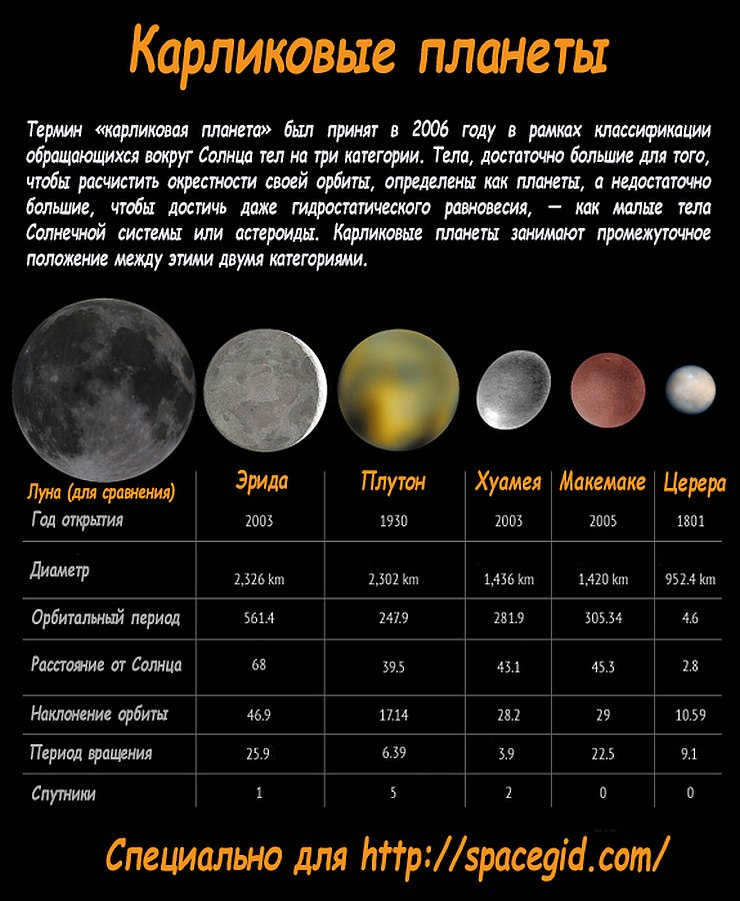
These advancements have enabled the detection of celestial bodies of considerable size beyond the orbit of Neptune, serving as an initial indication of a larger presence. The situation became more concerning in the early 2000s when Sedna and Erida were discovered in 2003-2004. Preliminary calculations suggested that these bodies were of similar size to Pluto, with Erida potentially even surpassing it.
Astronomers found themselves at a crossroads. They had to either accept the existence of a 10th planet or question the status of Pluto. New discoveries quickly followed. In 2005, Makemake was found, joining Kvavar (previously discovered in June 2002), Ork, and Varuna in filling the trans-Neptunian region, which was previously believed to be mostly empty beyond Pluto’s orbit.
In 2006, the International Astronomical Union came together and made the decision to classify Pluto, Erid, Haumea, and Ceres as dwarf planets. They also identified objects that were in a specific orbital resonance with Neptune, with a ratio of 2:3, as plutinos, while all other objects in the Kuiper belt were referred to as kyubivano. As a result, we are now left with only 8 planets.
The Origins of Contemporary Astronomical Perspectives
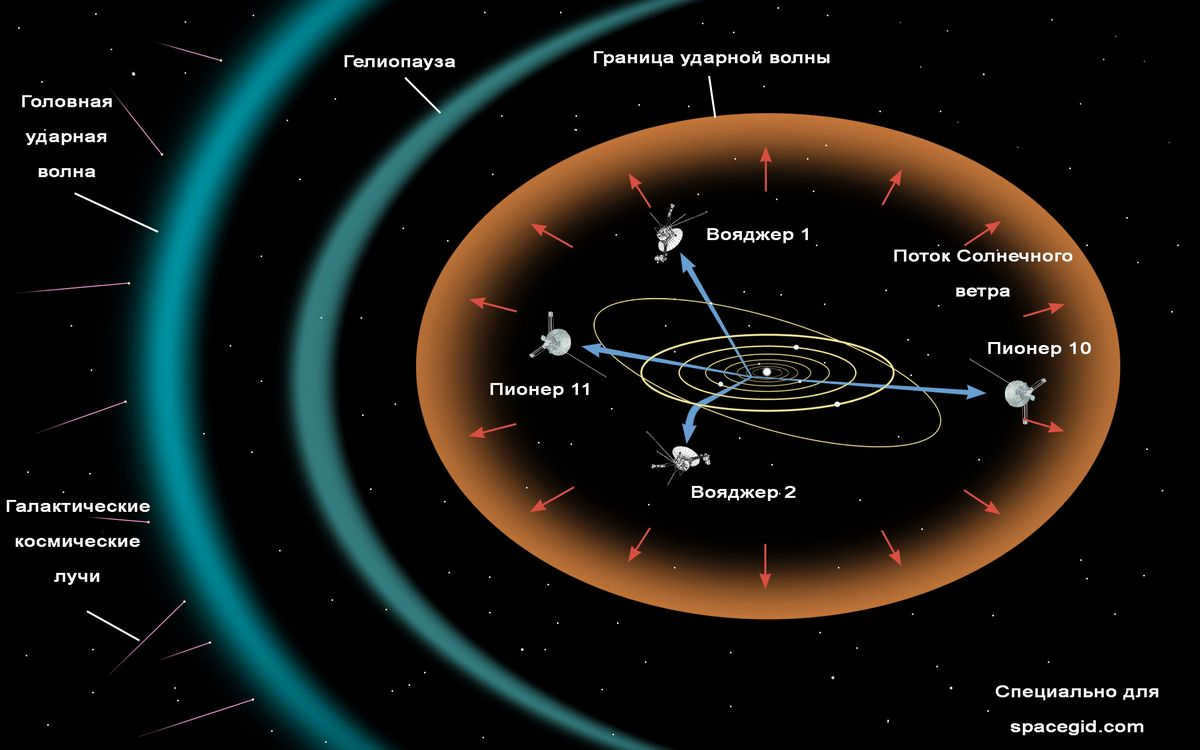
A graphic representation illustrating the arrangement of celestial bodies in the solar system and the departure of spacecraft from its boundaries.
In modern times, the heliocentric model of the solar system is widely accepted as an indisputable fact. However, this was not always the prevailing belief. It was not until the Polish astronomer Nicolaus Copernicus proposed the idea (which had actually been suggested earlier by Aristarchus) that the Earth revolved around the Sun, rather than the other way around. It is important to note that some individuals mistakenly attribute the creation of the first model of the solar system to Galileo. In reality, Galileo was simply advocating for Copernicus’ revolutionary idea.
Throughout history, numerous theories have emerged regarding the composition of our world. These theories have been visually depicted through drawings, diagrams, and models. However, as time has progressed and scientific and technological advancements have been made, the heliocentric mathematical model of the solar system has become widely accepted as an undeniable truth.
The display of the planets’ motion is now visible on the computer screen
When delving into the fascinating realm of astronomy, it can be challenging for an unprepared individual to fully comprehend the intricate workings of the celestial world. In order to facilitate this understanding, the use of modeling proves to be highly effective. The online solar system model has emerged as a result of the advancements in computer technology.
Resources related to the subject
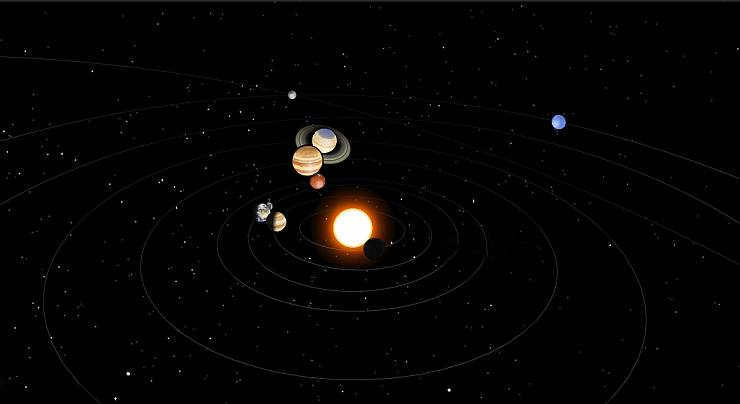
Attention has been given to our solar system, as experts in the field of graphics have created a computerized representation of it, complete with a date input feature, that is accessible to all. This interactive application showcases the movement of the planets revolving around the Sun, as well as the orbits of the largest satellites around the respective planets. Additionally, we are able to observe the asteroid belt located between Mars and Jupiter, along with the zodiacal constellations.
The movement of the planets and their satellites corresponds to their actual daily and yearly cycles. The model also takes into consideration the relative angular velocities and initial motion conditions of space objects in relation to each other. Therefore, their relative positions at any given moment in time accurately reflect reality.
The interactive Solar System model allows users to keep track of time using a calendar depicted as an outer circle. The arrow on the calendar points to the current date. The speed of time can be adjusted by moving the slider located in the upper left corner. Additionally, users have the option to display moon phases, with the dynamics of the moon phases shown in the lower left corner.
Several presuppositions
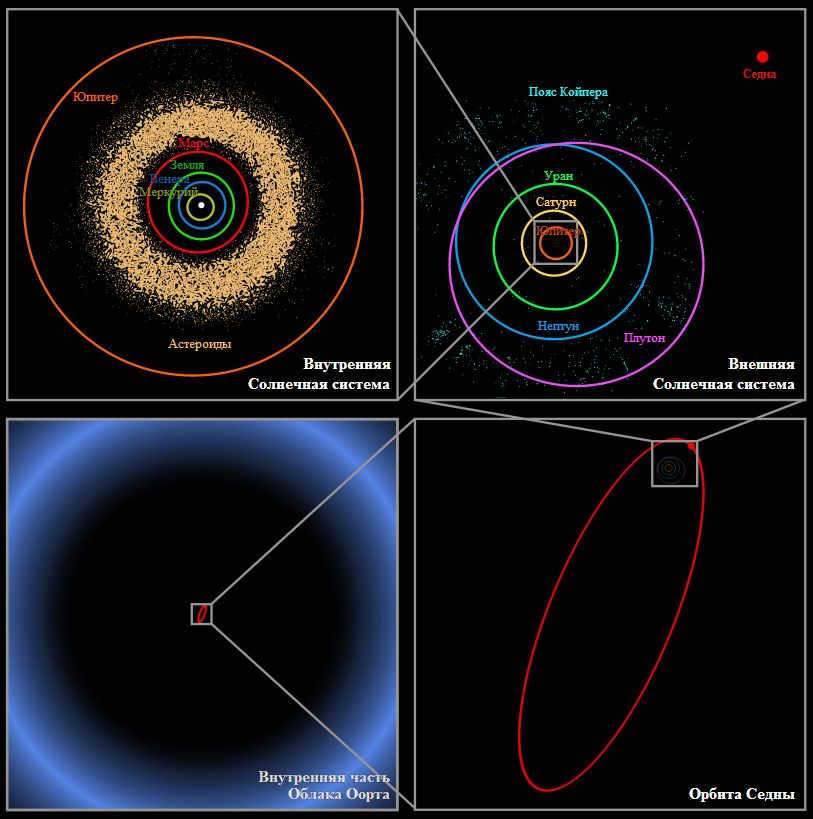
The size comparison of our solar system
The only downside to this precise representation of the Solar System is the disproportionate size of the objects and the distances between them. This discrepancy exists because it is extremely challenging to accurately depict the dynamics of planetary motion while maintaining proportional scales.
This realistic model of the solar system allows for visual examination of the planets and their satellites as they orbit the Sun, making the study of astronomy more enjoyable and accessible.
There is another flash model available that displays the solar system. It provides information about the planets, including their photos and distance from the Sun. Additionally, this model allows users to zoom in and out on celestial objects. Unlike the previous model, this one does not allow users to enter specific dates or switch between geo- and heliocentric views. However, this variation serves as a great alternative and allows us to better understand the vastness of our planetary system.
Diagram for Kids Explaining the Planetary Rotation
If you’re looking to explain the concept of planetary rotation to your young child, I have a simplified diagram that can help. This diagram may not include the actual names of the planets, but it accurately represents how they revolve around the sun.
Lastly, I recommend watching a video that shows how the Earth appears from the International Space Station.
The order of the planets in the Solar System, from nearest to farthest from the Sun, is as follows: Mercury, Venus, Earth, Mars, Jupiter, Saturn, Uranus, and Neptune. The existence of a ninth planet is currently being investigated and has not yet been confirmed. Additional information can be found in the Bizmedia.kz article.
Be sure to subscribe to stay informed.
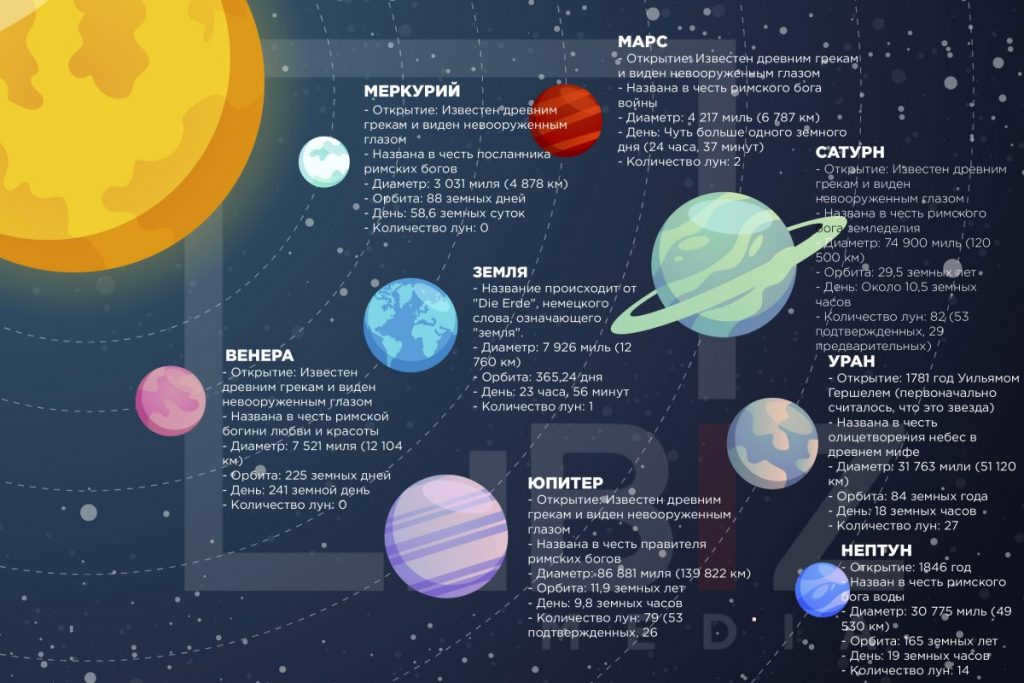
The solar system is estimated to be approximately 4.6 billion years old. Scientists propose that it originated from the gravitational collapse of a cloud of gas and dust in outer space. As this collapse occurred, the cloud began to spin and take on a flattened, disk-like shape. The center of this disk became incredibly hot and dense, ultimately giving rise to the Sun. The material located farther from the center gradually cooled down and coalesced into various celestial bodies such as planets, moons, asteroids, and comets.
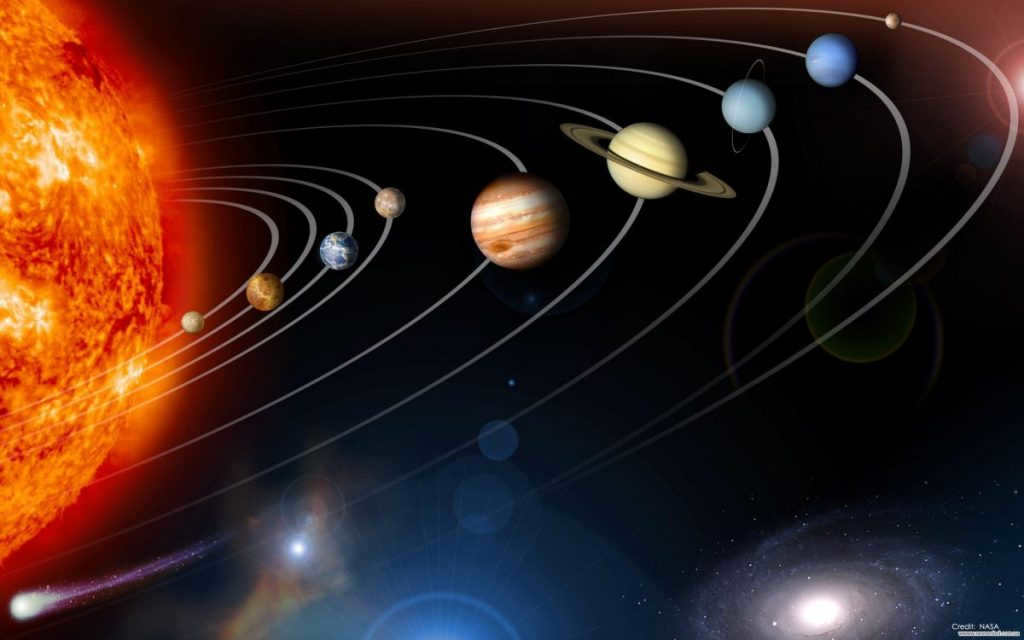
The solar system is not only composed of the planets in close proximity to the Sun, but also encompasses an asteroid belt, four gas giants, and the Kuiper belt and heliopause. As a result, the system is characterized by its diversity and captivating assortment of objects, planets, and landscapes.
Enveloping the solar system is a colossal sphere known as the Oort cloud, which is situated approximately 9 billion miles away from the Sun and serves as the residence for numerous comets.
Pluto’s historical background
Ever since Pluto was first spotted in 1930, numerous individuals have become aware of the existence of nine planets within our solar system. However, the late 1990s marked a turning point as astronomers initiated a heated discussion regarding Pluto’s planetary status. Ultimately, in 2006, the International Astronomical Union made a highly controversial determination classifying Pluto as a “dwarf planet,” consequently reducing the total count of planets in our solar system to eight.
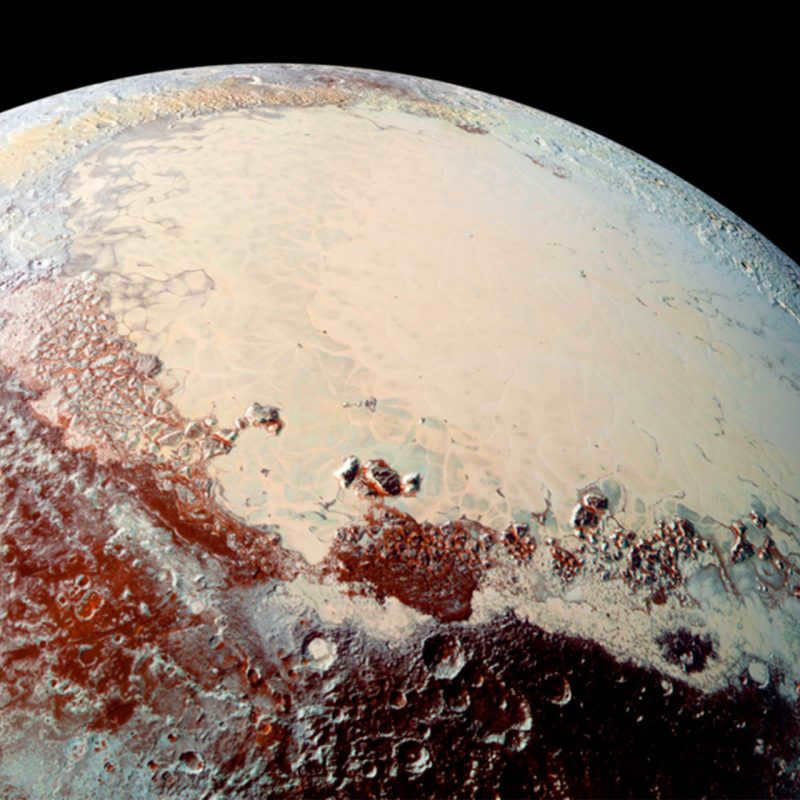
There could be a total of nine planets rotating around our sun. This matter has gained a lot of attention after the discovery of its existence through mathematical evidence on January 20, 2016. The hypothetical “Ninth Planet,” also known as “Planet X,” is estimated to have a mass about 10 times that of Earth and 5,000 times that of Pluto.
There exist various categories of planets in the solar system
These include terrestrial planets and gas giants. Terrestrial planets are comparatively smaller and possess solid surfaces. Conversely, gas giants are considerably larger and lack any solid surface.
The quartet of planets lying in closest proximity to the Sun – Mercury, Venus, Earth, Mars – are commonly known as terrestrial planets due to their rocky surfaces. While Pluto also boasts a rocky surface, it is typically not classified as one of the four terrestrial planets.

The group of four outer planets – Jupiter, Saturn, Uranus, and Neptune – share similarities in terms of their size and composition, as they are predominantly composed of gases such as hydrogen, helium, and ammonia. These planets are commonly referred to as Jupiterian or “Jupiter-like” due to their resemblance to Jupiter.
Arranged in descending order of size, the planets are as follows: Mercury, Mars, Venus, Earth, Neptune, Uranus, Saturn, and Jupiter.
While Jupiter and Saturn are often referred to as gas giants, Uranus and Neptune, which are located further away, are known as ice giants. This distinction arises from the fact that Uranus and Neptune possess higher levels of atmospheric water and other ice-forming molecules like methane, hydrogen sulfide, and phosphene. These substances crystallize into clouds under the cold conditions prevailing on these planets.
What constitutes a planet in the solar system?
The International Astronomical Union (IAU) defines a planet as a celestial body that orbits the Sun independently, not as a satellite of another object. Additionally, a planet must have enough mass to form a spherical shape due to its own gravitational force, and it should have cleared its vicinity of other objects that orbit around it.
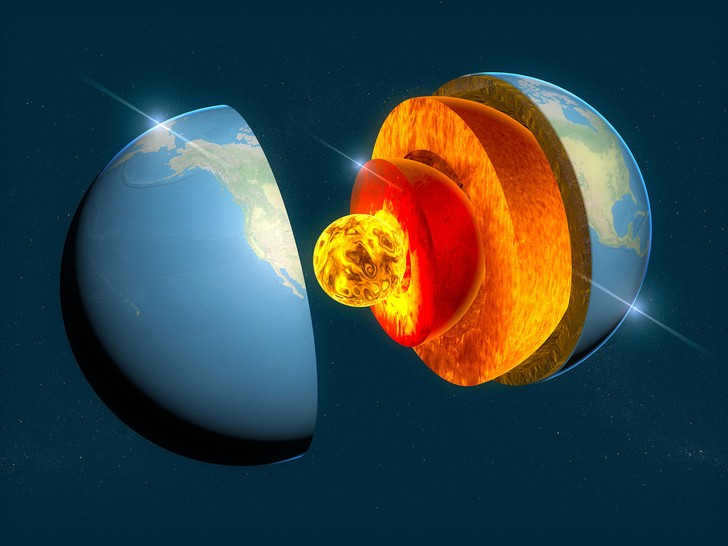
The development of the planet definition helped to exclude certain objects from being classified as planets, which was beneficial for refining the definition. However, it posed challenges when astronomers came across more and more objects that resembled planets. One of these objects was Pluto, which was later reclassified as a dwarf planet.
The issue with Pluto lies in its small size and irregular orbit, preventing it from clearing its surroundings of debris – it coexists with numerous other objects in the Kuiper Belt. As a result, it does not meet the criteria of being a “true” planet according to the International Astronomical Union’s definition. Despite this reclassification, there is still controversy surrounding Pluto’s status as a planet.
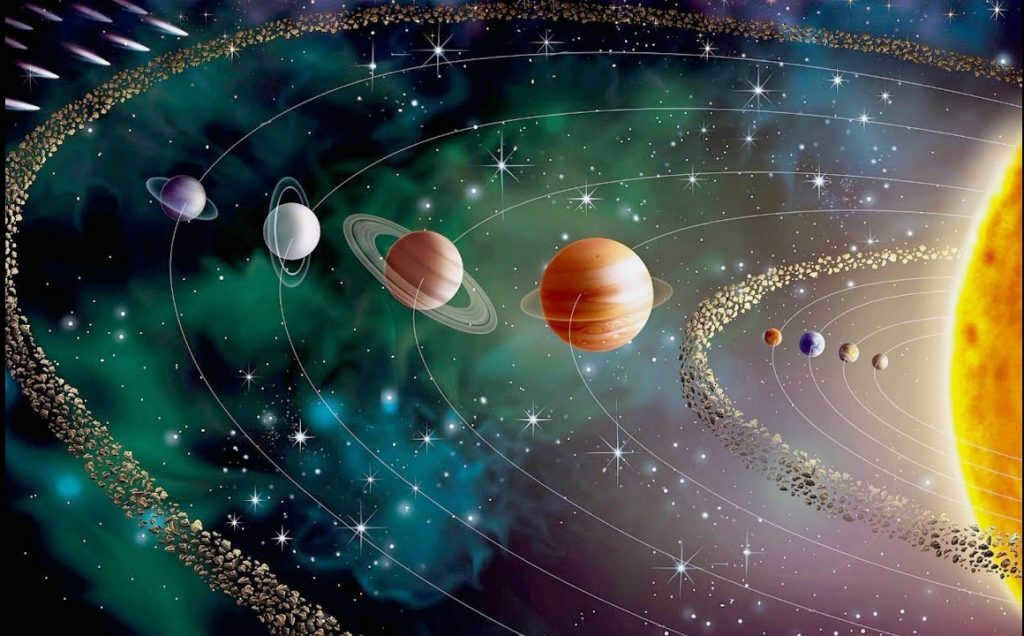
Ceres, which is located in the asteroid belt between Mars and Jupiter, was downgraded from its planetary status and reclassified as an asteroid. However, due to its significant size compared to other asteroids, it was later acknowledged as a dwarf planet by astronomers. There are also some astronomers who consider Ceres to be the tenth planet.
The Sun
The Sun, the biggest entity in our solar system, plays a vital role in providing the necessary heat and light for sustaining life on our planet. Revolving around our star, the planets follow elliptical paths, with the Sun positioned slightly askew from the center of each ellipse.
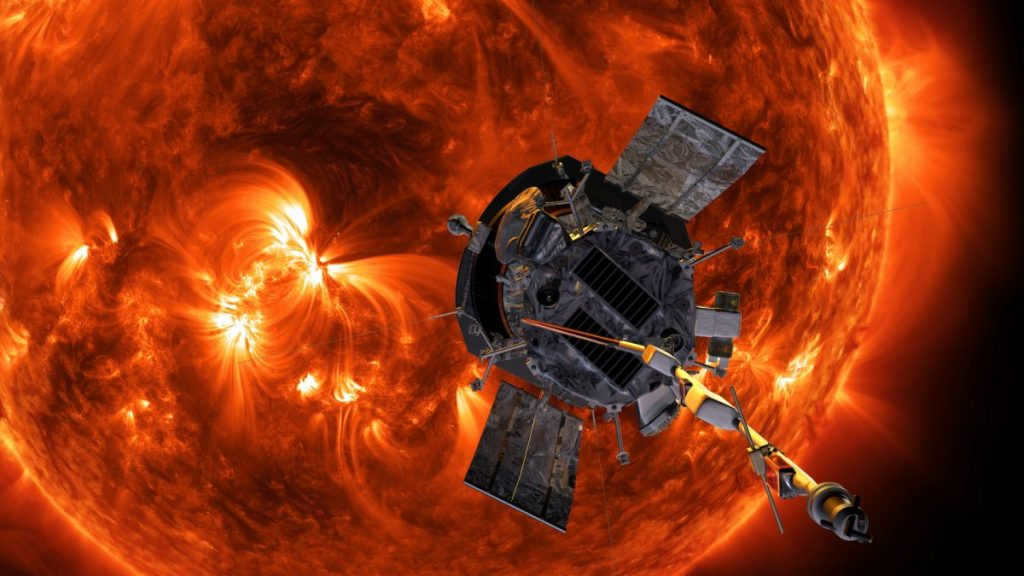
NASA possesses a collection of spacecraft that diligently observe the Sun in order to gain a deeper understanding of its composition and enhance our ability to forecast space weather. Given that space weather can have considerable repercussions on our planet, it is crucial that we possess a comprehensive comprehension of this phenomenon.
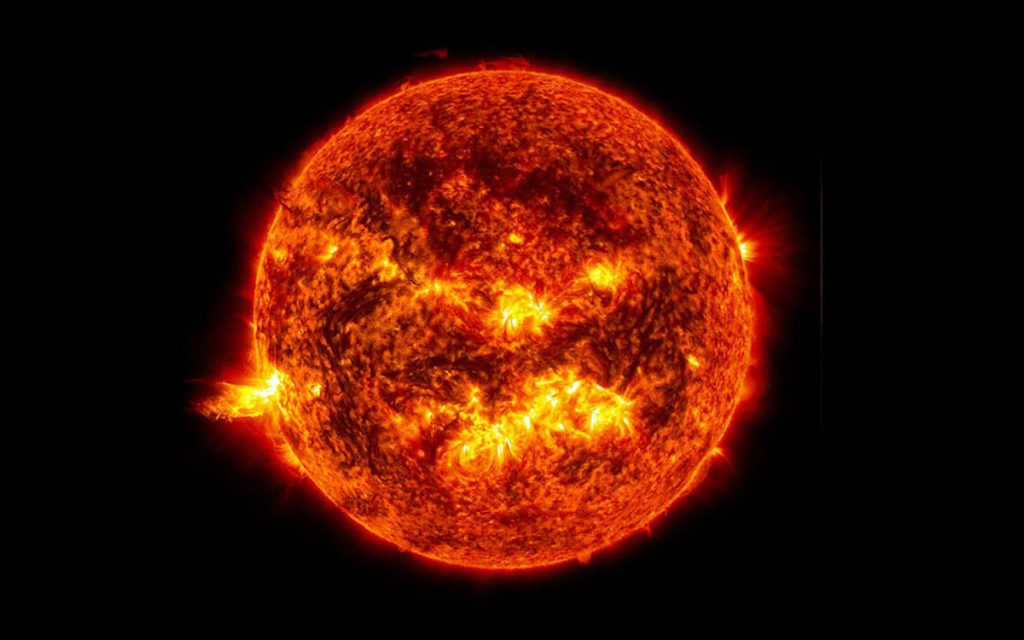
The Sun is home to a variety of celestial objects, such as sunspots, solar flares, and prominences. Sunspots are areas on the Sun’s surface that appear darker and cooler than their surroundings. Solar flares are brief episodes of intense electromagnetic radiation, while prominences are large structures of plasma held together by magnetic fields.
Mercury is the planet nearest to the sun
Mercury is one of the closest celestial bodies to the sun, and it is also one of the smallest objects in the solar system. It takes only 88 days for Mercury to complete an orbit around its star. Due to its close proximity to the Sun, the surface of Mercury is extremely hot.
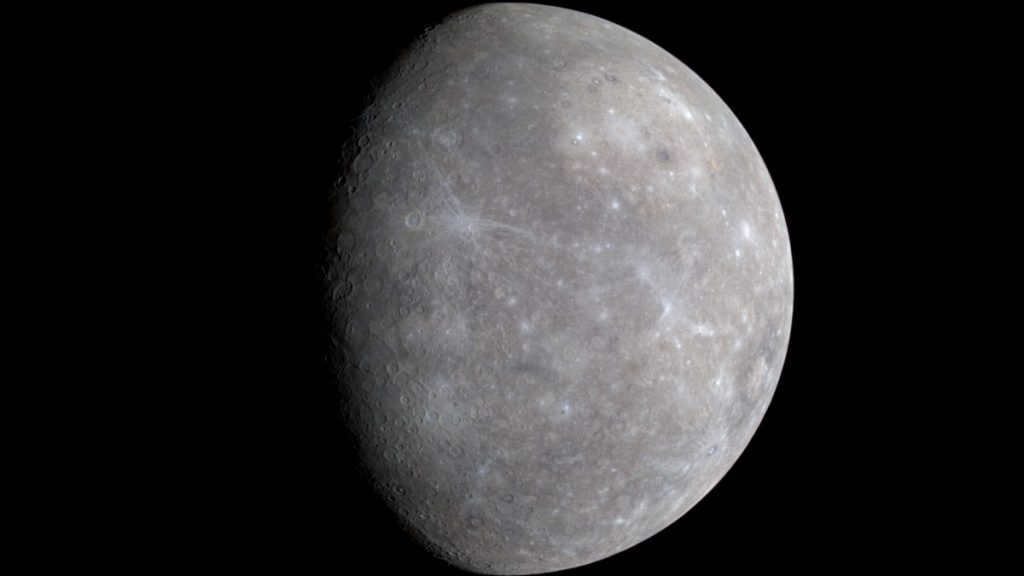
The temperature on Mercury can fluctuate significantly based on the time of day. During daylight hours, temperatures can soar to a scorching 840 degrees Fahrenheit (450 degrees Celsius), which is sufficiently intense to liquefy lead. However, when night falls, temperatures plummet to a bone-chilling minus 290 degrees Fahrenheit (minus 180 degrees Celsius).
This celestial body spans a width of 3,031 miles and lacks any natural satellites. Mercury’s atmosphere is relatively thin and primarily composed of oxygen, sodium, hydrogen, helium, and potassium. Unfortunately, this atmosphere fails to shield the planet from hurtling meteors, resulting in a pockmarked surface dotted with craters.
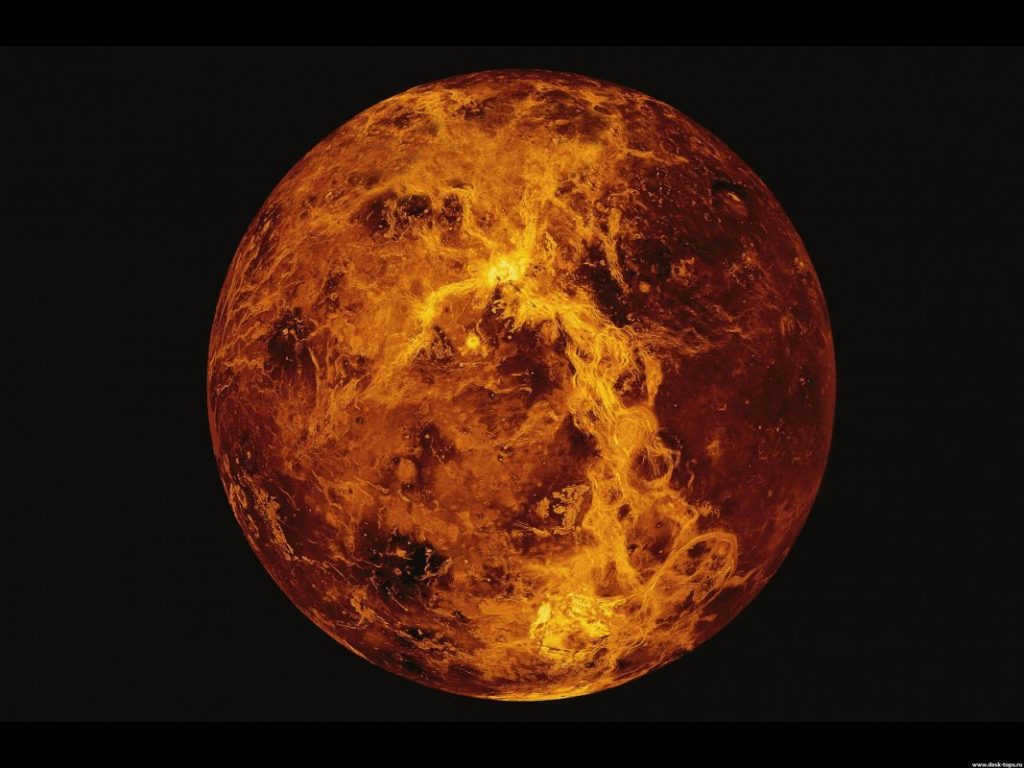
At the north pole of Mercury, the MESSENGER spacecraft made a remarkable discovery. It found water ice and frozen organic compounds, providing evidence that volcanism had a significant impact on shaping the planet’s surface.
Earth’s Doppelganger, Venus
Venus bears a striking resemblance to Earth as it holds the position of the second planet from the Sun. However, it possesses a thick atmosphere comprised of sulfuric acid clouds, rendering it highly poisonous. Due to the intense greenhouse effect on Venus, it stands as the most scorching planet within our solar system.
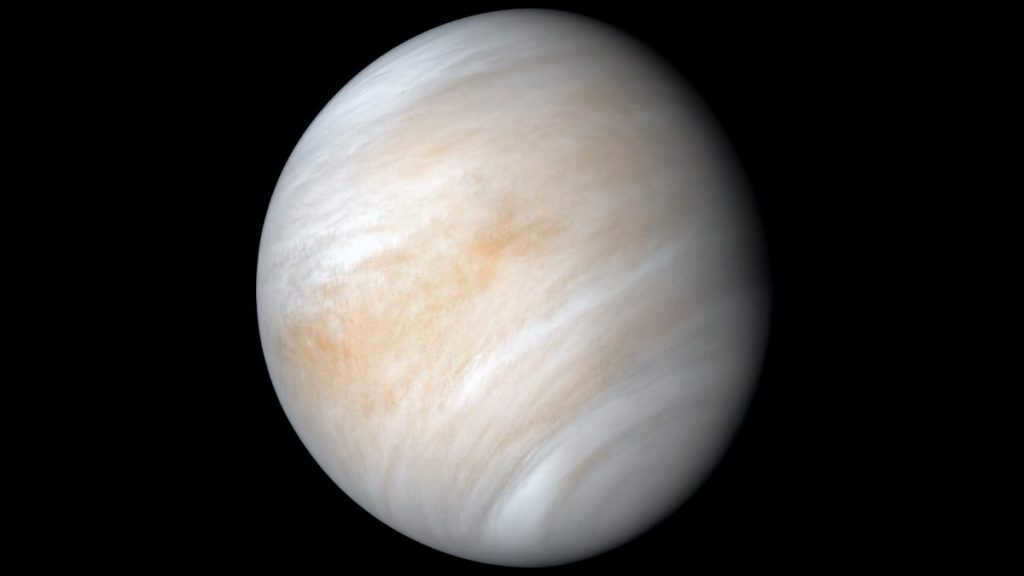
With temperatures reaching a scorching 900 degrees Fahrenheit, Venus has an incredibly hot surface. The intense pressure of 92 bar on its surface is enough to crush you. Interestingly, Venus rotates slowly on its axis from east to west, opposite to the direction of most other planets.
Venus is similar in size to Earth and can be observed with radar images showing its mountains and volcanoes beneath its atmosphere. However, there are many other stark differences between the two planets.
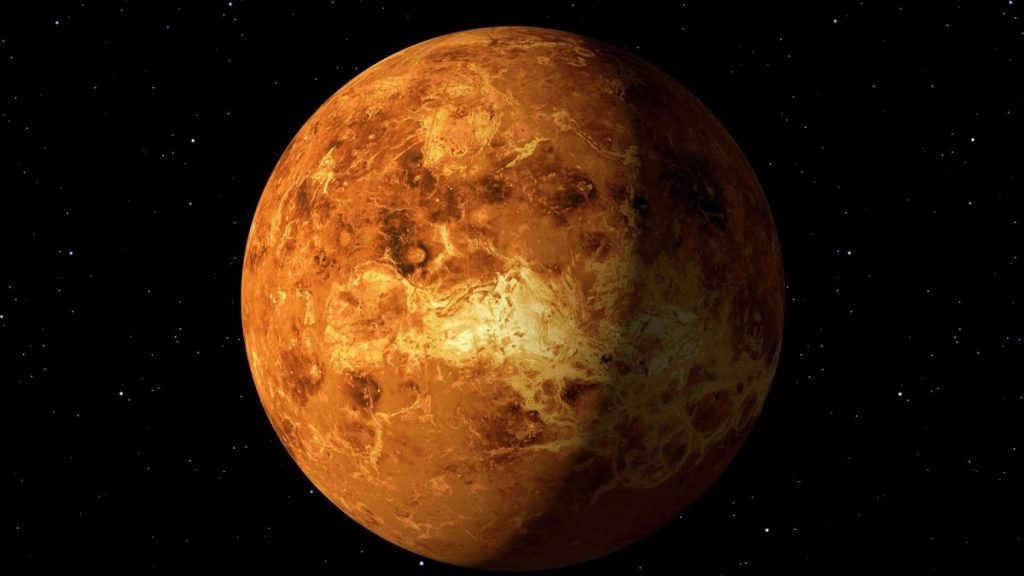
The ancient Greeks had a belief that Venus existed as two distinct entities, one visible in the morning sky and another in the evening sky. This unique perception was influenced by the planet’s remarkable brightness, often surpassing that of any other celestial object, which consequently led to numerous accounts of unidentified flying objects.
The Existence of Life on Earth
Occupying the third position in our solar system, Earth predominantly consists of water. Its atmosphere is primarily composed of nitrogen and oxygen, creating an environment suitable for the flourishing of life forms on our planet.
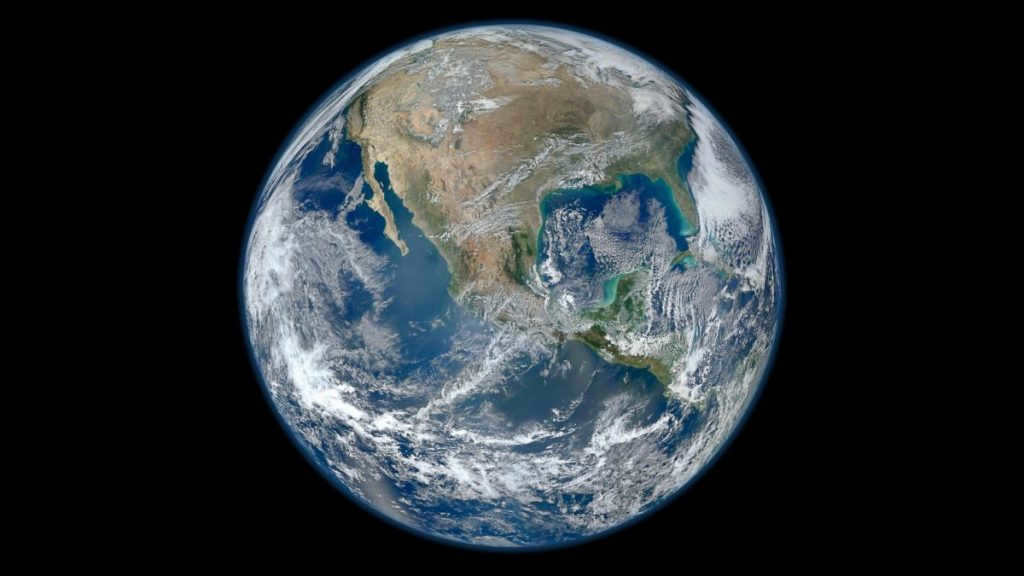
The Earth spins on its axis at a speed of 1,532 feet per second (467 meters per second), which is slightly over 1,000 miles per hour (1,600 km/h) at the equator. In its orbit around the Sun, the Earth travels at a velocity of more than 18 miles per second (29 kilometers per second).
Mars: The Planet with the Potential for Life
Mars stands out as a distinctive celestial body due to its potential for harboring life. It is the only known planet that could have supported or may still support living organisms. Mars possesses a remarkably thin atmosphere, predominantly composed of carbon dioxide, which creates less-than-optimal conditions for life forms as we currently understand them.
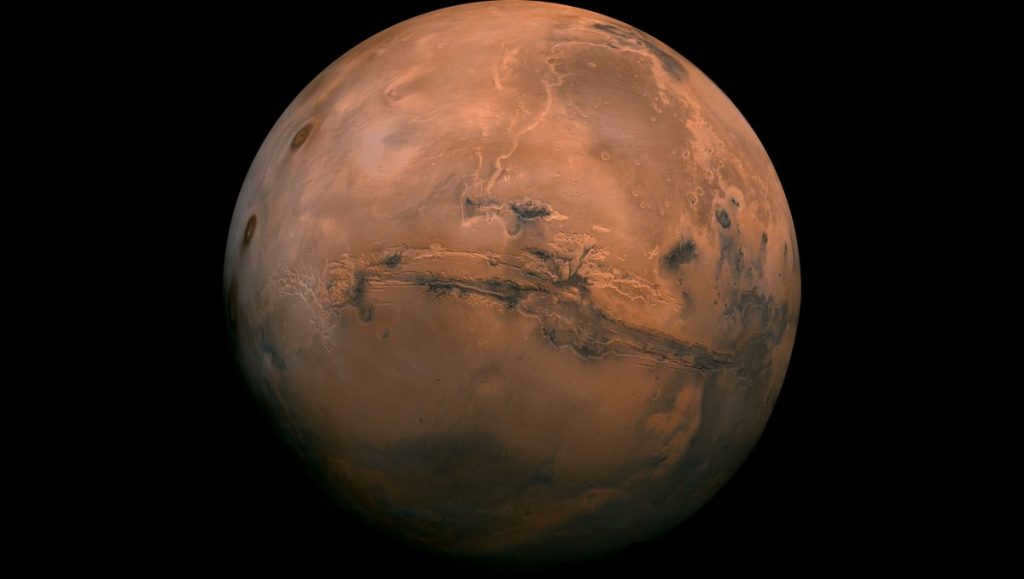
In general, Mars bears resemblance to Earth. It is comprised of rocks, featuring mountains, valleys, and canyons, as well as experiencing storm systems varying from localized dust devils resembling tornadoes to dust storms that envelop the entire planet.
Scientists hypothesize that ancient Mars may have harbored life in the form of bacteria and other microorganisms. As a result, a multitude of missions have been launched to Mars with the goal of uncovering evidence of previous life or potentially even current living organisms.
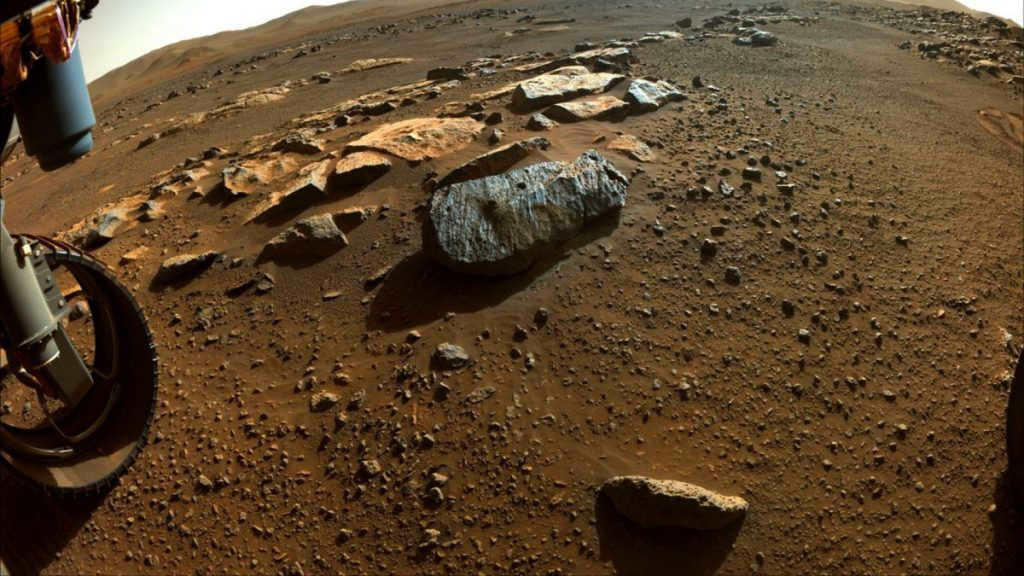
According to the research, it can be concluded that Mars used to be a planet with a higher temperature and more water, having rivers and oceans. Evidence of this wetter Mars can still be found today, such as ice and frozen water located at the poles.
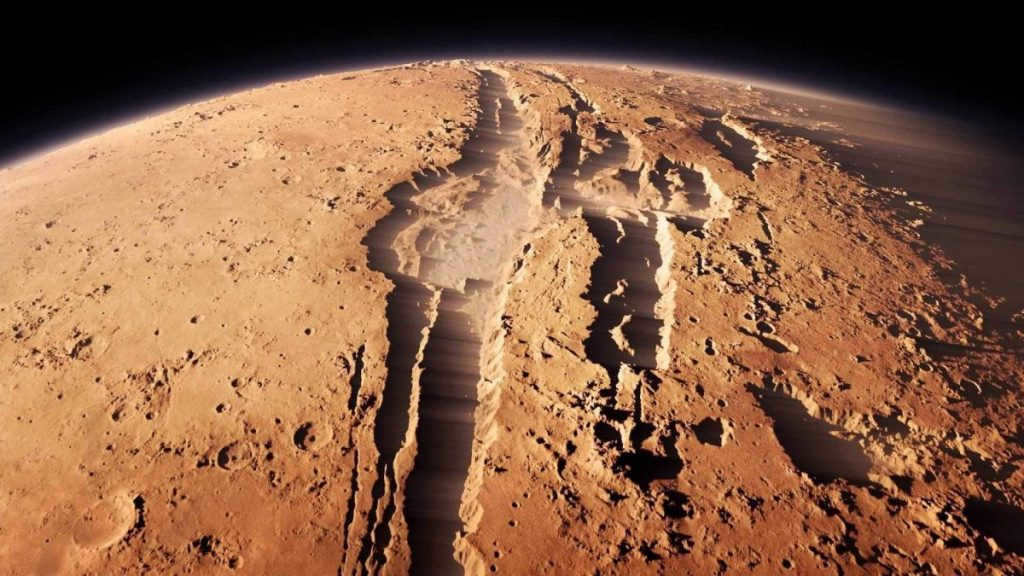
Scientists are currently conducting research to determine if there are any regions on Mars that could potentially support life. These areas could include the subterranean environment or the polar regions of the planet. The exploration of Mars involves the use of spacecraft to conduct detailed studies and gather more information about the planet.
The region between Mars and Jupiter, known as the asteroid belt, is home to a collection of small celestial bodies. As per the data provided by NASA, the primary asteroid belt consists of around 1.1 to 1.9 million asteroids that measure over 1 kilometer in diameter, with countless more smaller asteroids present.
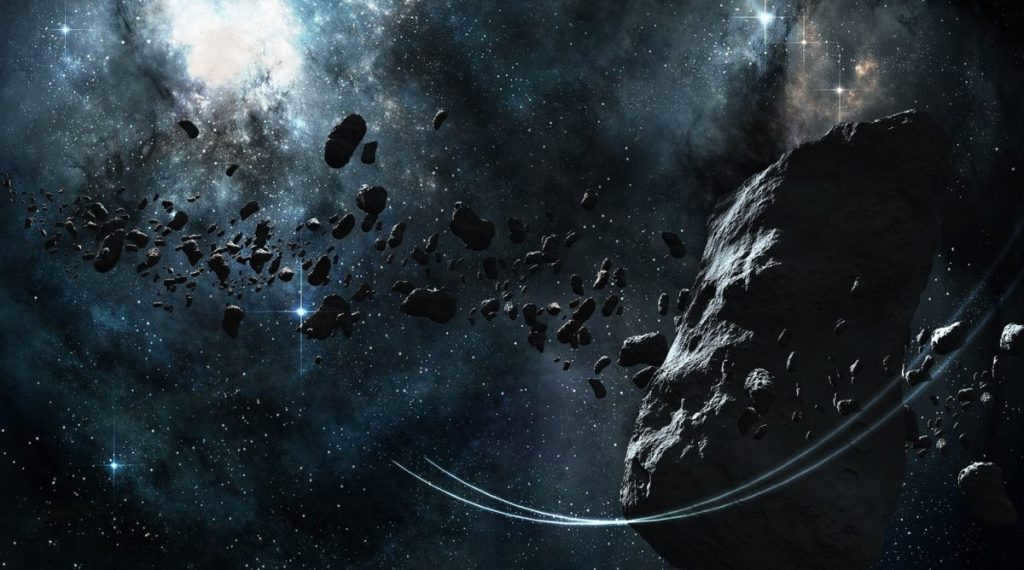
Within this area lies the dwarf planet Ceres. There exist numerous asteroids whose trajectories bring them into proximity with the Sun, occasionally leading to impacts with Earth or other planets within the Earth group.
Jupiter, which is the fifth planet from the Sun, holds the title for being the largest planet in our solar system. According to the National Aeronautics and Space Administration (NASA), it boasts a mass that is over two times greater than the combined mass of all the other planets in our system.
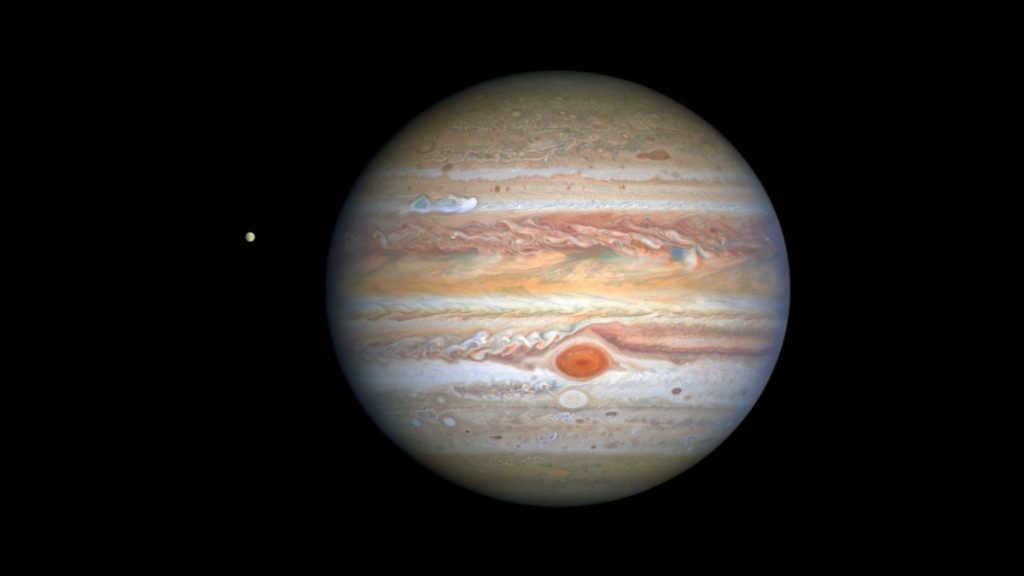
Jupiter, the largest planet in the solar system, is home to a massive storm known as the Great Red Spot. This enormous storm has been raging for an impressive 150 years and spans over 10,000 miles in width. It was first discovered in 1831 and continues to captivate scientists and astronomers.
In addition to its mesmerizing storm, Jupiter boasts a powerful magnetic field and an astonishing 77 moons. Among these moons is Ganymede, which holds the title for being the largest moon in our entire solar system.
The giant loops belong to Saturn
Saturn possesses enormous and unique loops that are visible from our planet. While other planets in our solar system also possess rings, Saturn’s rings are renowned worldwide. Moreover, it is situated as the sixth planet in the solar system.
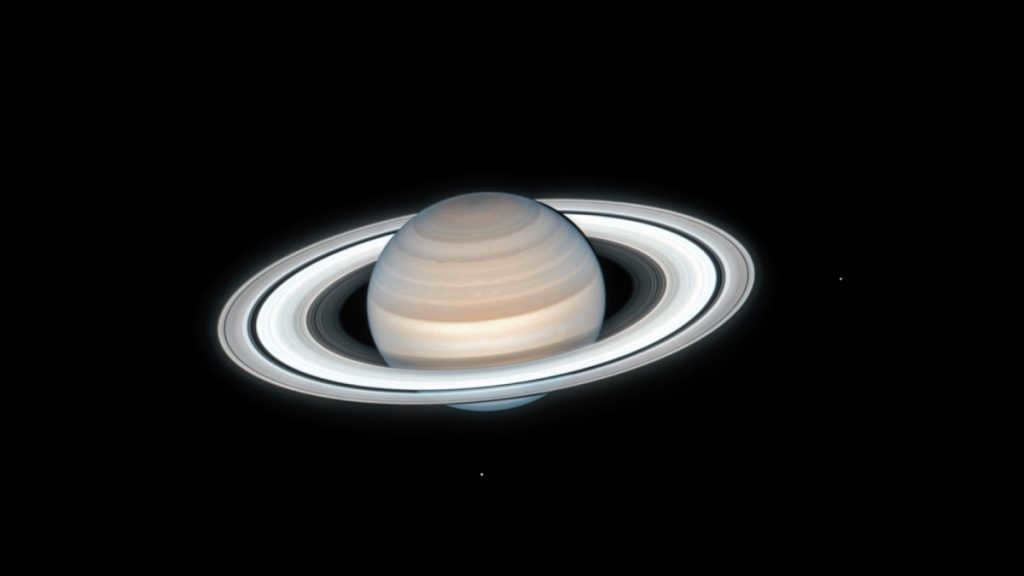
Were you aware that if you were to place Saturn into a bathtub, it would effortlessly float? This is due to the fact that Saturn’s average density is lower than that of water. You would simply need to locate a bathtub that is large enough.
A multitude of individuals have fabricated various legends regarding the initial discovery of Saturn by Galileo Galilei in the early 1600s. During that time, he believed that it was a three-part entity: a planet and two sizable moons on either side. However, he eventually came to the realization that it was actually the rings encircling the planet.
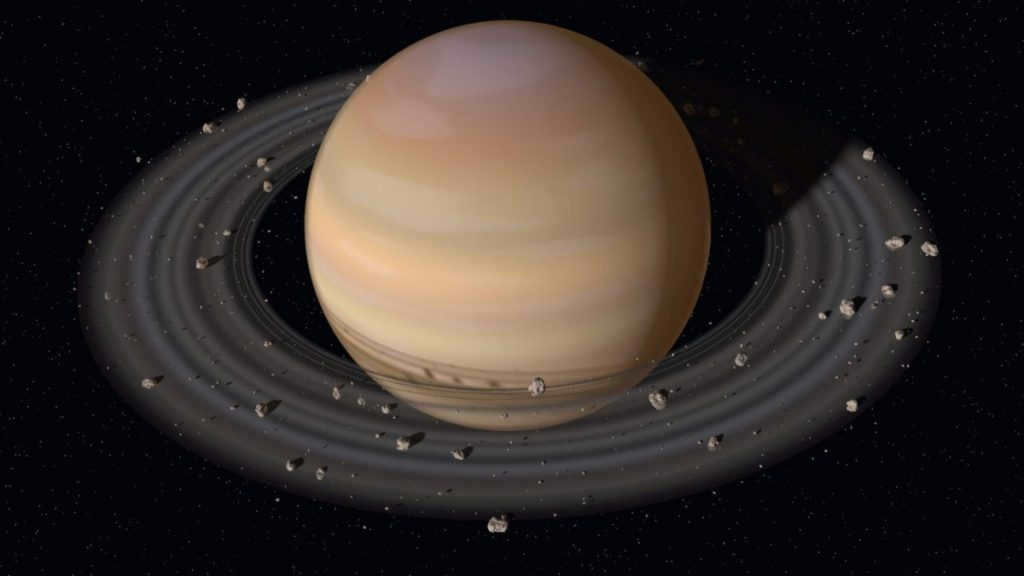
The rings encircling Uranus consist of a combination of ice and rock, and the process by which they came into existence remains a mystery to scientists. This gas giant is primarily composed of hydrogen and helium, and it also boasts a multitude of moons.
A Distinctive Feature – Uranus
In contrast to the majority of planets, Uranus possesses an inclined orbit, resulting in its poles not aligning with the Sun in a similar manner to Earth. Consequently, the climate on Uranus differs greatly from that of our planet: in the northern hemisphere, summers persistently exhibit brightness while winters endure for decades.
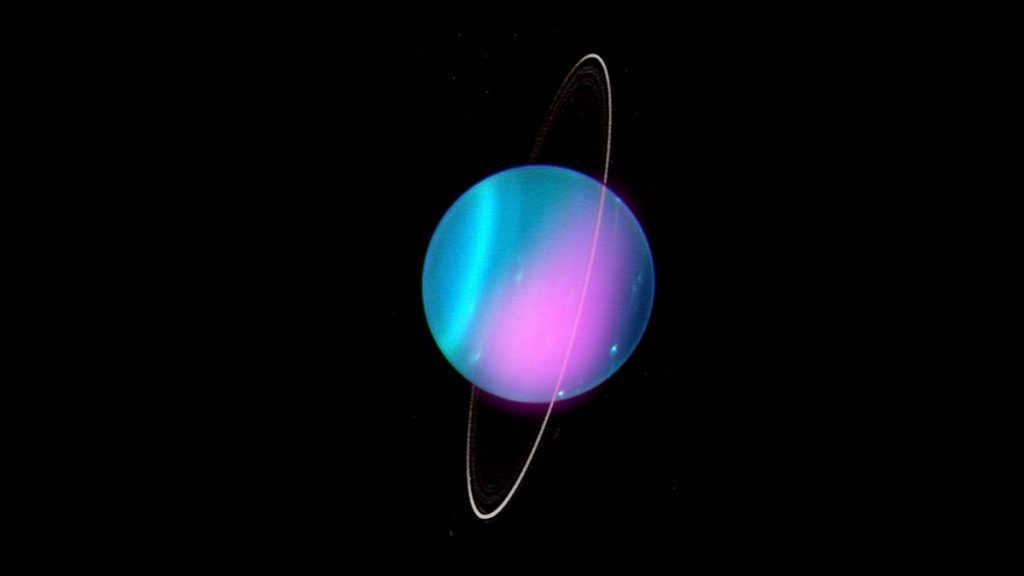
The unique positioning of Uranus results in the formation of highly unusual clouds composed of hydrogen sulfide, the same chemical responsible for the unpleasant odor associated with rotten eggs.
Astronomers hypothesize that a collision with an object twice the size of Earth over 4 billion years ago caused Uranus to become tilted. This tilt leads to the occurrence of extreme seasons lasting over 20 years, where one pole experiences sunlight while the other remains in darkness for 84 Earth years.
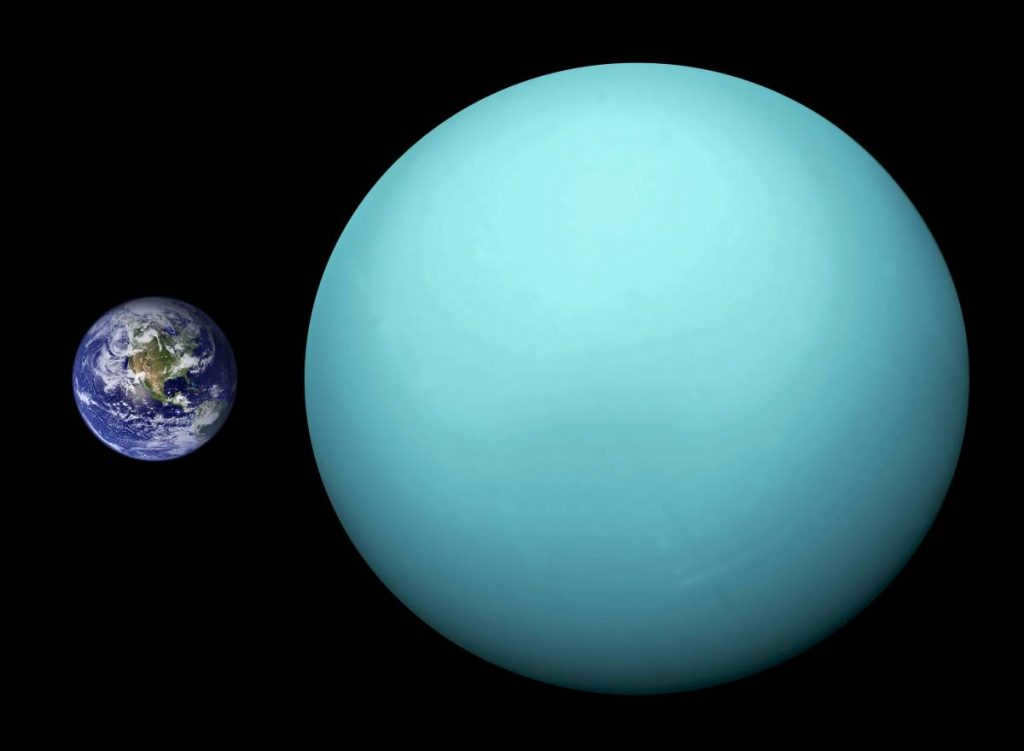
It is probable that the collision with another celestial body resulted in the creation of its numerous moons and rings. The collision is thought to have deposited rocks and ice into the orbital path of Uranus, which subsequently formed the planet’s 27 moons. The presence of methane in Uranus’ atmosphere gives the planet its distinctive blue-green color.
The lowest recorded temperature on Uranus is -224 degrees Celsius, making it the coldest temperature ever recorded within the entire solar system.
Neptune: The Enormous Blue Planet
Neptune, known as the eighth planet in our solar system, stands out with its remarkable size and captivating blue color. It is also recognized as the coldest planet, with an average temperature of a chilling minus 210 degrees Celsius at the uppermost layer of its clouds.
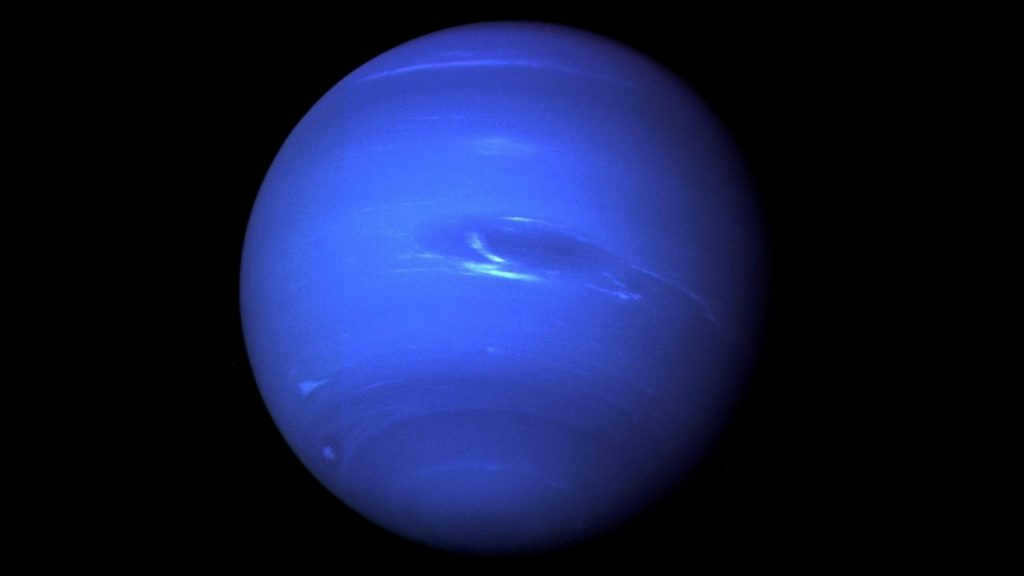
Neptune is a celestial body which has a similar magnitude as Uranus. It is renowned for its exceedingly powerful gusts of air that can achieve supersonic velocities. Furthermore, Neptune is situated significantly more distant from the Sun in comparison to our planet Earth – more than 30 times greater in distance.
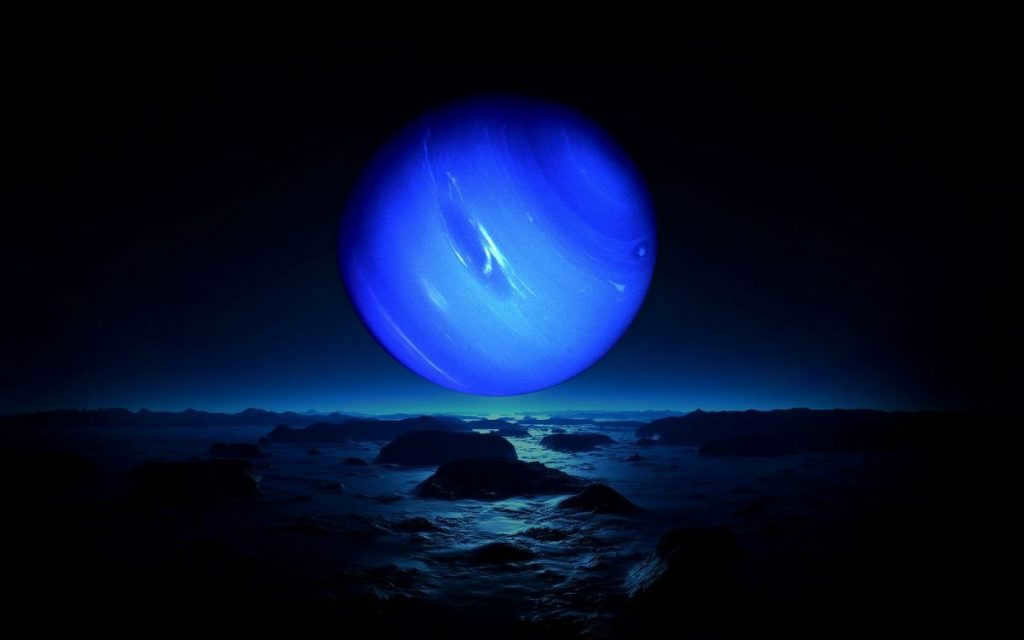
The discovery of Neptune was a significant milestone in the history of astronomy. Unlike previous planets, its existence was not initially observed through visual means, but rather predicted through mathematical calculations. The irregularities in the orbit of Uranus caught the attention of French astronomer Alexis Bouvard, who hypothesized that the gravitational pull of an unknown planet might be responsible. Building upon Bouvard’s theory, German astronomer Johann Gottfried Halle dedicated himself to calculating the precise location of this mysterious planet. Eventually, his efforts paid off, and Neptune was successfully spotted through a telescope. With a mass approximately 17 times greater than that of Earth, Neptune boasts a solid core at its center.
The region beyond Neptune
Astronomers have had a long-standing suspicion that there exists a region of icy material called the Kuiper belt, which extends much further out than Neptune’s orbit. This region is believed to be about 30 to 55 times the distance between the Sun and Earth. Over the past decade, more than a thousand objects in this region have been discovered. Scientists believe that the Kuiper belt contains hundreds of thousands of icy bodies, many of which are over 60 miles in width, as well as approximately one trillion comets.
Within the Kuiper belt, there are numerous dwarf planets, including well-known ones such as Pluto, Makemake, Haumea, and Eris. There is also another potential dwarf planet called Quaoar, although it has not yet received official classification. Additionally, Sedna, which is about three-quarters the size of Pluto, was the first dwarf planet to be found in the Oort cloud. On July 14, 2015, the New Horizons spacecraft completed the first-ever flyby of the Pluto system.
Formerly a planet – Pluto
Pluto, which used to be classified as the ninth planet in our solar system, is significantly smaller than Earth’s moon and has a unique elliptical orbit that deviates from the plane followed by the other planets.
Unlike the other planets, which orbit the Sun in a relatively flat plane, Pluto’s orbit is tilted at an angle of 17.1 degrees above or below this plane. As a result, its path around the Sun is highly elliptical, leading to situations where Pluto can be closer to the Sun than Neptune at times and much farther away at other times.
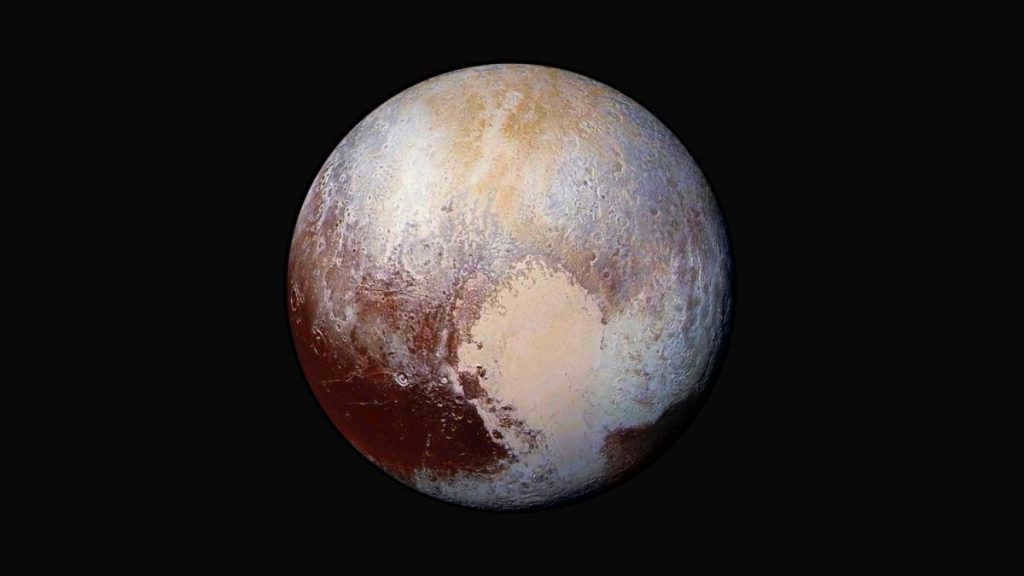
Up until February 1999, Pluto was regarded as the ninth planet in the solar system, but it was later reclassified as a dwarf planet. It now holds the title for being the farthest planet from the Sun. Pluto is characterized by its frigid temperatures and rocky terrain, and it possesses a delicate atmosphere.
Initially, scientists speculated that Pluto was merely a solitary rock situated on the outskirts of the solar system. However, upon the completion of NASA’s New Horizons mission on July 14, 2015, researchers discovered that Pluto is far more intricate than previously believed.
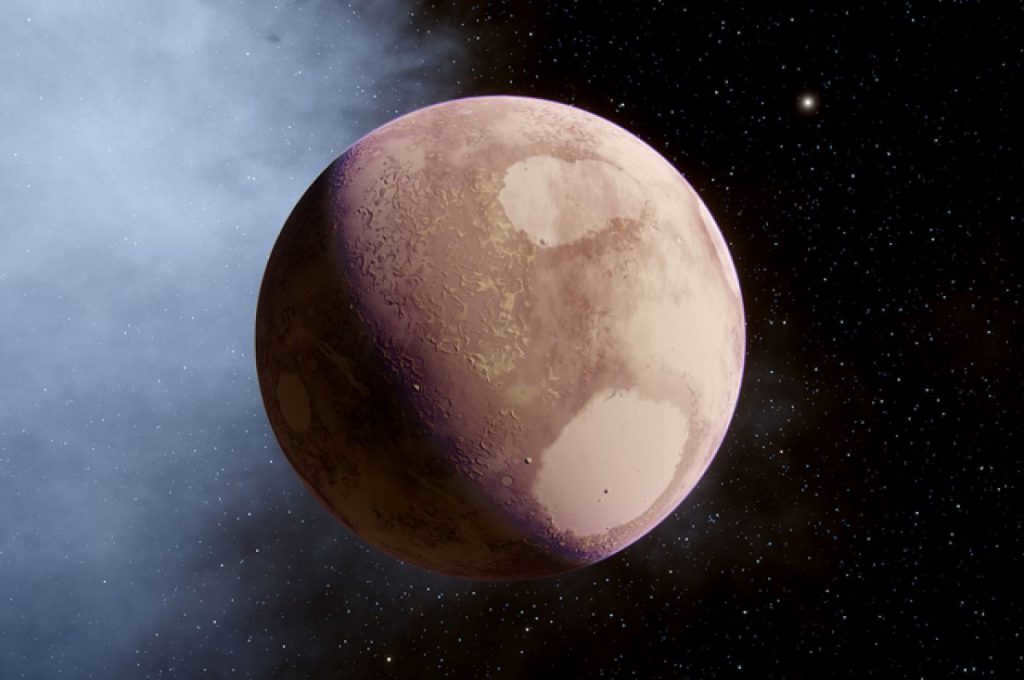
Pluto is a dynamic celestial body with a vibrant icy landscape, featuring glaciers, towering icy water formations, frozen sand dunes, and potentially even cryovolcanoes emitting streams of frozen lava composed of water, methane, or ammonia. The remarkable level of activity exhibited by Pluto suggests that, despite its great distance from the Sun, it may still possess geological activity.
The ninth planet has not been directly observed by scientists. Instead, its existence has been deduced based on the gravitational effects it has on other objects located in the Kuiper belt. This region, situated at the outermost reaches of the solar system, is home to a collection of icy rocks that have remained since the formation of our solar system.
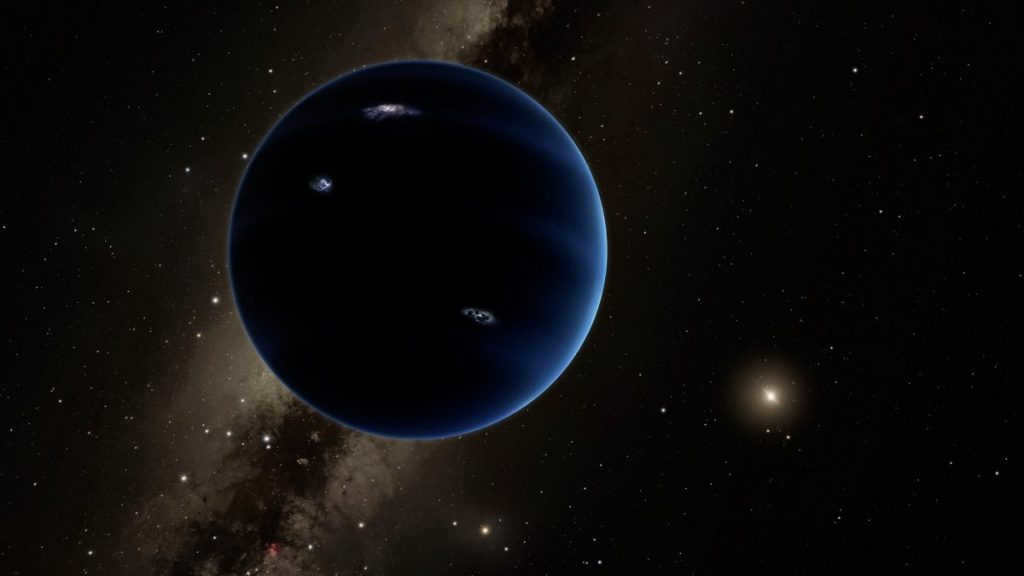
These belt objects, also known as trans-Neptunian objects, possess highly oval or elliptical orbits that are aligned in the same direction. This indicates the existence of a substantial celestial body within the Kuiper Belt, which exerts a significant gravitational force on them.
The presence of Planet Nine has been deduced from the examination of mathematical models and computer simulations involving six other minor Kuiper Belt objects. The alignment of these objects’ orbits suggests the presence of an additional massive planet.
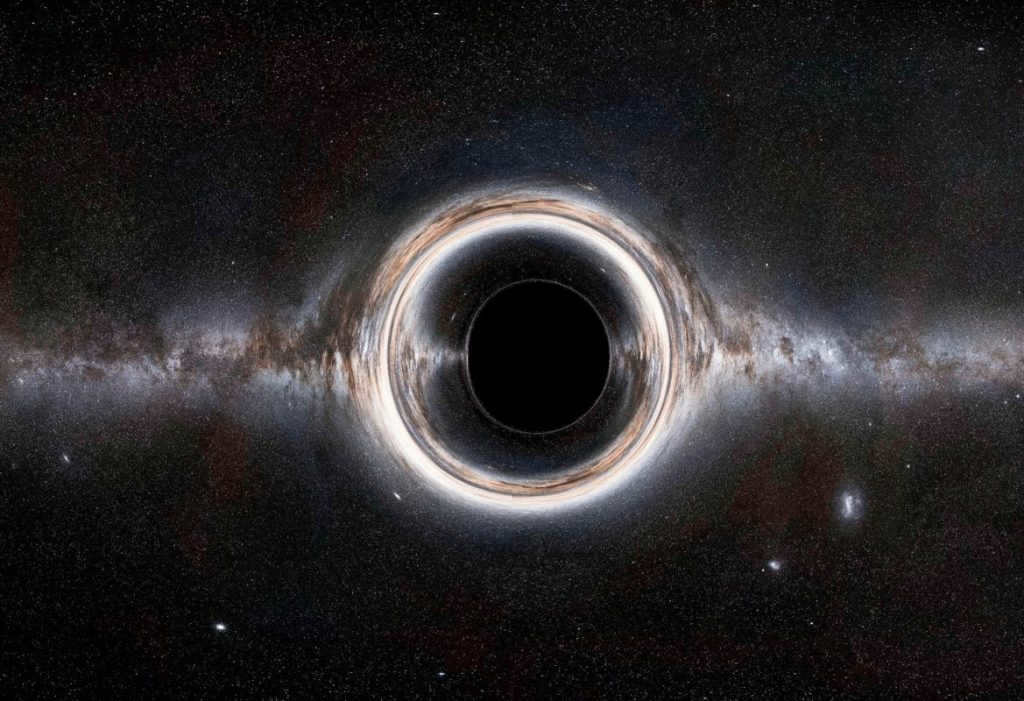
Researchers from Durham University and the University of Illinois at Chicago have put forward a new theory that challenges the traditional notion of Planet Nine in our solar system. According to Jaku Scholz and James Unwin, Planet Nine might not actually be a planet at all. Instead, they propose that it could be a primordial black hole that originated shortly after the Big Bang.
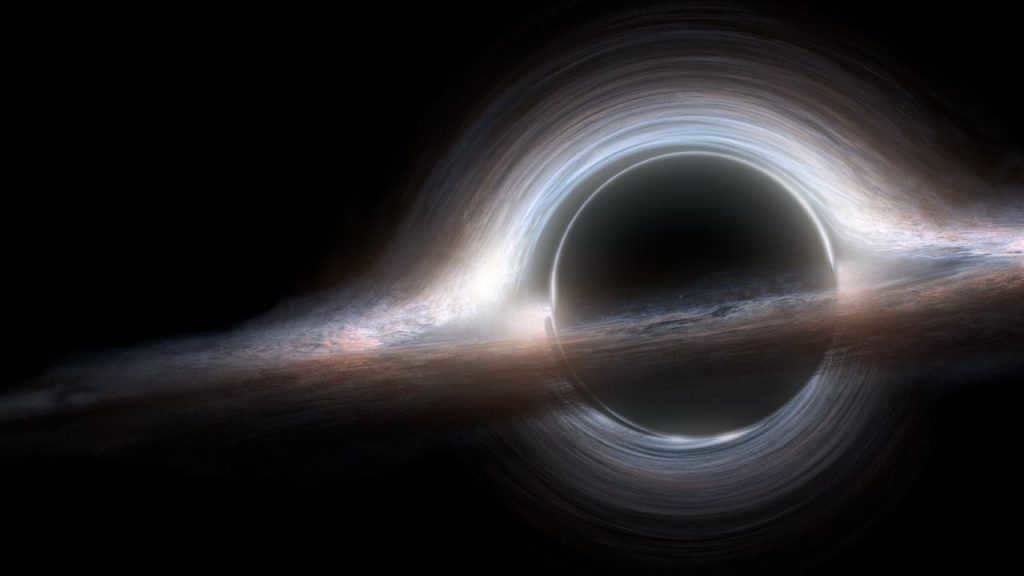
The quest for Planet Nine in our solar system continues as astronomers use the Atacama Cosmological Telescope (ACT) in Chile to scan the sky for potential candidates. Although thousands of sources have been identified, none have yet been verified.
Total number of planets
We have gained extensive knowledge about planets and the total count of planets in the solar system. The confirmed number of planets in the solar system is 8. These planets, in order, are Mercury, Venus, Earth, Mars, Jupiter, Saturn, Uranus, and Neptune. However, there is a possibility of a 9th planet and even a 10th planet being added to the list.
Summary of the Rest
The solar system comprises various entities, such as planets and more. Within the solar system, there is an abundance of meteorites and stardust, which can be found in the spaces between the planets. The planets are divided into two groups – the terrestrial group, which consists of Mercury, Venus, Earth, and Mars, and the gas giant group, which includes Jupiter, Saturn, Uranus, and Neptune.
Greetings, esteemed readers of the KtoNaNovenkogo.ru blog. The solar system is a collection of planets that orbit the Sun, along with the Sun itself and several other smaller celestial bodies.
It solely encompasses natural objects that revolve around a star or certain planets. Naturally, satellites launched from Earth are not encompassed within it.
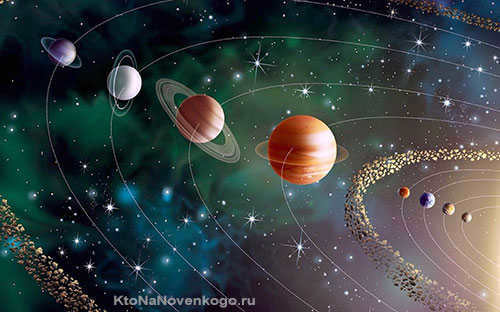
However, let’s examine the solar system more closely and explore its composition. We will discover the various celestial bodies that constitute it, both big and small. We will determine the largest planet as well as the smallest one. We will compile a comprehensive list of all the planets in their correct sequence and examine their respective models and representations.
Planets in the solar system
Put simply (for kids), the solar system consists of the sun and everything that moves around it.
If you want to learn about the Sun itself (the main star of the system), you can click on the link above or get a brief overview at the end of this post. It’s worth noting that the sun’s mass makes up 99.86% of the entire solar system’s mass, underscoring its unquestionable significance.

Counting the Number of Planets in the Solar System and Their Sequential Order
Following the Sun, the planets are the next significant celestial bodies. How many planets make up the solar system? In the past, it was commonly accepted that there were 9 planets orbiting around our star:
- Mercury.
- Venus.
- Earth.
- Mars. Both this planet and the previous three belong to the group of terrestrial planets.
- Jupiter.
- Saturn.
- Uranus.
- Neptune. Both this planet and the previous three are referred to as gas giants.
- Pluto.
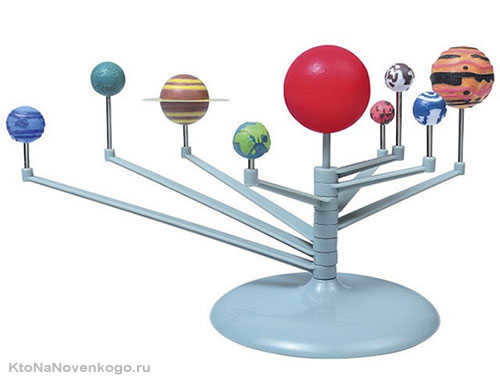
For children to grasp the concept of planets revolving around the sun, there are dedicated models or illustrations of the solar system available, like the one depicted above.
The biggest and tiniest planets in our solar system
Is Pluto still considered a planet?
Pluto used to be recognized as the tiniest planet in our solar system. However, there have been numerous debates recently regarding its planetary status. What are the reasons behind this uncertainty? Here are a few key points that have prompted us to question whether or not Pluto should be classified as a planet:
- Pluto’s mass is smaller than that of Earth’s moon, which is insufficient for it to clear its orbital path of other celestial bodies. Additionally, Pluto’s orbit is inhabited by numerous objects with similar compositions.
- The discovery of a massive and wide object beyond Pluto’s orbit, named Erida.
- The center of mass of the Pluto-Charon system (where Charon is a satellite) lies outside the two bodies themselves.
Extensive research of the Kuiper belt has shed light on many aspects. This region is comprised of numerous frozen objects measuring approximately 100 kilometers in diameter. In comparison, Pluto itself boasts a diameter of 2400 kilometers.
As a result of these groundbreaking discoveries, astronomers were faced with the challenge of redefining the very definition of a planet.
One of the key criteria set forth was that a celestial body must have the ability to clear its orbit of any surrounding debris in order to be classified as a planet. This particular requirement led to the exclusion of Pluto from the planetary roster, relegating it to the status of a dwarf planet.
The planets of the solar system revolve around one another. The initial 4 planets in the solar system are known as the earth group:
- Mercury is the smallest and closest planet to the sun. It takes 88 days for the planet to complete one rotation around the star.
- Venus. It rotates in the opposite direction to its orbital motion. Another planet with this characteristic is Uranus. Venus is the hottest planet, with temperatures in its atmosphere reaching +470°C.
- Earth is the third planet in the solar system from the Sun. It has the largest density and diameter in its group. Earth’s atmosphere contains free oxygen. The planet has one natural satellite, the Moon.
- Mars. The fourth planet has an atmosphere composed of carbon dioxide. The presence of iron oxide in the soil gives the planet a reddish color.
The enormous planets including the most massive one
The four planets belonging to the Earth group are followed by the colossal planets of our solar system:
- Jupiter – the largest celestial body. It possesses a mass 318 times that of Earth. It is primarily composed of hydrogen (H) and helium (Ne), and is accompanied by numerous satellites, one of which exceeds the size of Mercury.
- Saturn. It is renowned for its iconic rings. The planet is orbited by a multitude of satellites.
- Uranus. This planet has the smallest mass among the giant planets. It stands out due to its axis being tilted at almost 100° to its orbital plane. As a result, it can be described as rolling rather than spinning within its orbit.
- Neptune. Its rotational period lasts 248 years. Although it is the last planet, it is not the final celestial body in our solar system.
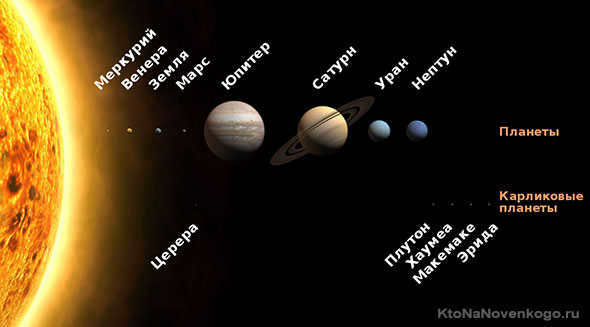
The image above displays the planets within our solar system and their respective sizes, accurately represented.
Minor Celestial Bodies within the Solar System
Asteroids
These celestial bodies are relatively small and orbit around our star. Most of them do not have a spherical shape, but rather resemble blocks of rock. They lack an atmosphere, and some asteroids may even have satellites. However, asteroids are not considered part of the solar system model.
After the orbit of the fourth planet lies the asteroid belt, which extends until the orbit of the fifth planet, Jupiter. Asteroids are the most common minor celestial bodies within the solar system and can range in size from a few meters to hundreds of kilometers. While significantly smaller than planets, these bodies have the potential to possess satellites.
Aside from the asteroid belt, there exist additional celestial bodies known as asteroids. Certain of these asteroids have paths that intersect with the orbit of our planet. Nevertheless, there is no need for concern that the movement of an asteroid will disrupt the alignment of planets within the solar system.
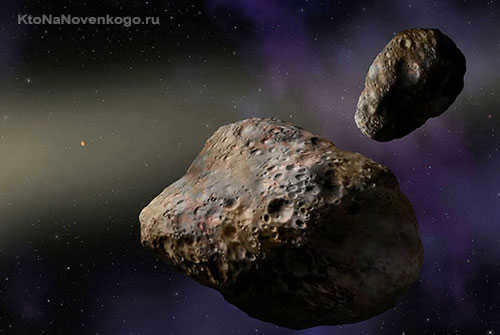
Dwarf planets
A number of asteroids with significant masses and diameters have been classified as dwarf planets. Some examples include:
Comets
A comet is a luminous celestial object that has a distinct head and tail. The brightness of a comet is directly influenced by its distance from the Sun.
A comet is composed of the following components:
- Nucleus: This is where the majority of the comet’s mass is concentrated.
- Coma: A hazy shell that surrounds the nucleus.
- Tail: Extending in the opposite direction from the Sun.
The point at which a body is closest to the star in its orbit is known as perihelion, while the opposite point, farthest from the star, is referred to as aphelion.
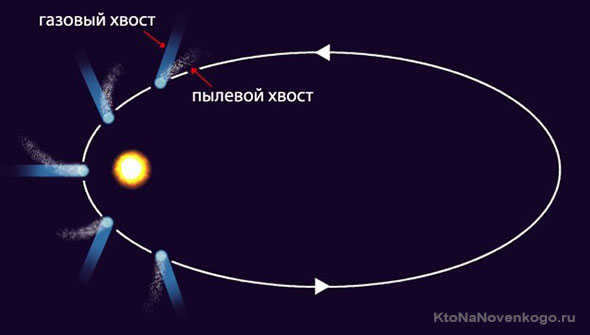
Comets
These celestial bodies that revolve around the sun are called comets. Comets can be made up of ice, dust, and other organic compounds. They often have a visible coma and sometimes a tail that extends millions of kilometers. Comets are fascinating objects that have been observed and studied by scientists for centuries.
Comets play an important role in the formation of our solar system. They are believed to be remnants from the early stages of the solar system’s formation, containing valuable information about its history. By studying comets, scientists can learn more about the origins of our planet and the universe as a whole.
The Sun: A Star in the Solar System
The Sun is classified as a star that is situated in the center of our solar system, serving as a focal point for the arrangement of celestial bodies. It possesses a mass of 1,989 ∙ 10 30 kg, accounting for 99.86% of the entire system’s mass. With a diameter spanning 1.391 million kilometers, it presents itself as a blazing sphere composed of gas. The core’s processes generate an immense amount of energy.
Within the category of stars known as “yellow dwarfs,” the Sun takes its place. These stars are characterized by surface temperatures ranging from 5000 to 7500 K.
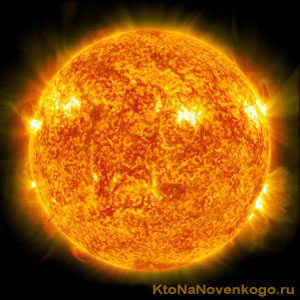
Sun’s Composition
When considering the composition of the solar system, it is important to begin with its center, specifically the center of the Sun. The star can be divided into multiple layers:
- The core. Within the sub-surface, hydrogen atoms undergo fusion, resulting in the release of immense energy. Additionally, proton and neutron fusion into helium atom nuclei occurs in this region. The temperature within the core reaches 15 million K, which is 2.5 times higher than that of the surface. The core extends 173 thousand km from the center of the Sun, accounting for about 20% of the star’s radius.
- The radiation zone. Within this zone, photons emitted by the core travel for approximately 200 thousand years and gradually lose their energy through collisions with plasma particles.
- The photosphere, which is the visible surface of the Sun, has a remarkably thin thickness of only 100 km. This may not seem like much compared to the size of the Sun, but it is significant.
- Above the photosphere lies the chromosphere, an uneven layer of the solar atmosphere. The temperature in this region ranges from 6,000 K to 20,000 K.
- Surrounding the chromosphere is the corona, the outermost layer of the Sun’s atmosphere. The corona is not visible to the naked eye due to its low brilliance, except during eclipses. It has the highest temperature in the entire solar system, reaching 1,000,000 K.
Wishing you good luck! We hope to see you soon on the pages of the KtoNaNovenkogo.ru blog.
This article falls under the following headings:
Opinions and evaluations (6)
Based on a novel theory proposed by Russian scientist Plekhanov (Astronomical Bulletin magazine), planets were actually formed in clusters within the protoplanetary disk, which has been under observation for more than 170 years since the discovery of Neptune. The entire solar system came into existence within this protoplanetary disk and extended beyond it. According to the theory, the existence of a third belt of remote objects, with Sedna being the initial discovery, provides new parameters for the solar system.
In the article “Dwarf Planets,” it is necessary to rectify the name “Cecera” to “Ceres.”

